If you’d like a shorter/summarized version of our posts, read only the “Highlights” section below and stop before “The Captain’s Log“, which is much more detailed, more like a logbook / diary and contains information for our reference as well.
We write the text for our website in English. The multiple language selection feature is an auto-translation by Google. This translation is not perfect; it sometimes uses peculiar words and even expresses things in a very different way than what we actually meant. So, if you’re reading in a language other than English, and you read something strange, switch back to the English version to read what we actually meant to write!
Highlights – the overview
We are now back from our trip to the USA. We head out of the marina and anchor in the bay, unpack our bags, and while Sher starts stowing everything Wim starts to assemble the new little electric outboard motor for the dinghy. By the end of the afternoon it is assembled, but Wim needs to prepare the power supply… super scooter packs will double as super dinghy outboard motor packs!
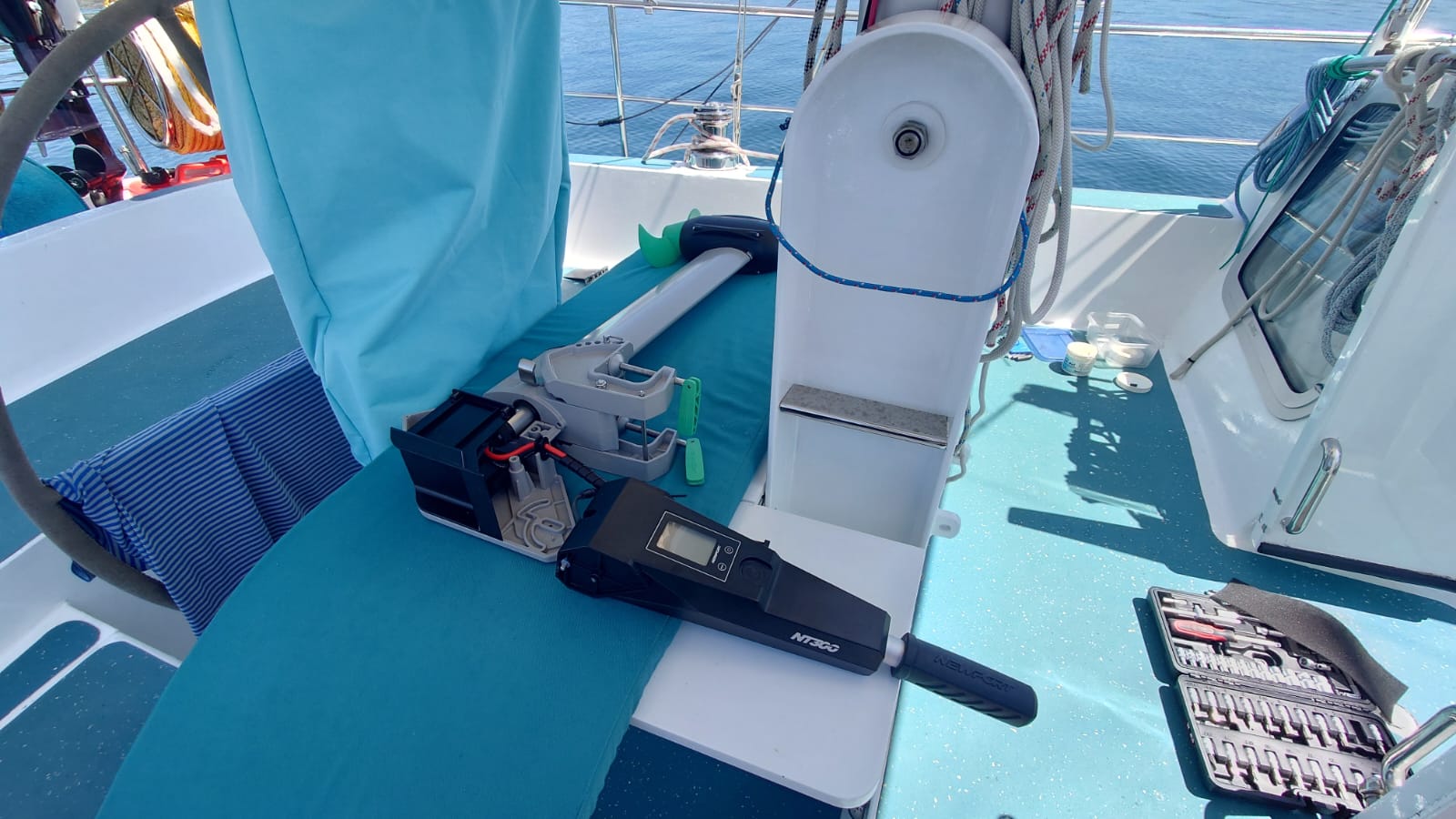
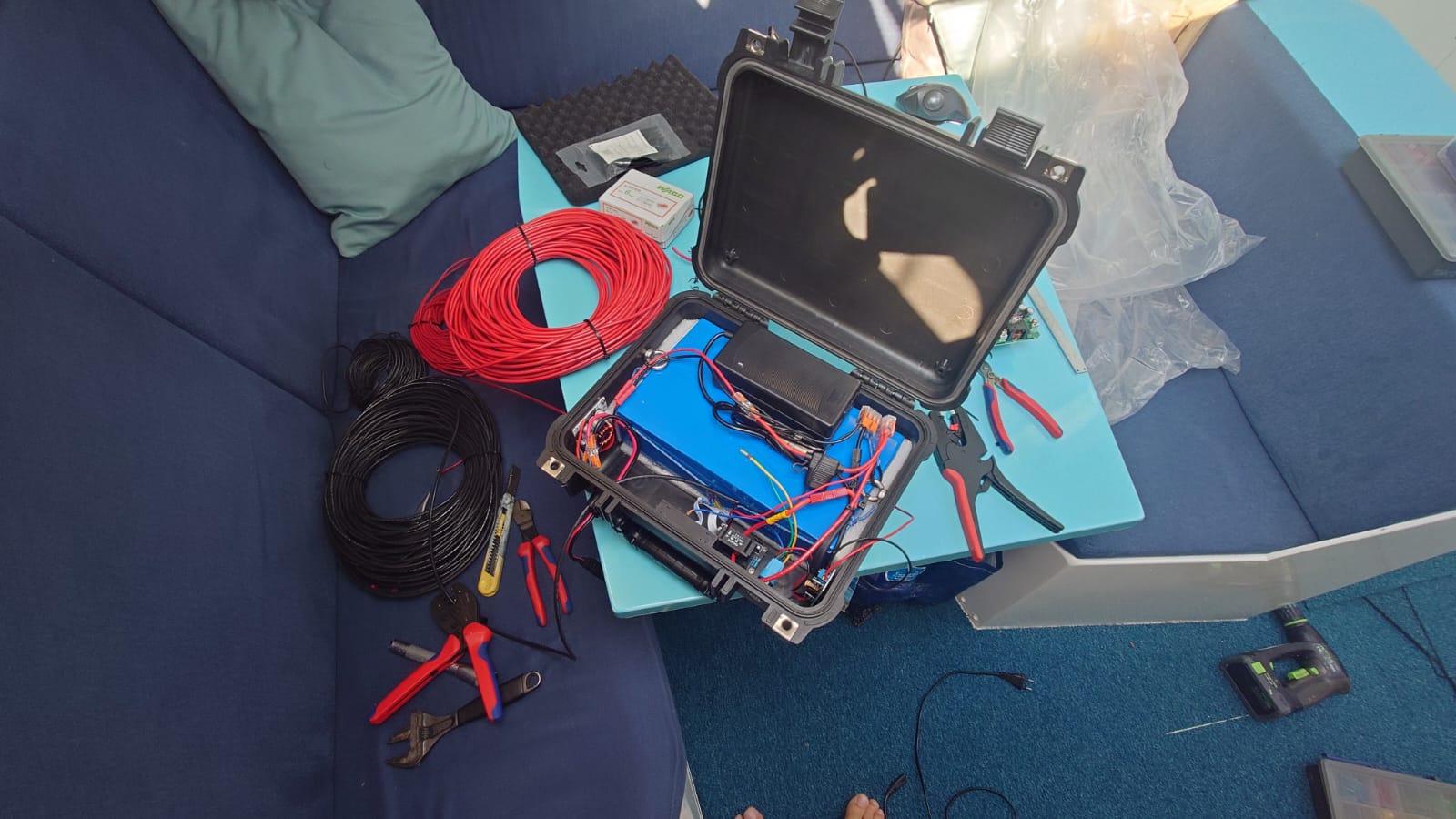
In the morning, Wim starts modifying one of the external scooter battery packs. It’s so convenient that we have all cables and electric materials available!
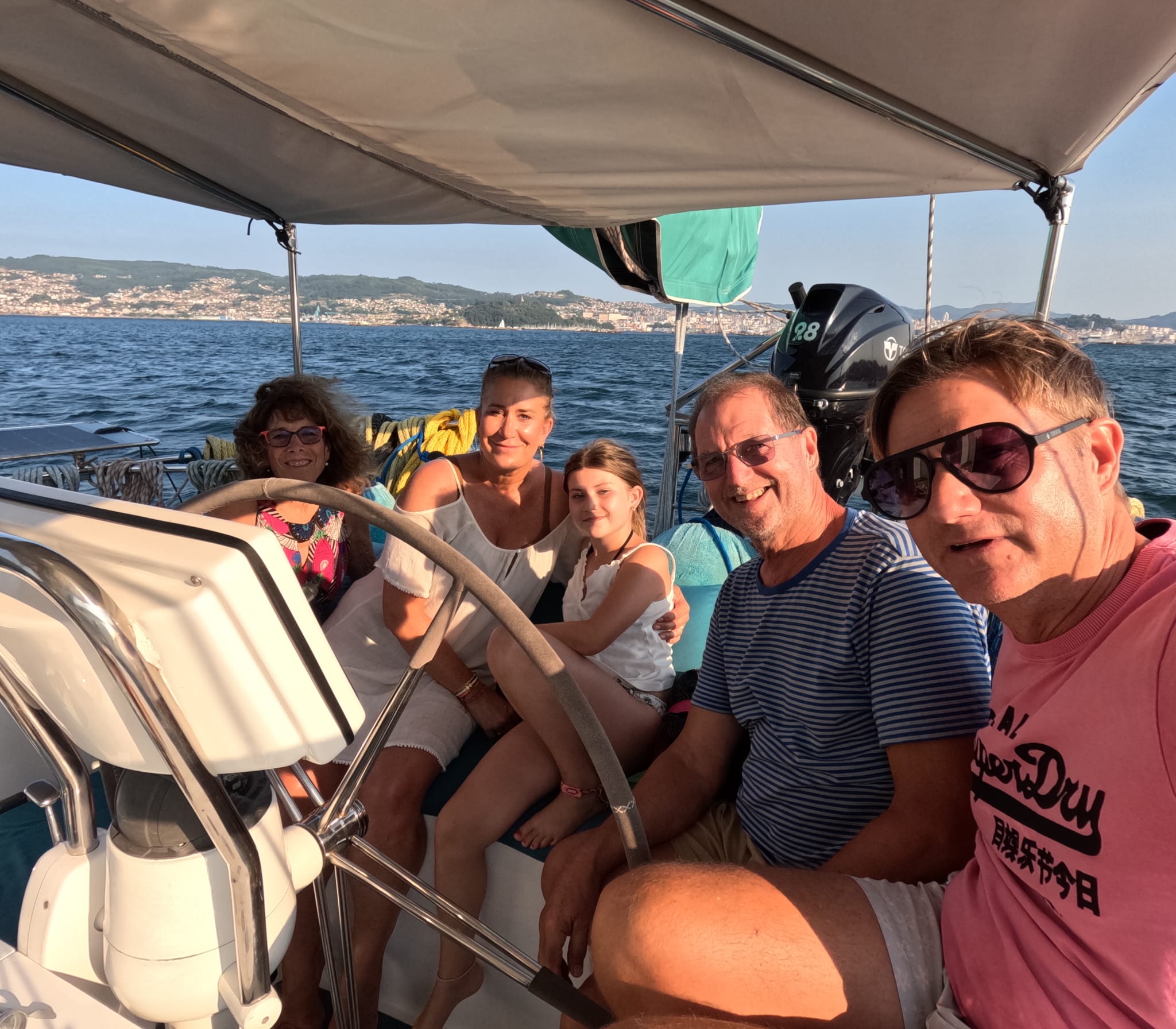
At the end of the afternoon, Wim’s friend René and his family visit us. They make a tour with their camper van and they have parked in Moaña.
We have a lovely cocktail party and bites with René’s wife and their lovely daughter 🙂
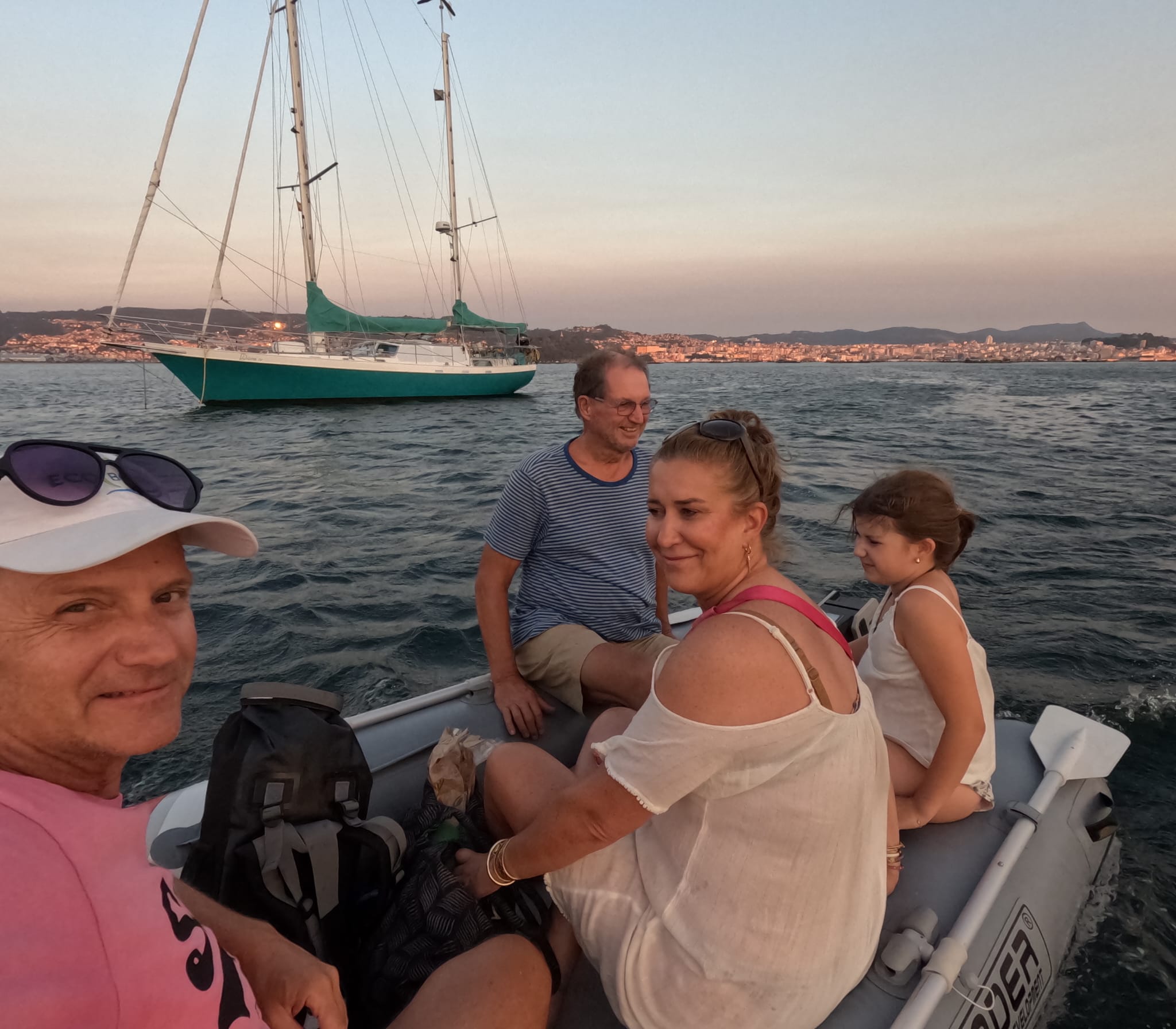
In the evening, Wim brings them back to shore and Annelie (their daughter) drives the electric motor.
Sher gets a big compliment: Annelie says, “Sher is so sweet, I’d wish she were my mother!” 🥰
While Sher continues her sewing projects, Wim modifies the second battery pack to fit the high power DC-DC converter in. But, bummer! The second DC-DC isn’t working. We complain to the Chinese manufacturer and await their response… In the meantime, one battery is okay for the short dinghy rides to shore. We have about half an hour at full throttle, about 2 hours at half throttle and about 4 hours at 30% throttle. So, that’s more than enough.

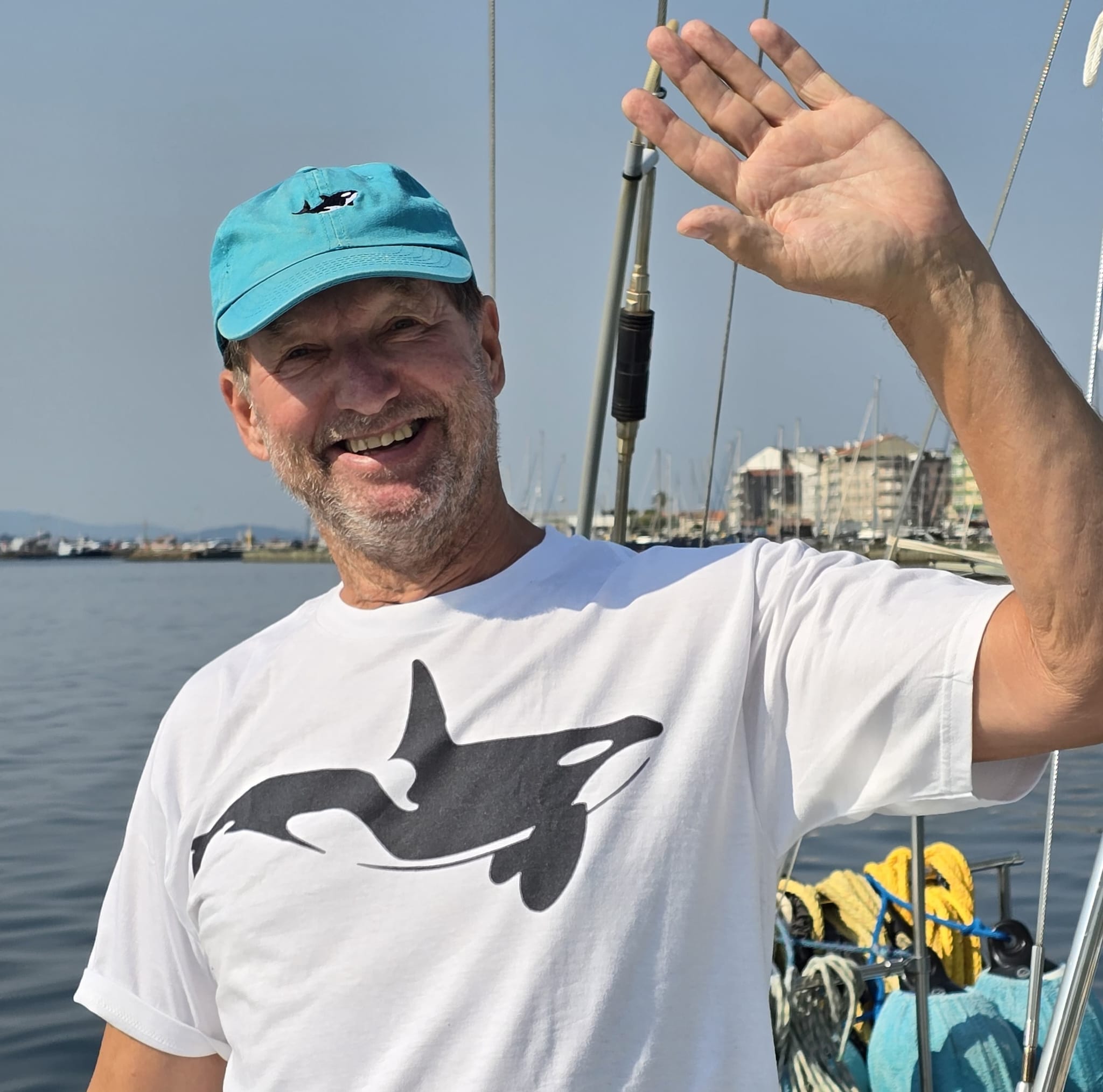
We get a message from within the Viveiro WhatsApp group saying there was an Orca “attack” near Ria de Vigo. Wim says, “Yay! My friends! Say hello to them!”
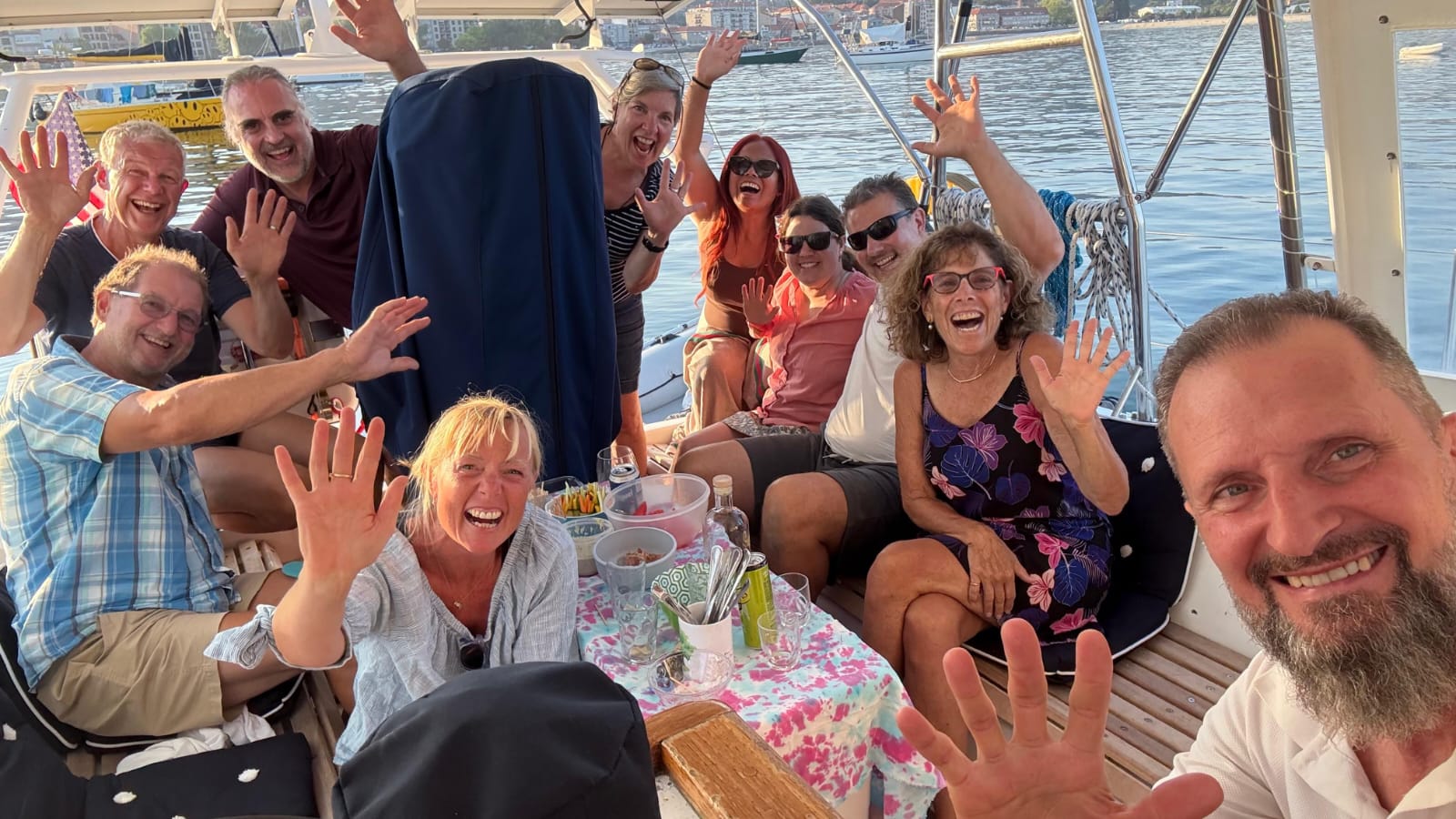
A few days later we have happy hour on the ‘Bird Song” with all members of the “Friends of Manoliño”-WhatsApp group. They are all at anchor here, unique! Although Manoliño has sadly passed away, we have a wonderful time with all these nice people. At the end of the party we have a toast with Sher’s precious 40-year old white Port to Manoliño and express a wish he’s in dolphin heaven now, playing with anchor chains!
The next days, we’re relaxing from all the traveling and socializing and we enjoy the beautiful weather while we do little projects.
Sher has her ‘Pfaff’ sewing projects and Wim is installing the PY Pilot autopilot system (PY-Pilot).
One thing that has to be done is cleaning the propeller. We have no antifouling paint on the prop and 2 weeks in the marina has gathered a lot of growth (barnacles and weed). Sher takes a dive with our Hookah dive system and cleans it.
Further deep in the Ria de Viga, there’s an island, Illa de San Simón, for which we need a permit to visit. We decide to go there with Bird Song tomorrow.
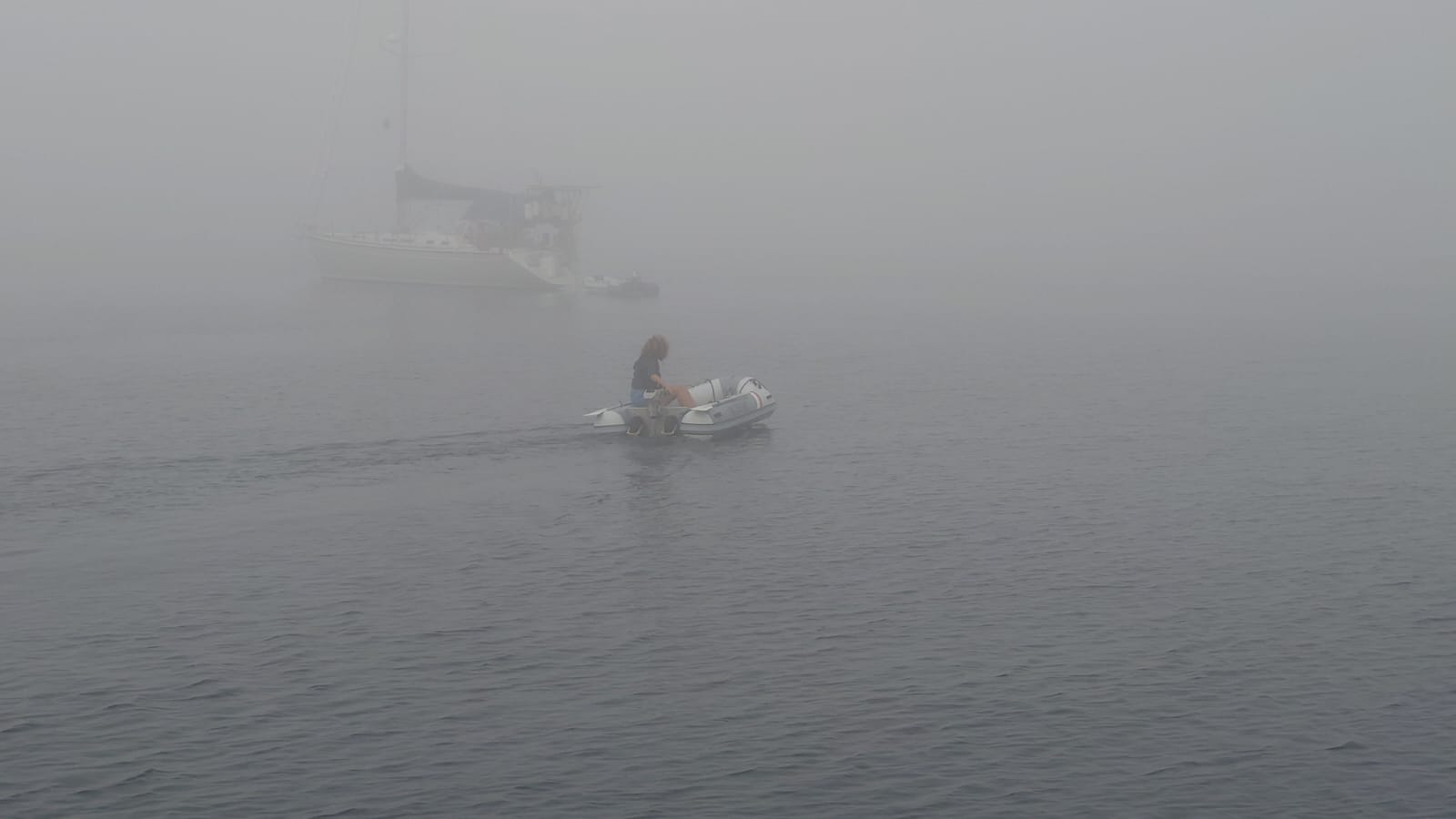
When we wake up, there’s a thick fog. The hot air from the Spanish mainland meets the cold ocean and that generates fog.
Sher bravely goes out for provisioning however! Using her navigation app to find the marina in the fog 😅
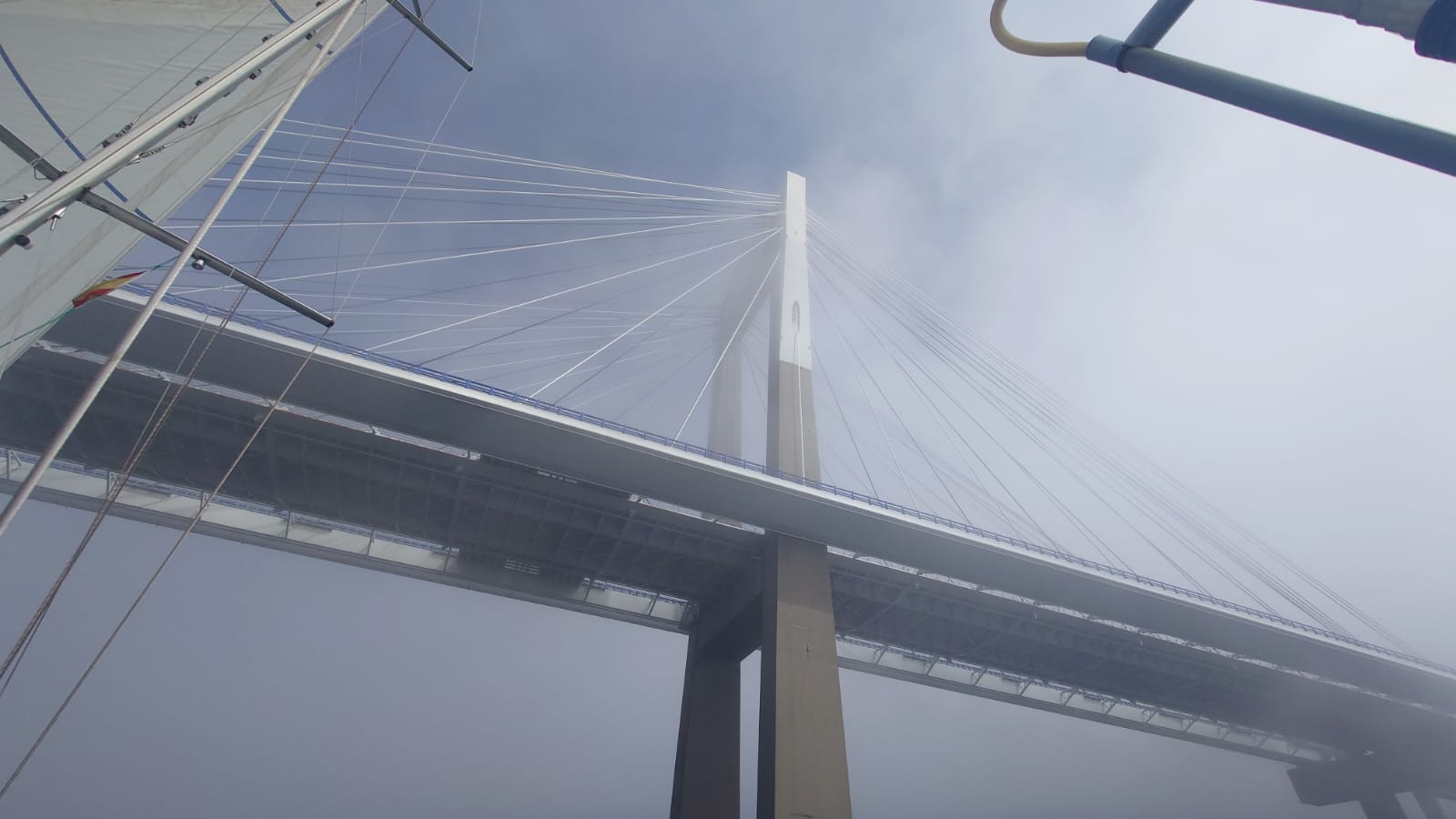
In the afternoon, the fog starts clearing and we sail under the bridge which is 3 times higher than our masts. The wind then gusts up to 30 knots, funneling through the Ria.
After the bridge, the wind stays 20-25 knots so at full speed we approach the island. The anchorage is behind the island and as soon as we turn we have complete shelter from the wind. There are many motor boats anchored with young people partying. Hm. We have our doubts… While we drop our anchor with a view of drunk guys pissing overboard these yachts… The first time our anchor doesn’t hold. Mud and sea grass. The chain and the fore deck are a dirty mess… Next try. Again no hold. Next try, another spot. No hold. Hm. Let’s find another place. We motor against the decreasing wind to the opposite side of the Ria and anchor in a shallow area (2m).
Sher paddles around the bay and sees dolphins! She tries to get closer to them but they are much faster! 😅
Wim finishes the wiring of the PY-Pilot system. It was a LOT of work and pulling wires through to mount compass and controls.
But it works! Yay!!!
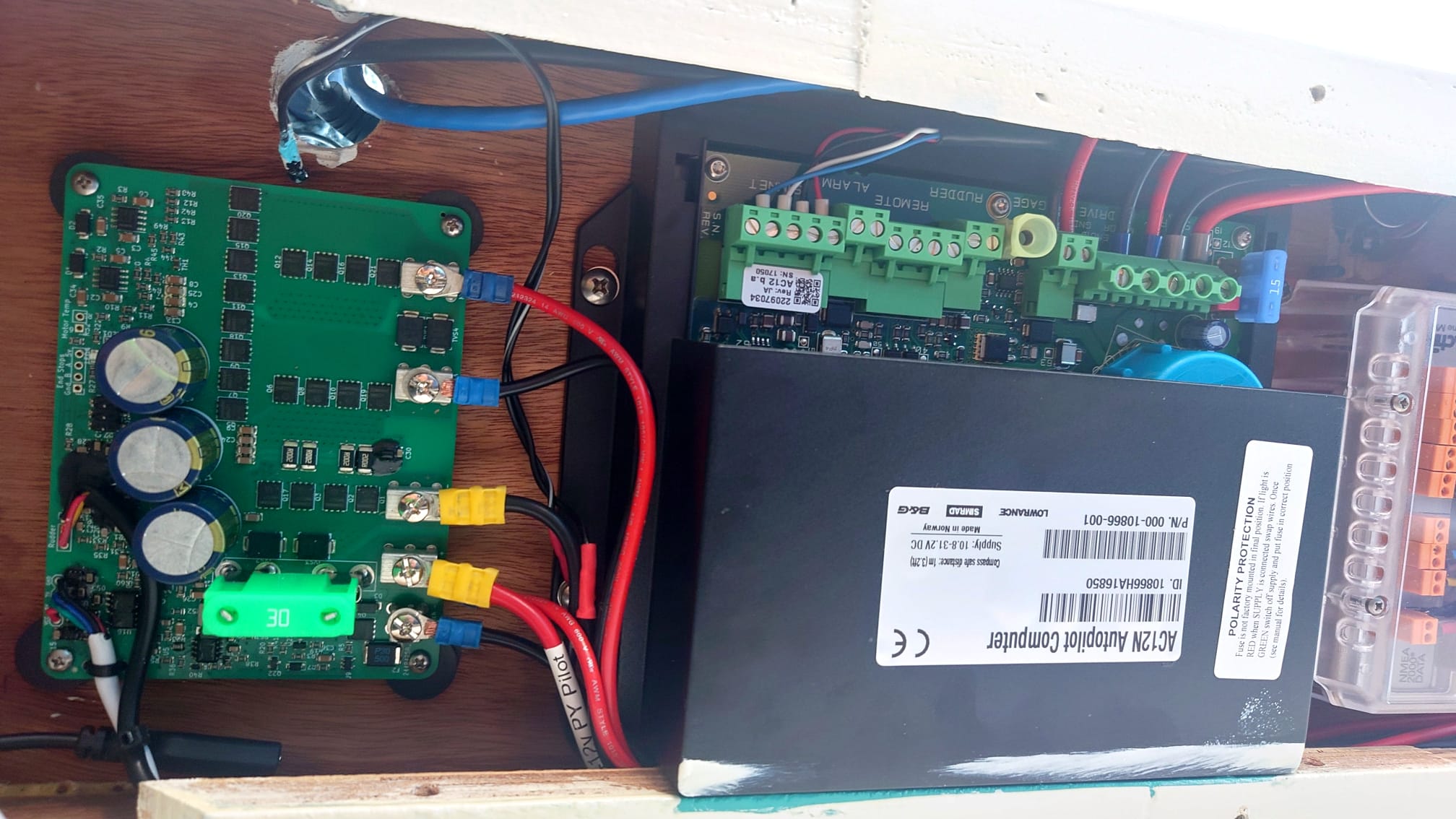
Now, all the hardware is installed and functional. Next is playing with the software and testing it at sea.
In the Netherlands, our grand daughter Elin says cheers to that! 😂
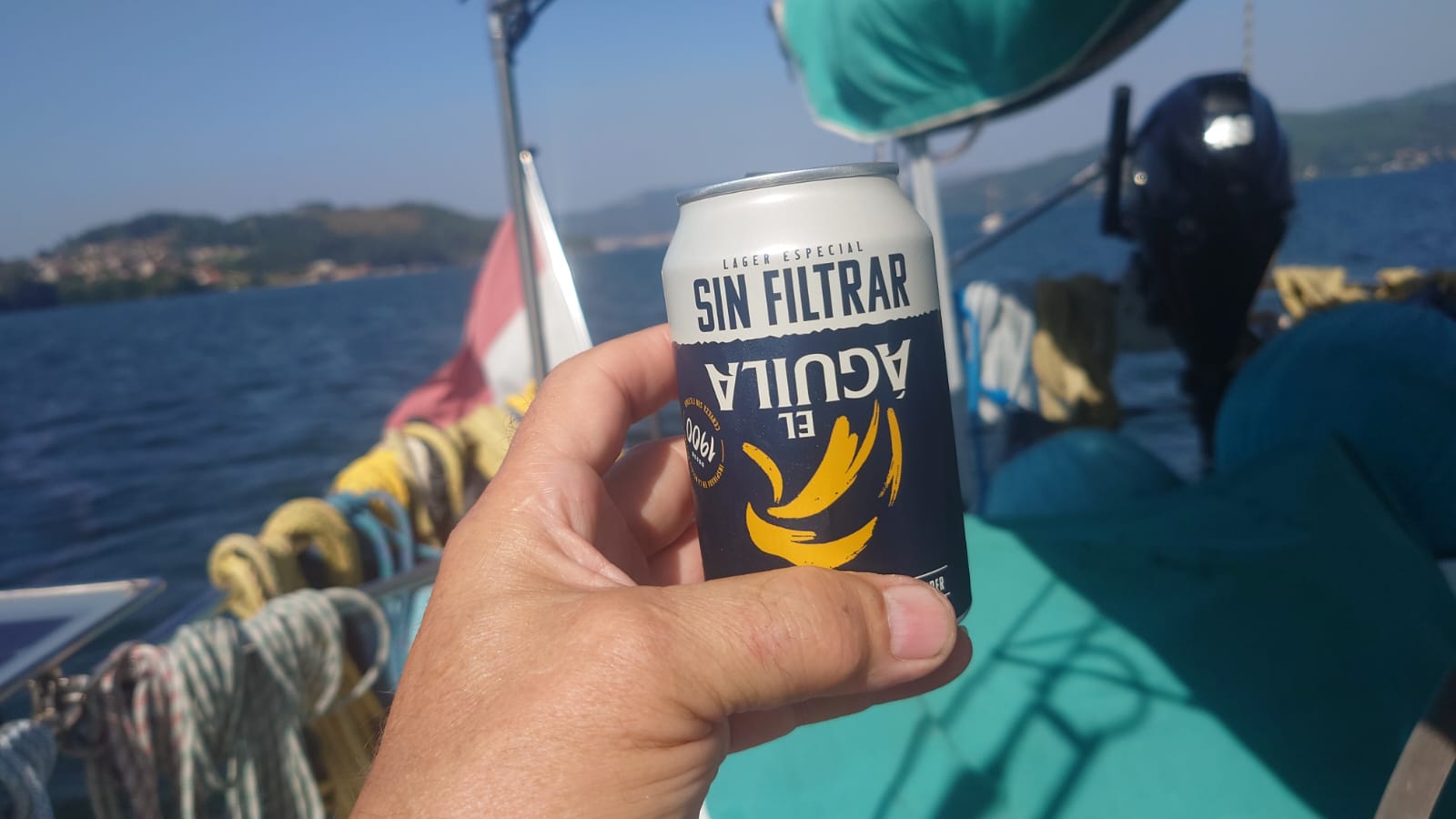
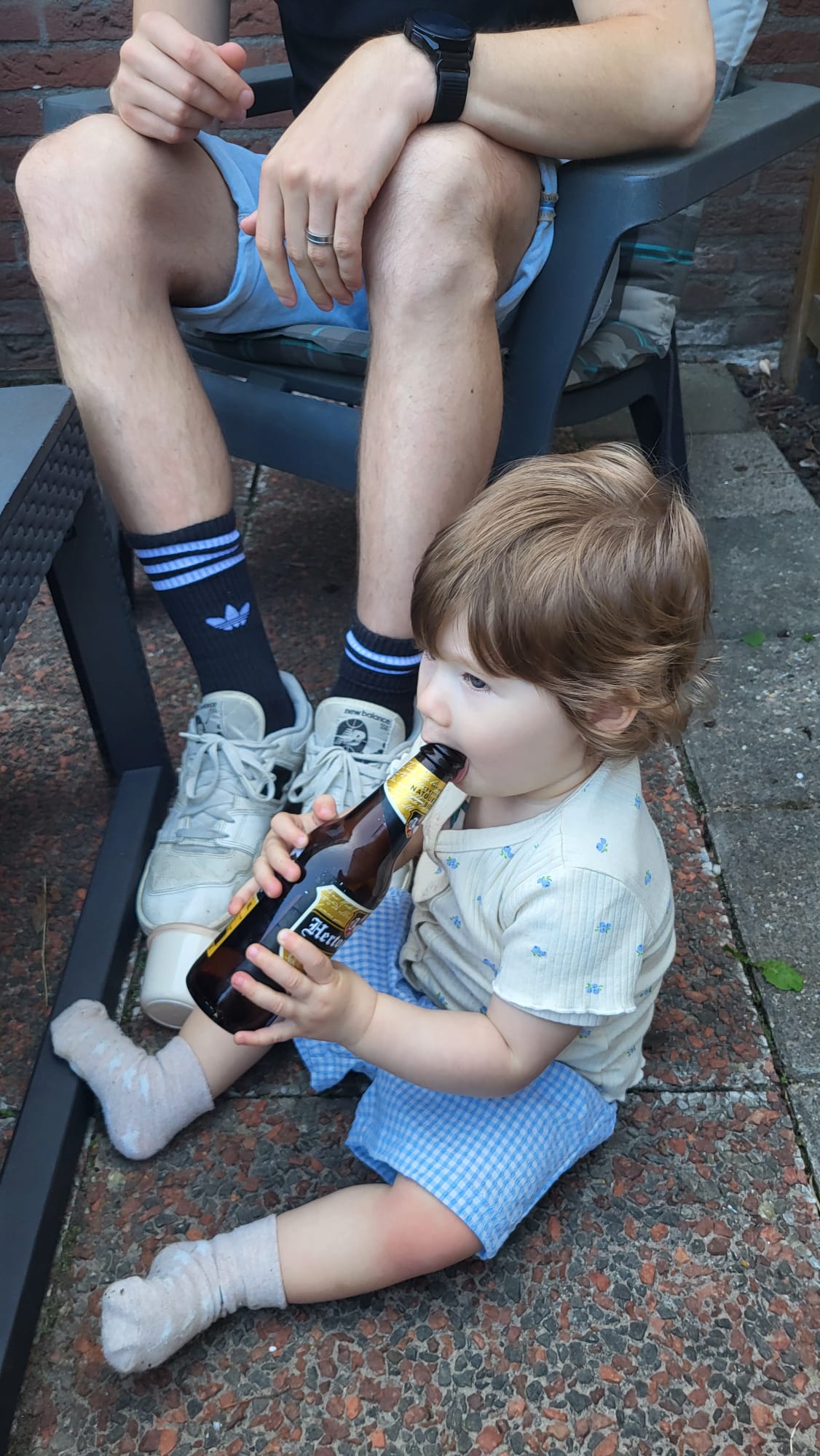
One of the things we ordered is a stand for our new electric outboard. Only, it’s made for 25mm railing and ours is 30mm. So, Wim has to mill it to the right size… and now it fits perfectly!

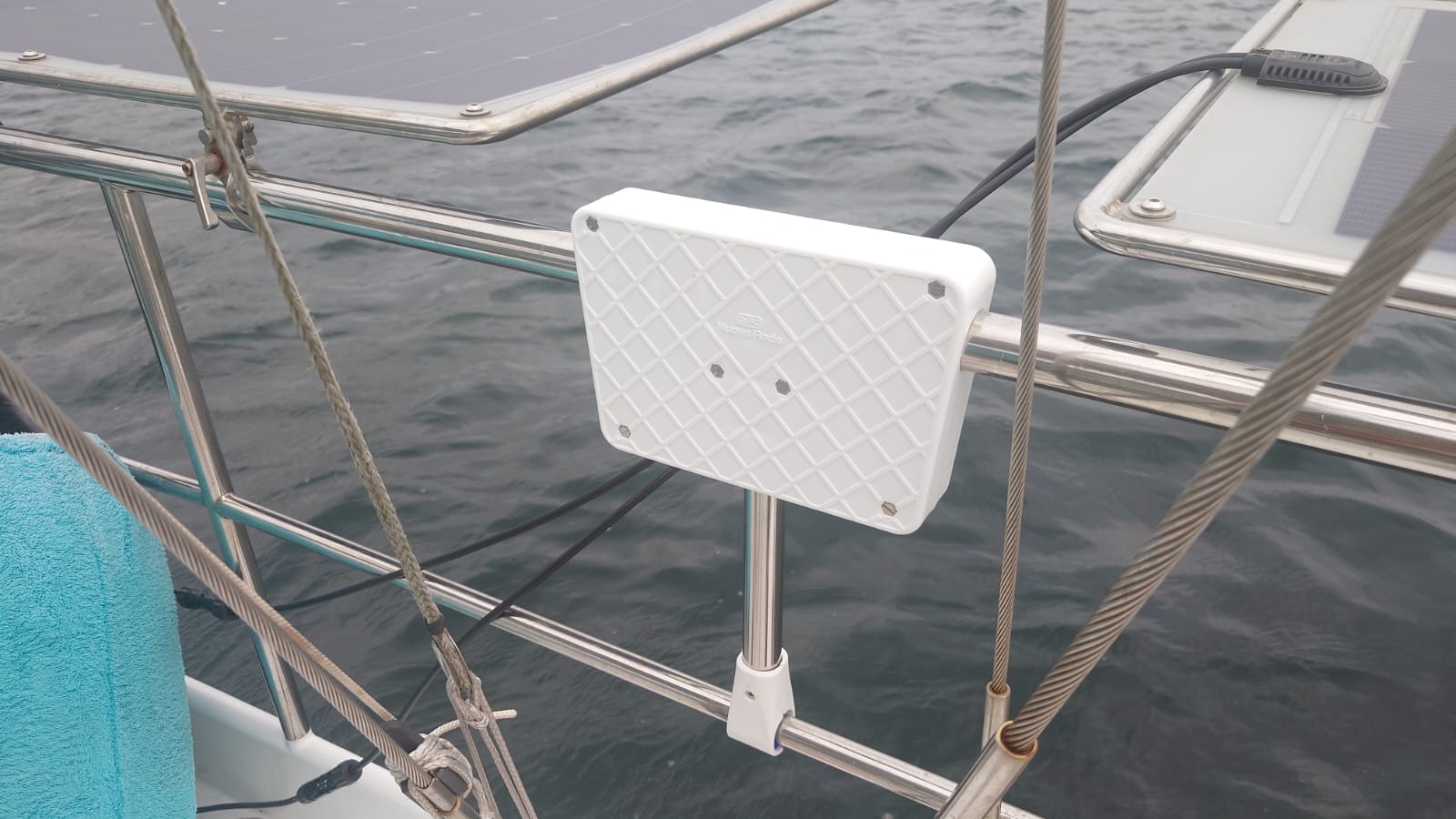
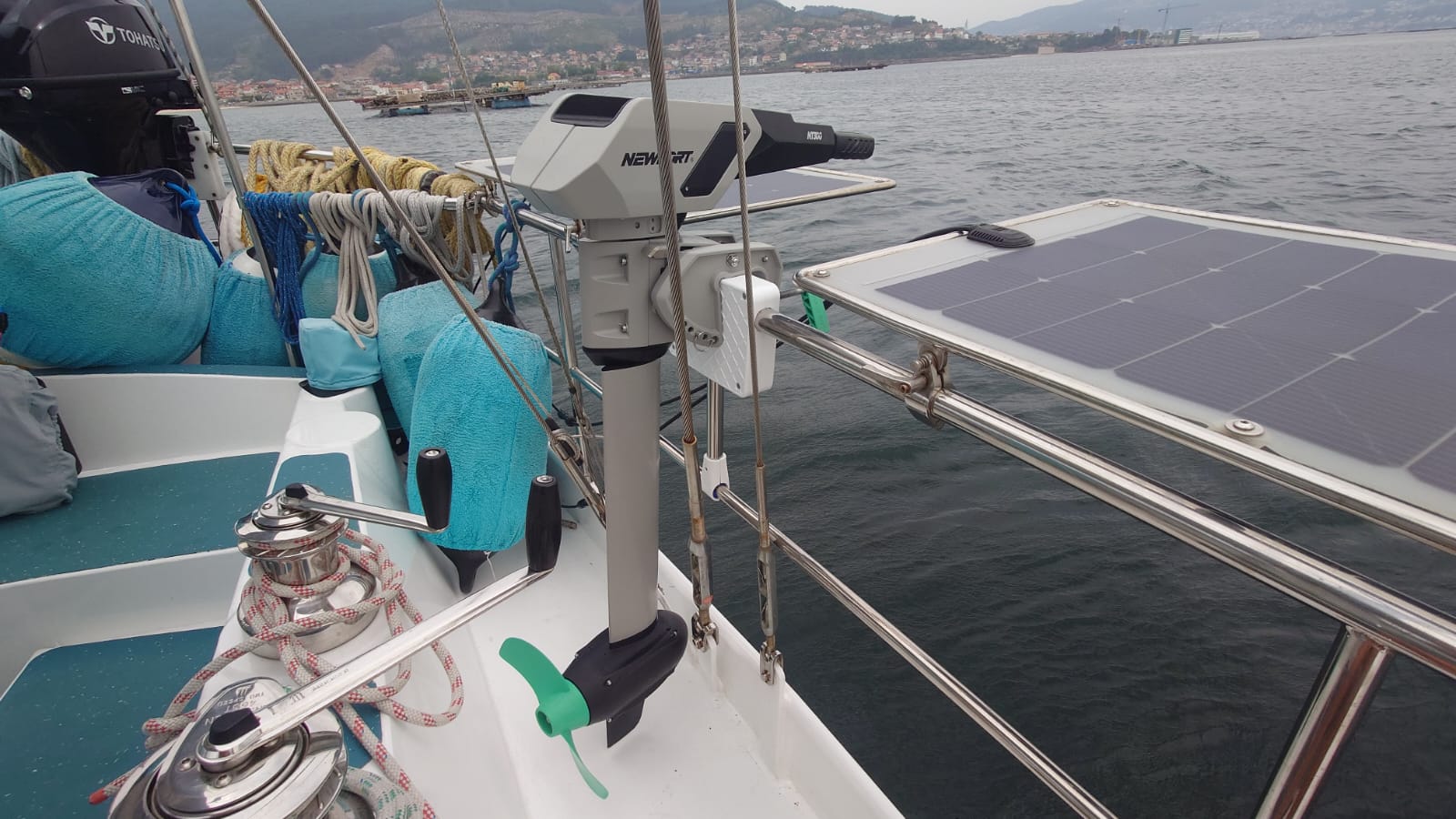
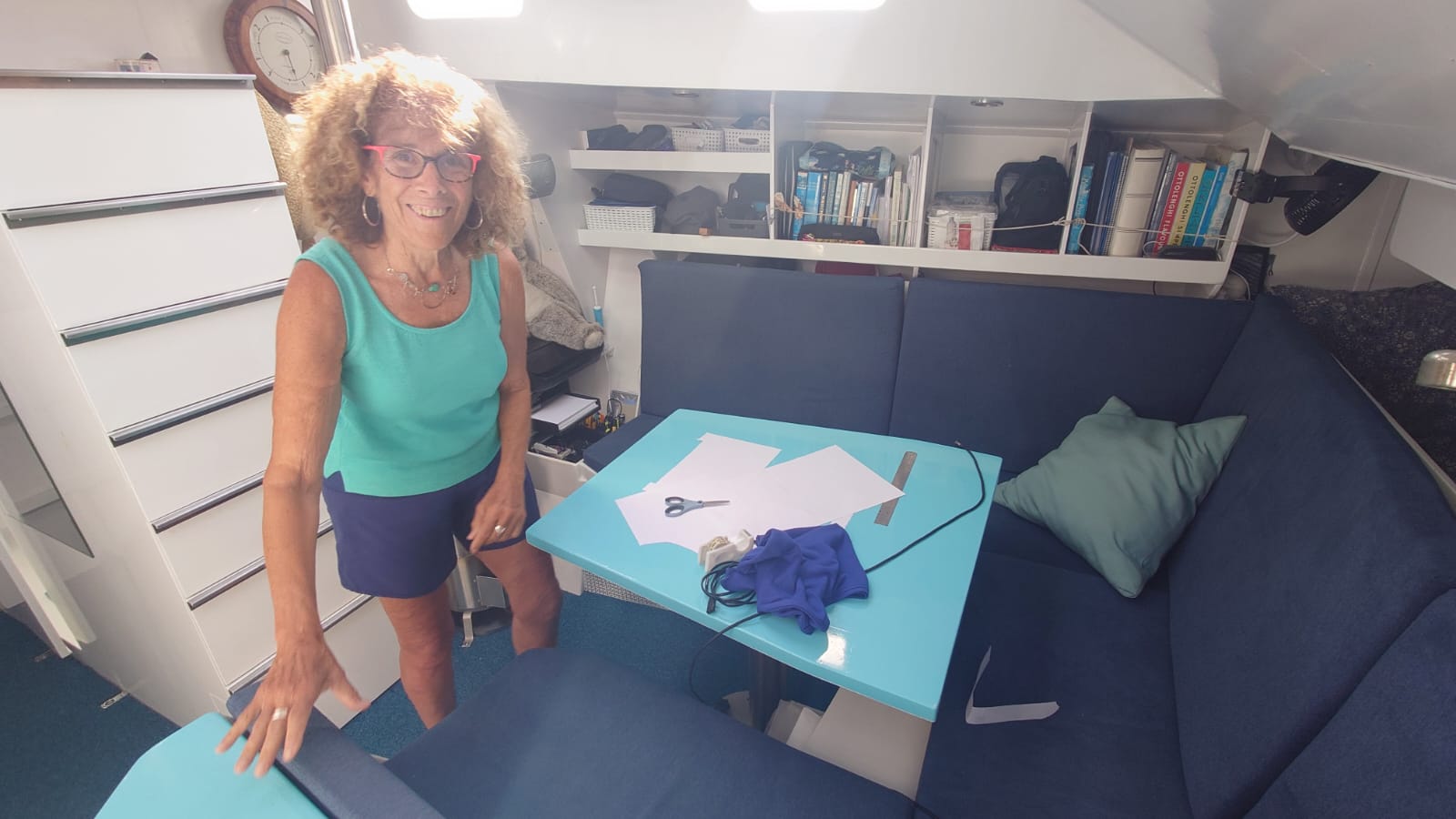
There’s always something to do on board Dione IV. Sher is enjoying her sewing projects with the patterns she got from Michele and the fabric she bought in Vigo.
We’ve ordered a small sandblaster gun on Amazon, as an experiment. When we have rusty spots or damages to the paint it’s hard to prepare the surface for primer. All rust has to be removed or else it will continue rusting under the new paint. Grinding with the electric grinder is a good way, but that removes steel around the rusty spot and the steel sparks get everywhere on deck and start rusting where they land. Besides that, the surface is a bit too smooth for the primer to attach well after grinding.
So, the idea is using the small sandblaster is more local, just removing the rust and leave a nice coarse surface.

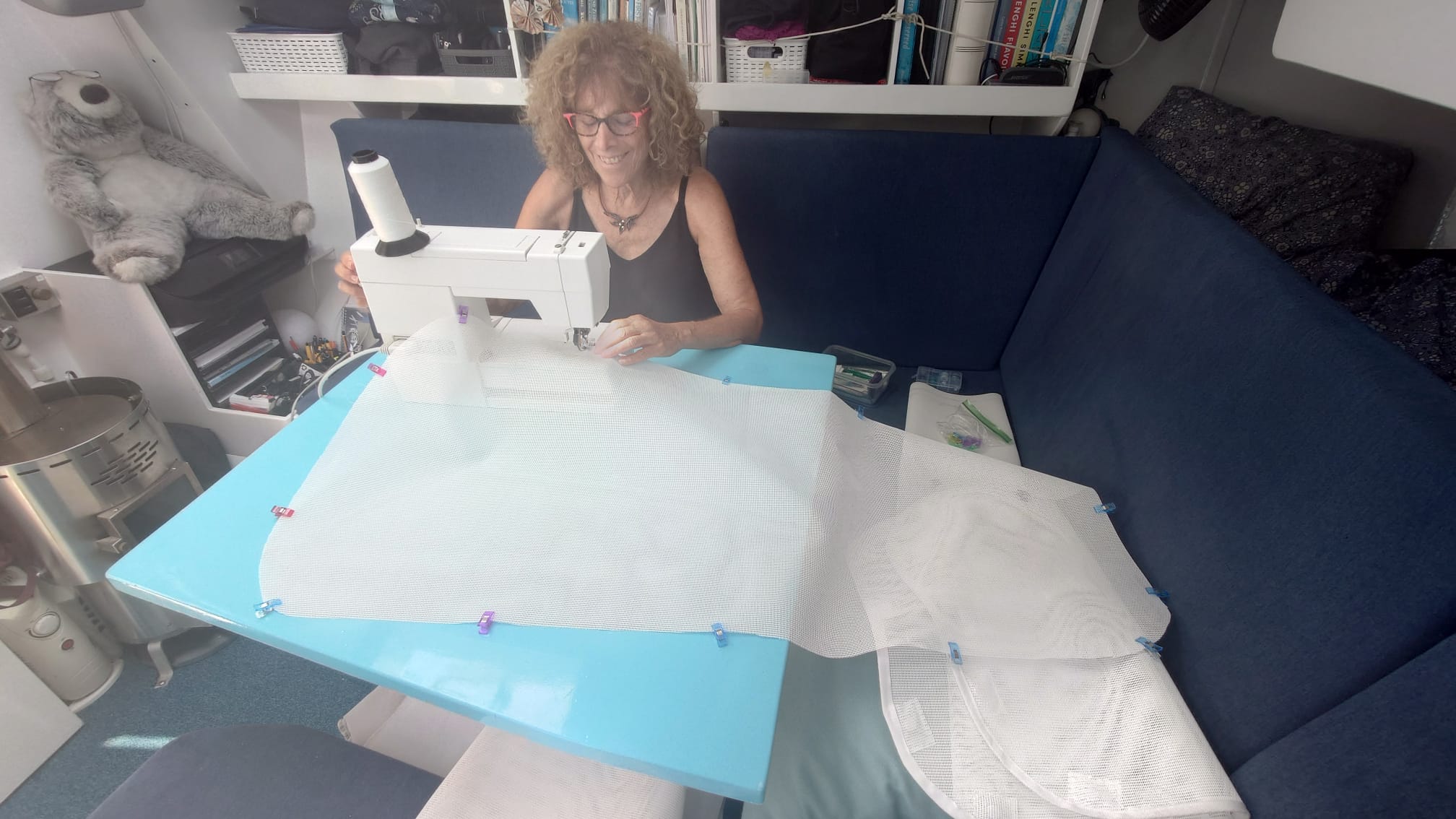
The last few days, Sher has been sewing the Sailrite “Phifertex” mesh pieces for our decksalon windows. This mesh blocks the sun for 70% so that it doesn’t get too hot in the decksalon.

She sews little pockets with a small plastic-encased neodymium magnet inside all around the edges. So, the mesh sticks to the steel and is easy to remove.
And there’s still a view from the inside out… easier to see out than in, so also affords a bit of privacy if we are in a marina.
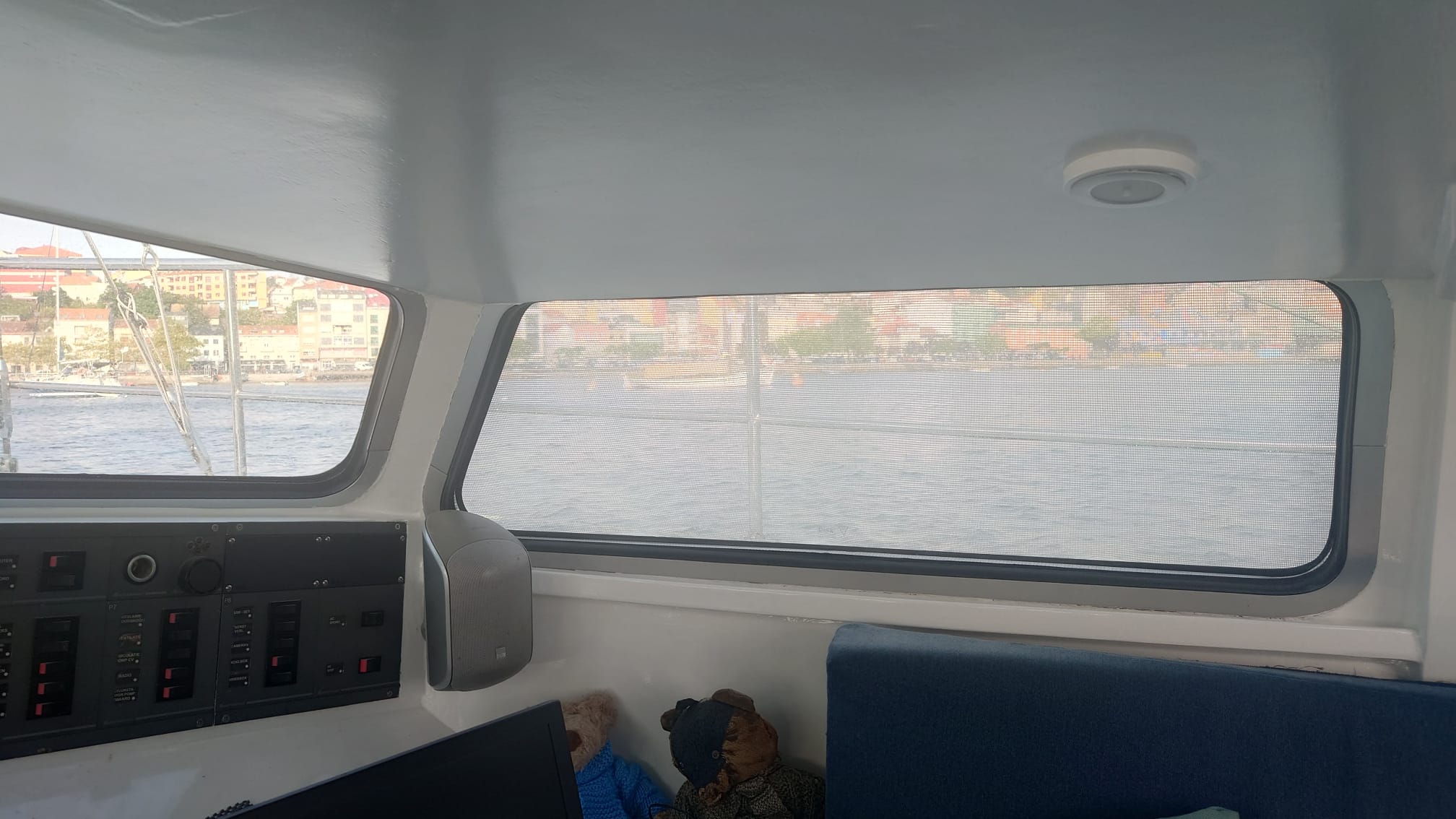
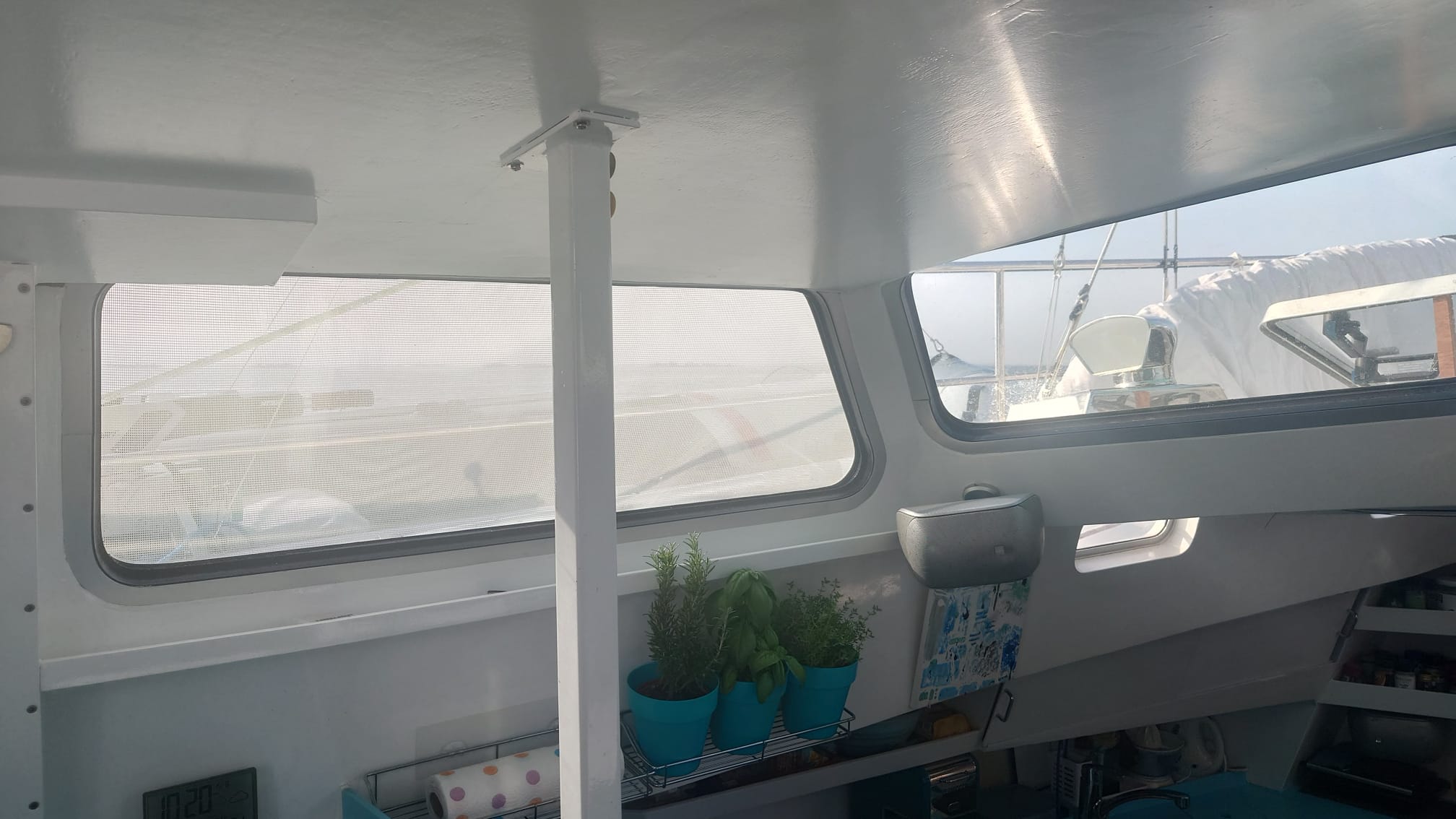
Today, August 15th, is one the most important festive days in Spain: La fiesta de la Asunción de la Virgen. The assumption of Mary.
In the morning, there’s the swimming contest. There they go! We expect a lot of celebrations, processions and music during this day and fireworks at night but no! Everything stays silent… Obviously Mary ascends to heaven very quietly… 🤔
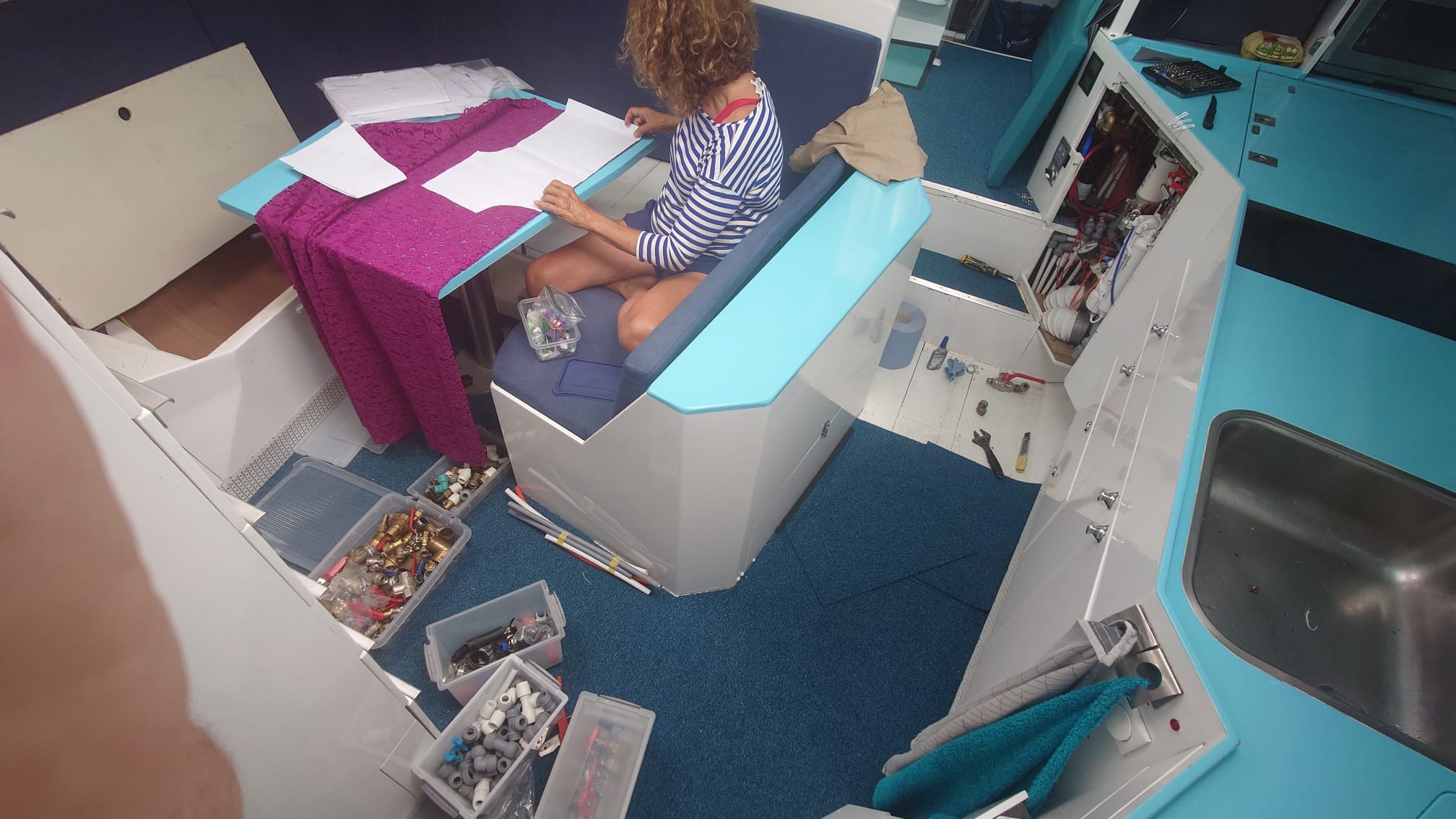
In the morning, there’s fog and low clouds. A nice day for some projects 🙂
Sher continues her sewing and Wim gets out the boxes with plumbing stuff.
Wim works on more projects on our list… first, adding a ground switch and LED light for the SSB radio. Click on: SSB-Ground-Switch to read the write-up in the Captain’s Log for more details. Next, he modifies the emergency cooling system for the engine.
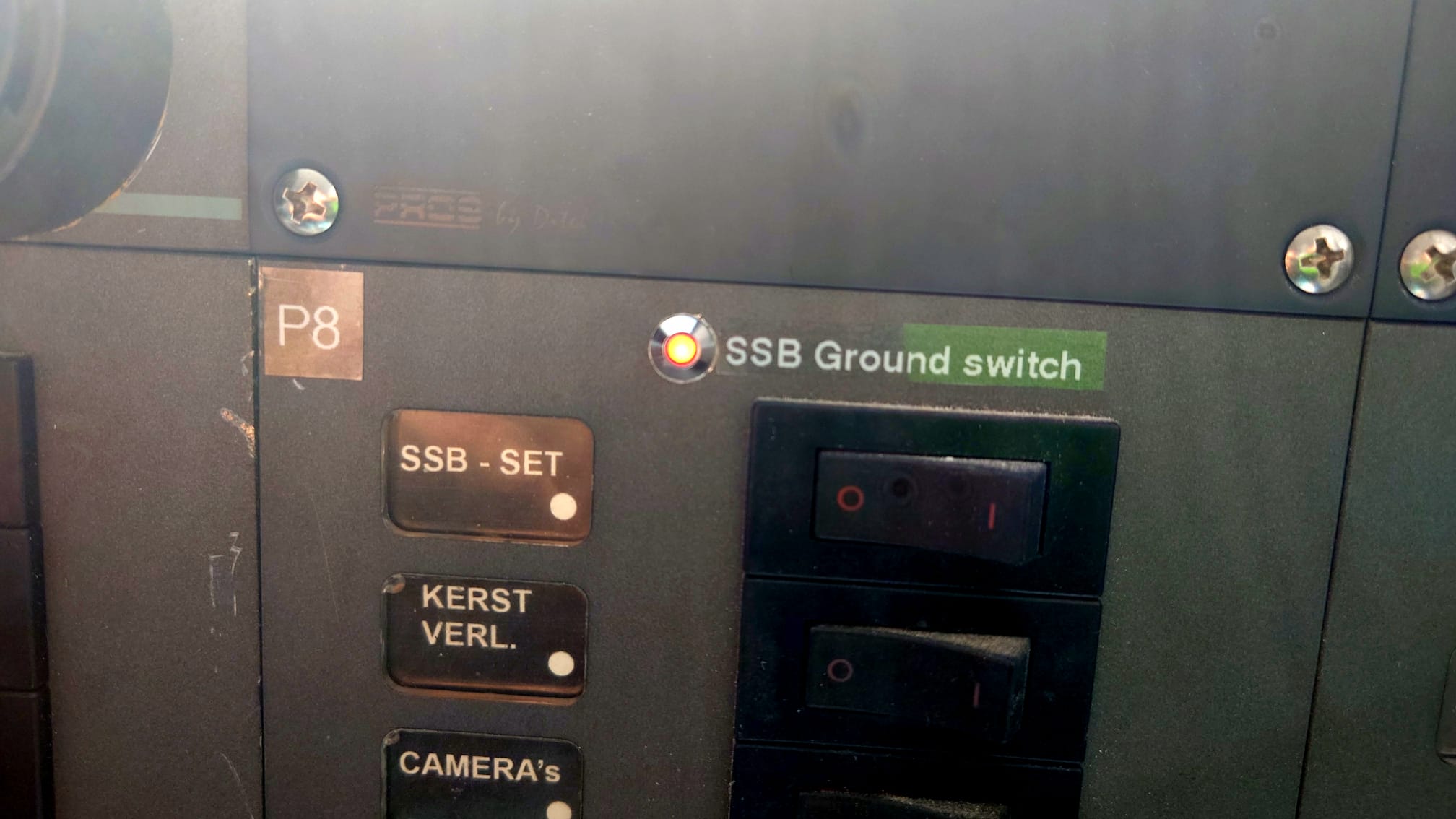
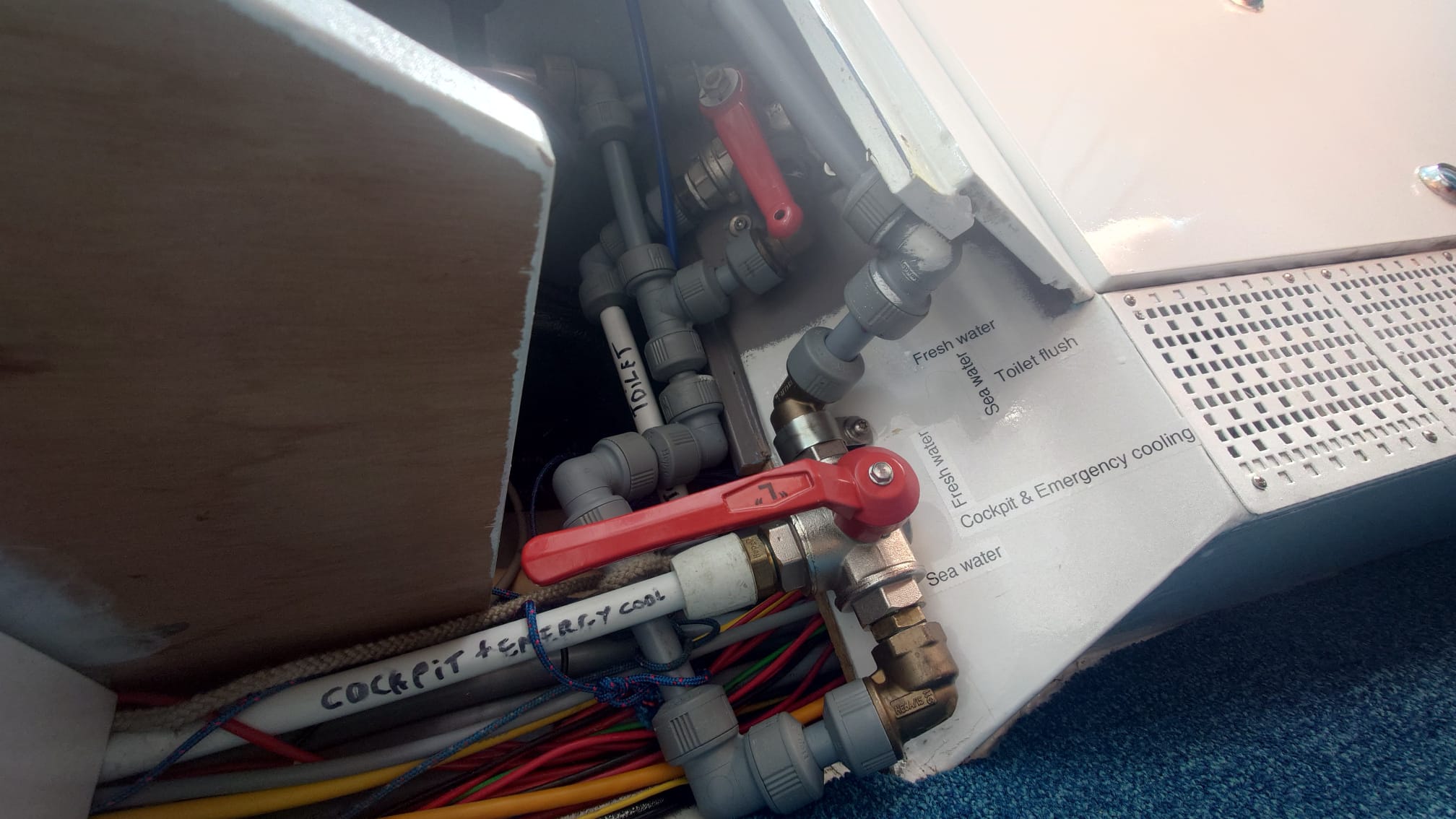
He added the ability to cool the engine with fresh water as well as with sea water. Click here for more details on the emergency engine cooling.
So, now we have two 2-way valves:
- One for the toilet (sea water or fresh water) that was existing
- One for the cockpit tap and emergency cooling.
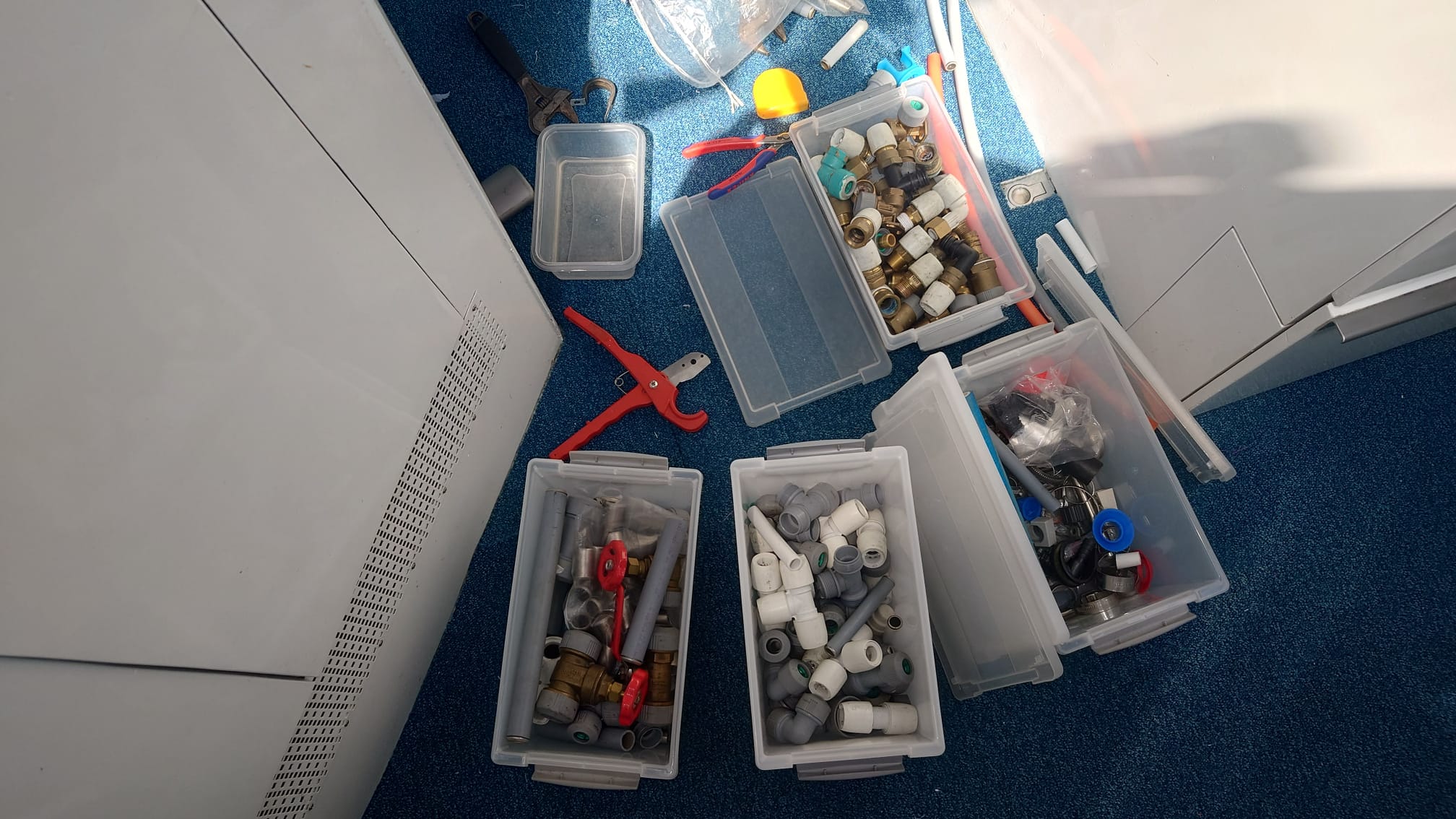
Then it’s time to take out the plumbing boxes again. We want a small modification in the flush system for the toilet. The water shut-off valve was in a place hard to reach and we want it more accessible.
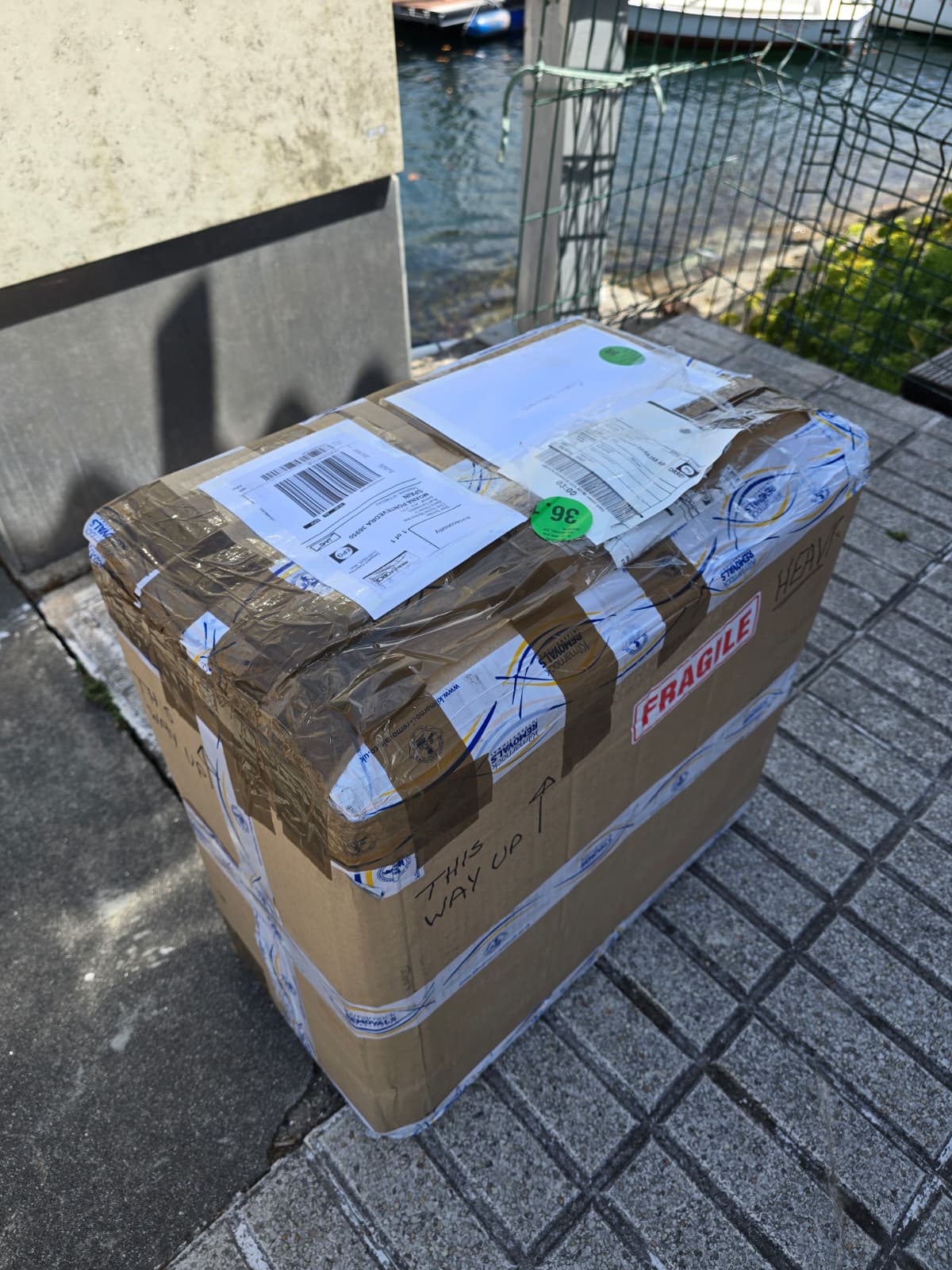
And finally!!!!… we get a message from the marina office. The package we have been waiting for (and the reason we have had so much time to do projects) has arrived!
We jump in the dinghy and race into the marina. Yes! There it is, finally. The Sailrite sewing machine!
It was a LOT of effort and trouble to get it through the Spanish customs and a lot of patience (it took 1 month and 1 day to get it from Scotland to Moaña). But here it is!

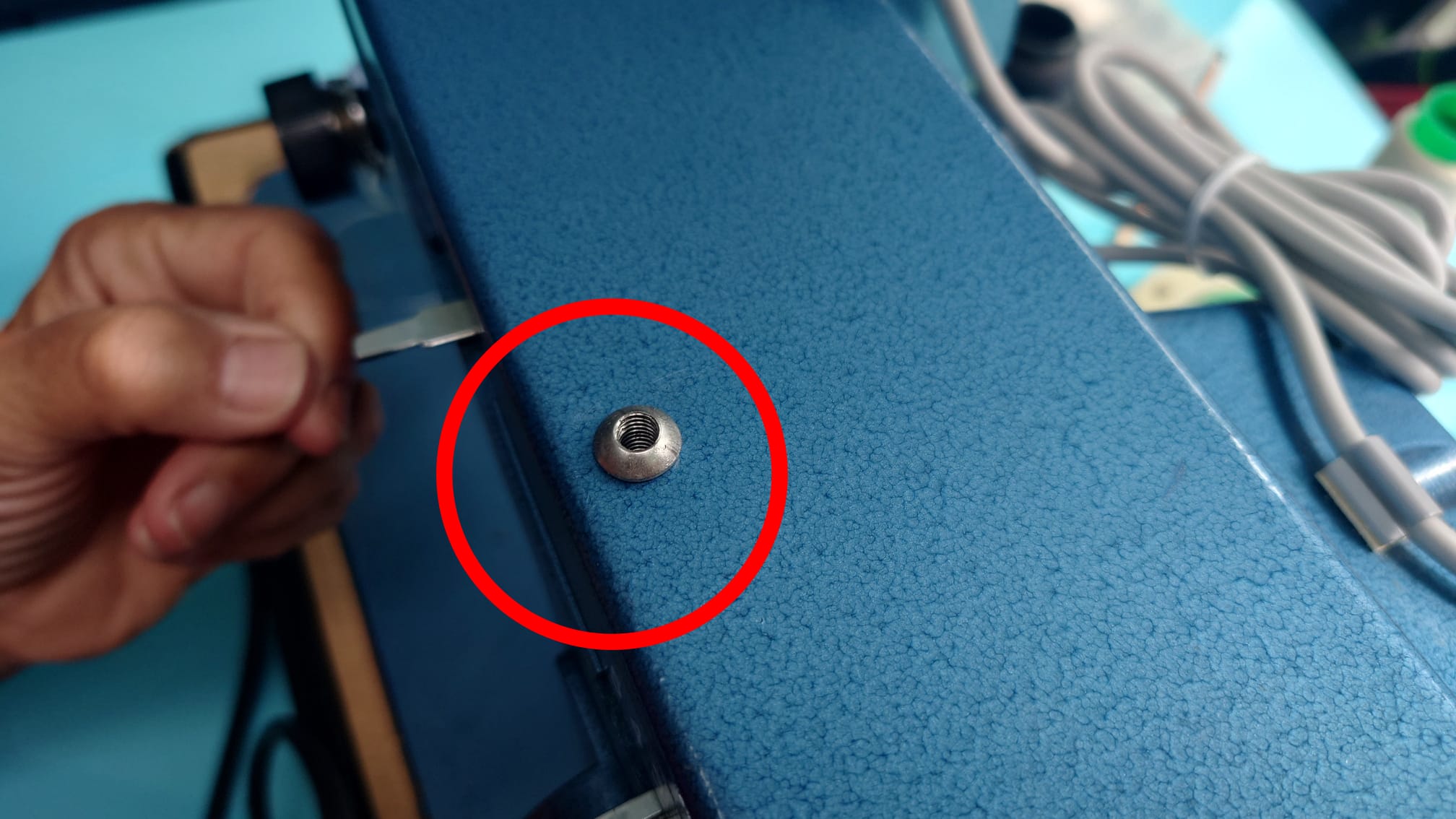

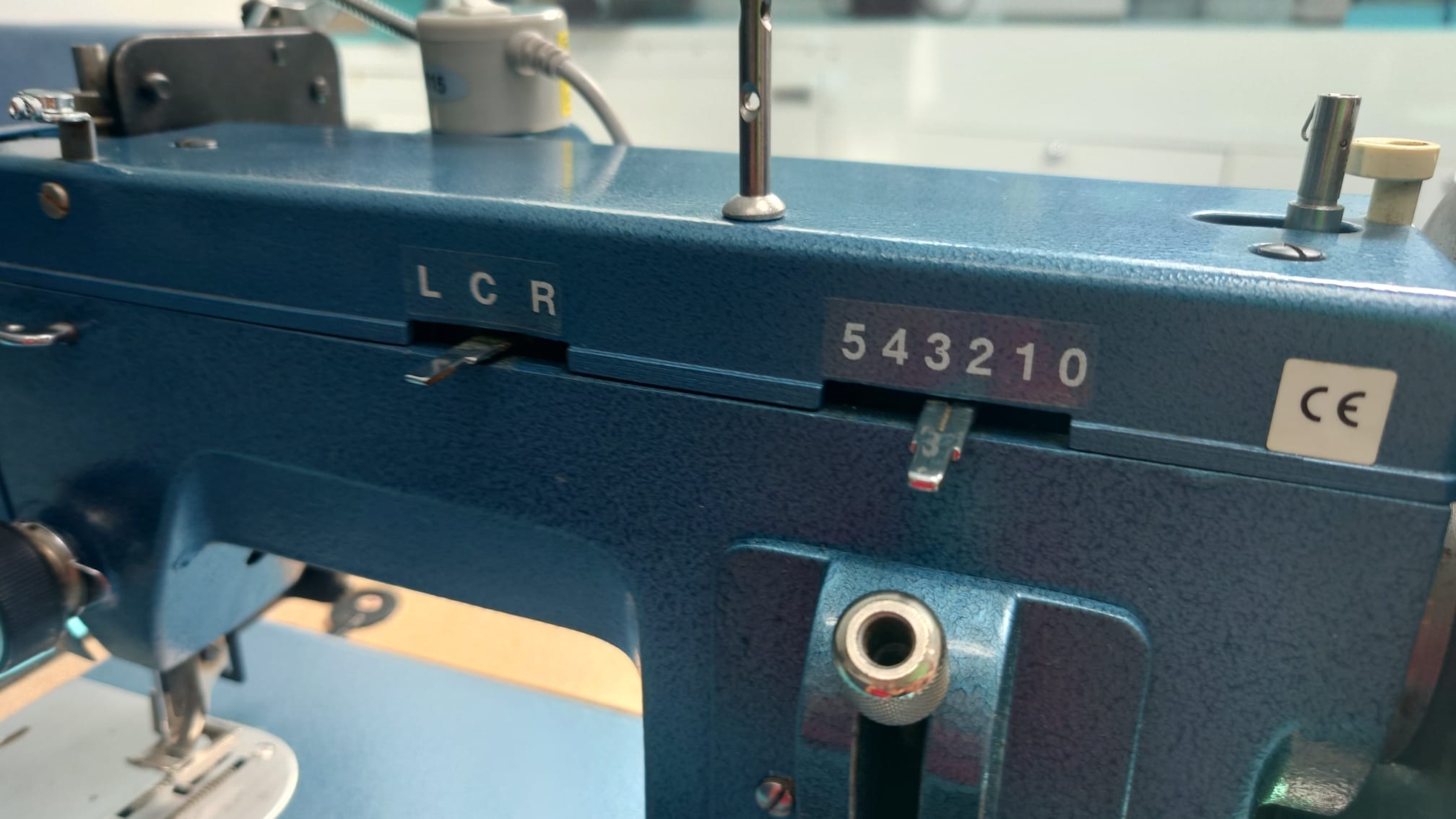
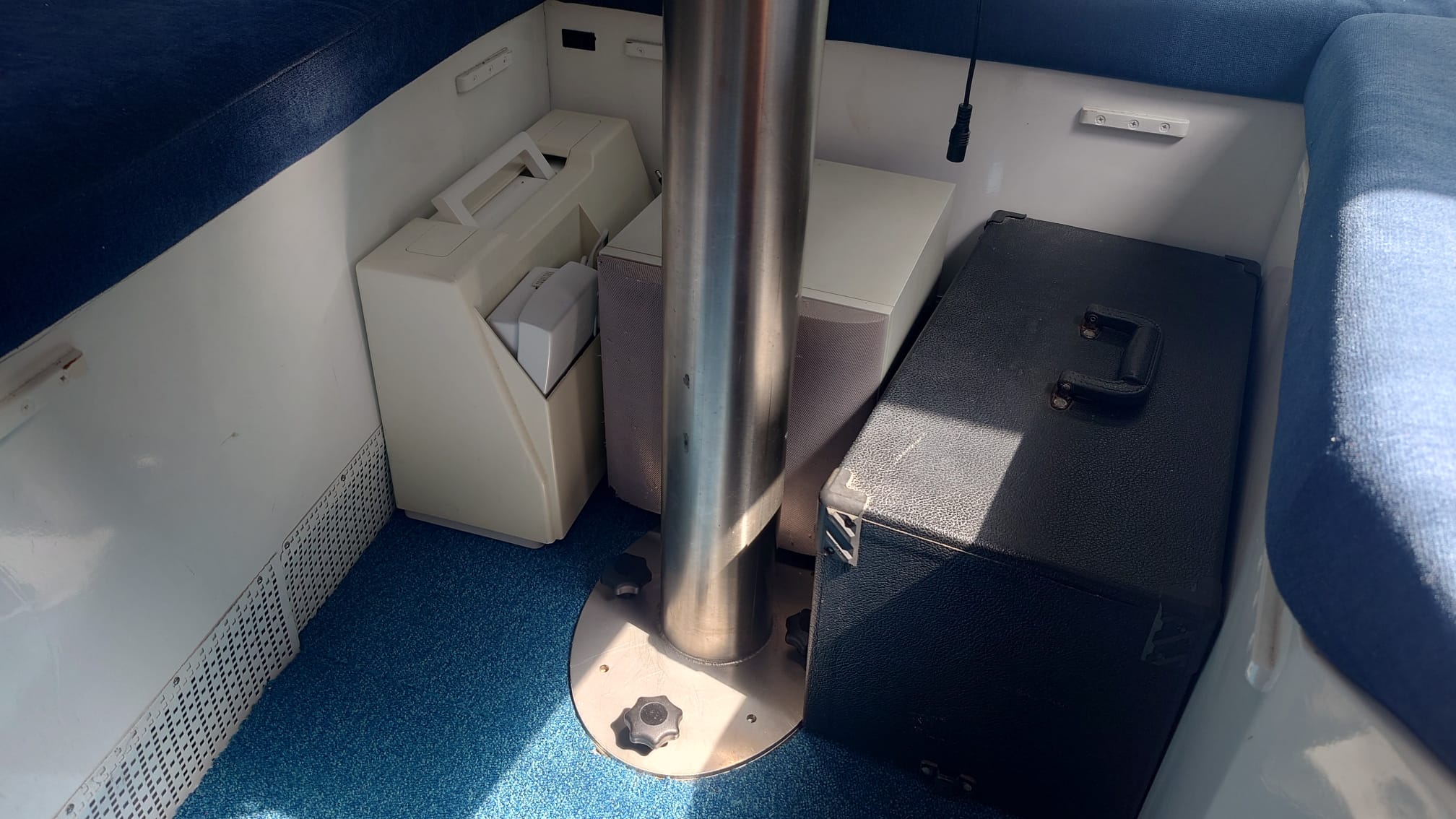
Now that we have the Sailrite, we can move on. We have been in Moaña for 5 weeks and that’s long enough! At 0900h we hoist our anchor and say goodbye to this lovely place. We’re off to Baiona!

There’s a beautiful fortress with a walkway all around it. The views are gorgeous!
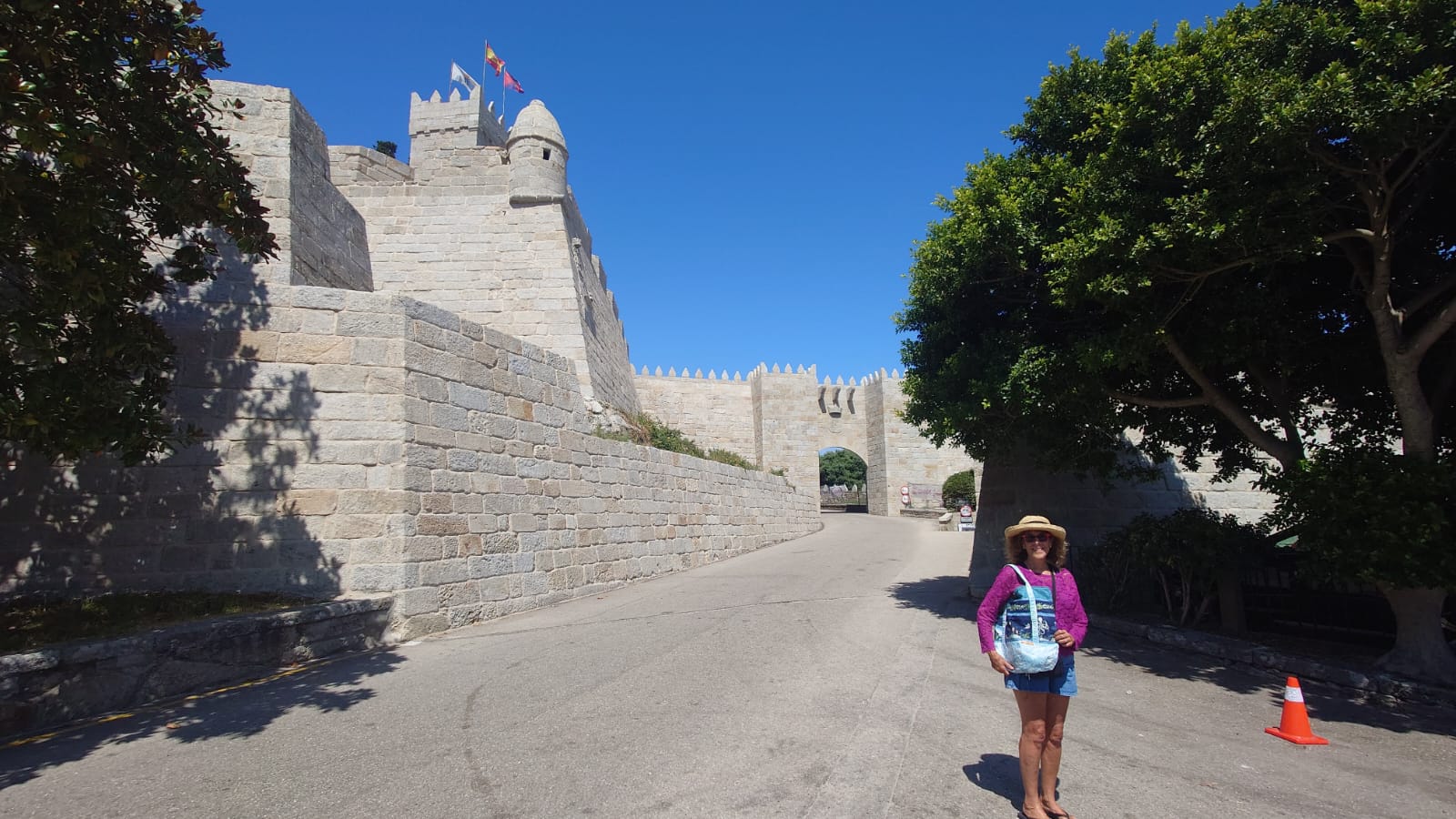
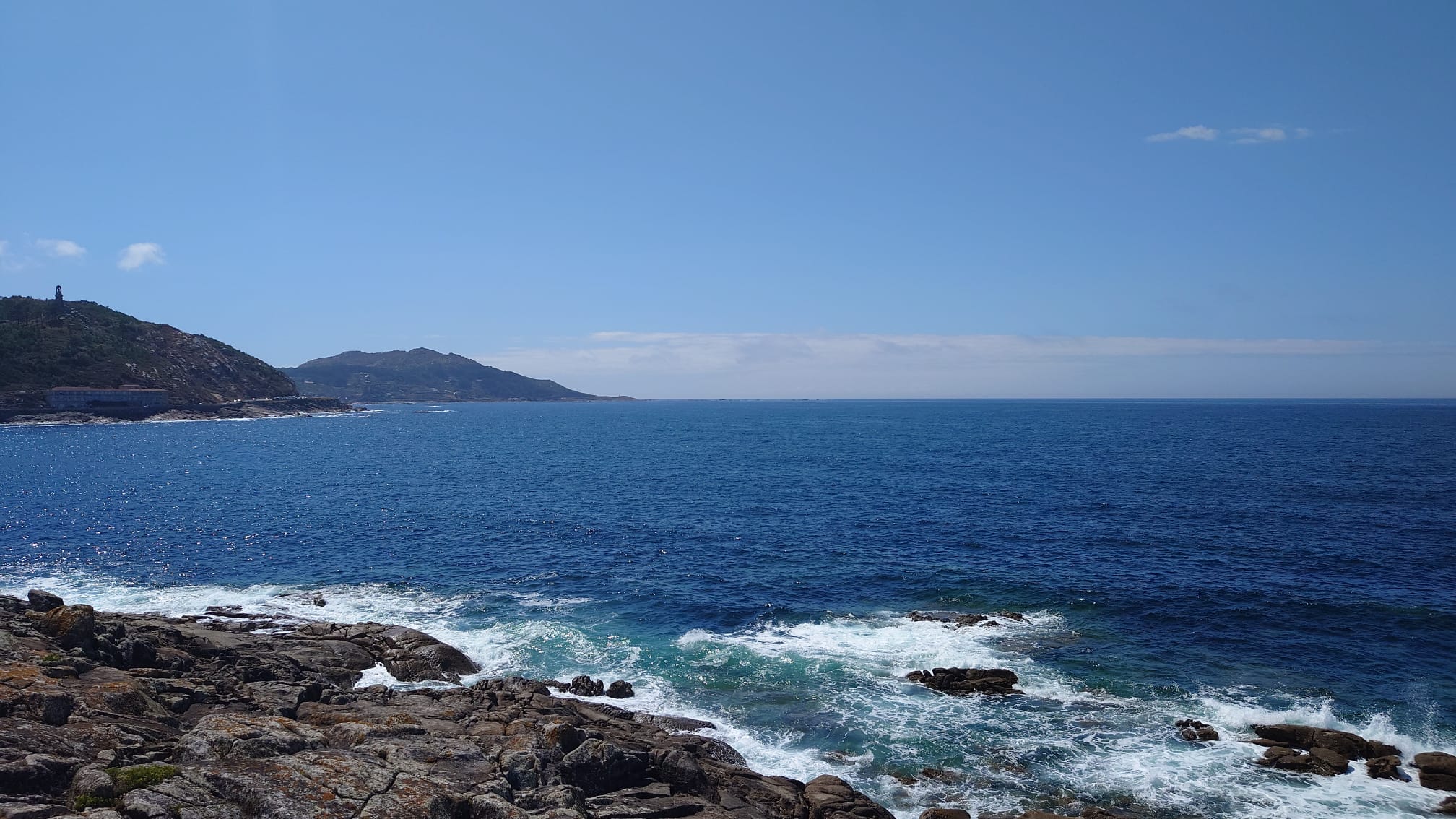
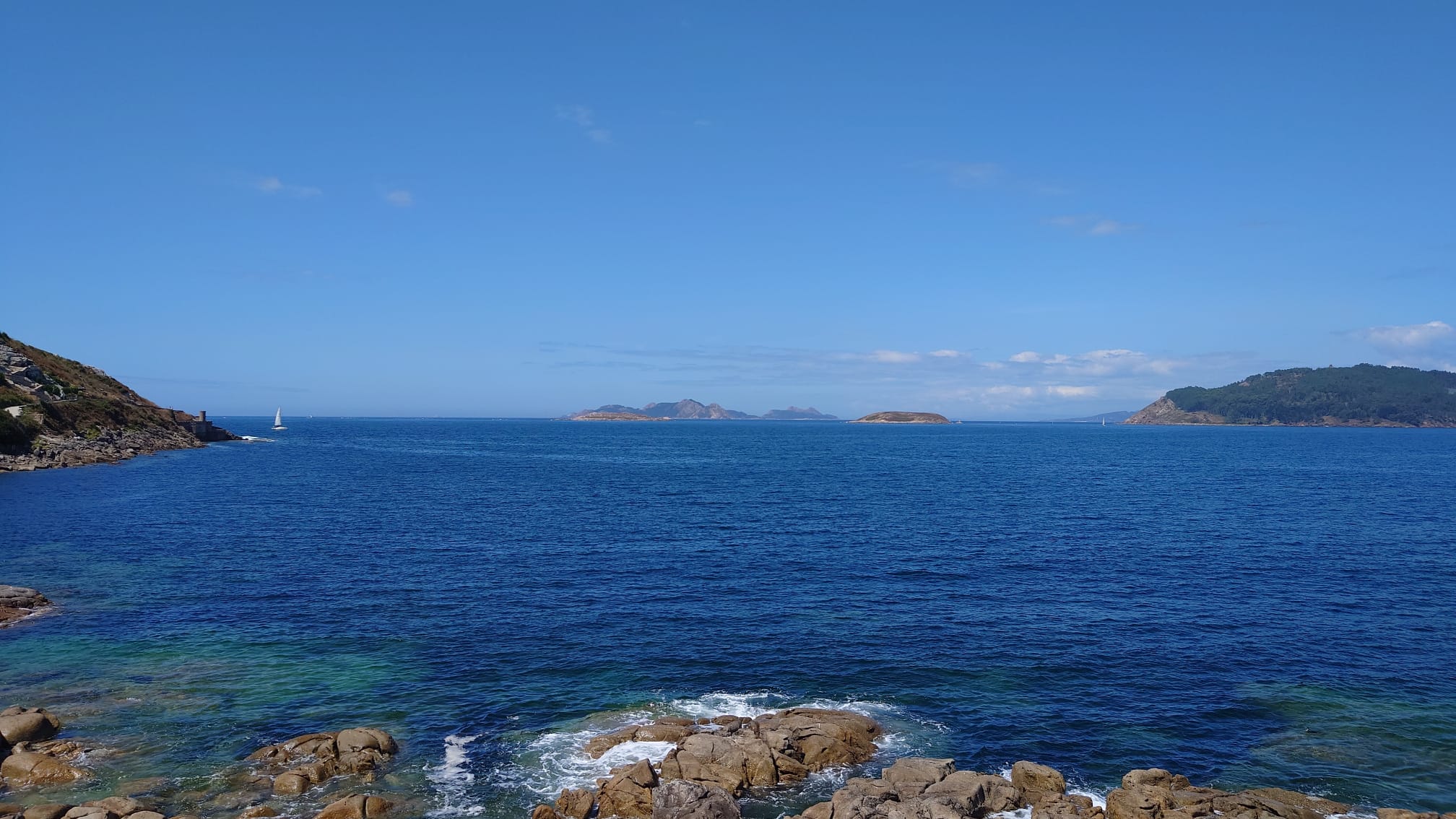
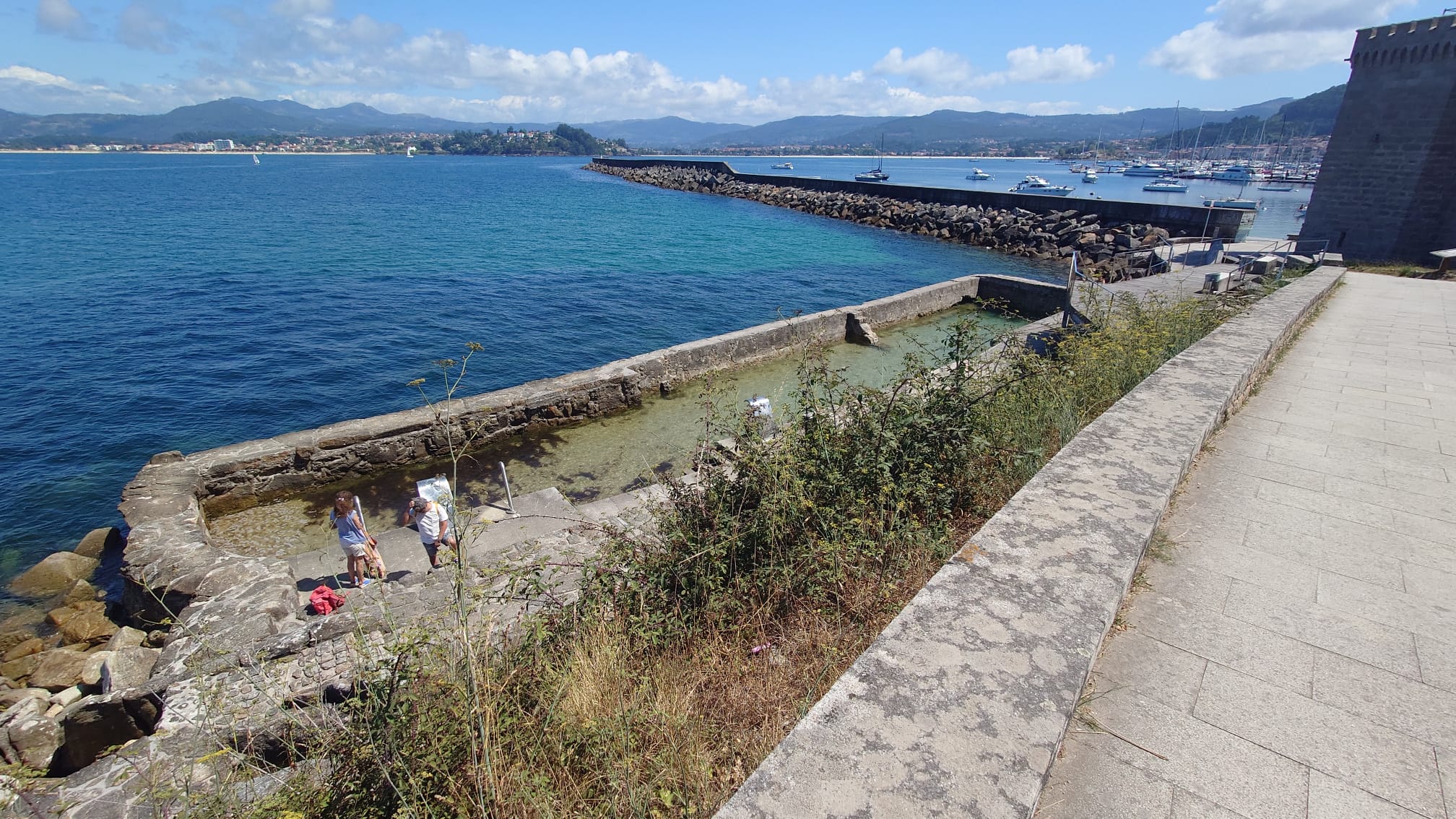
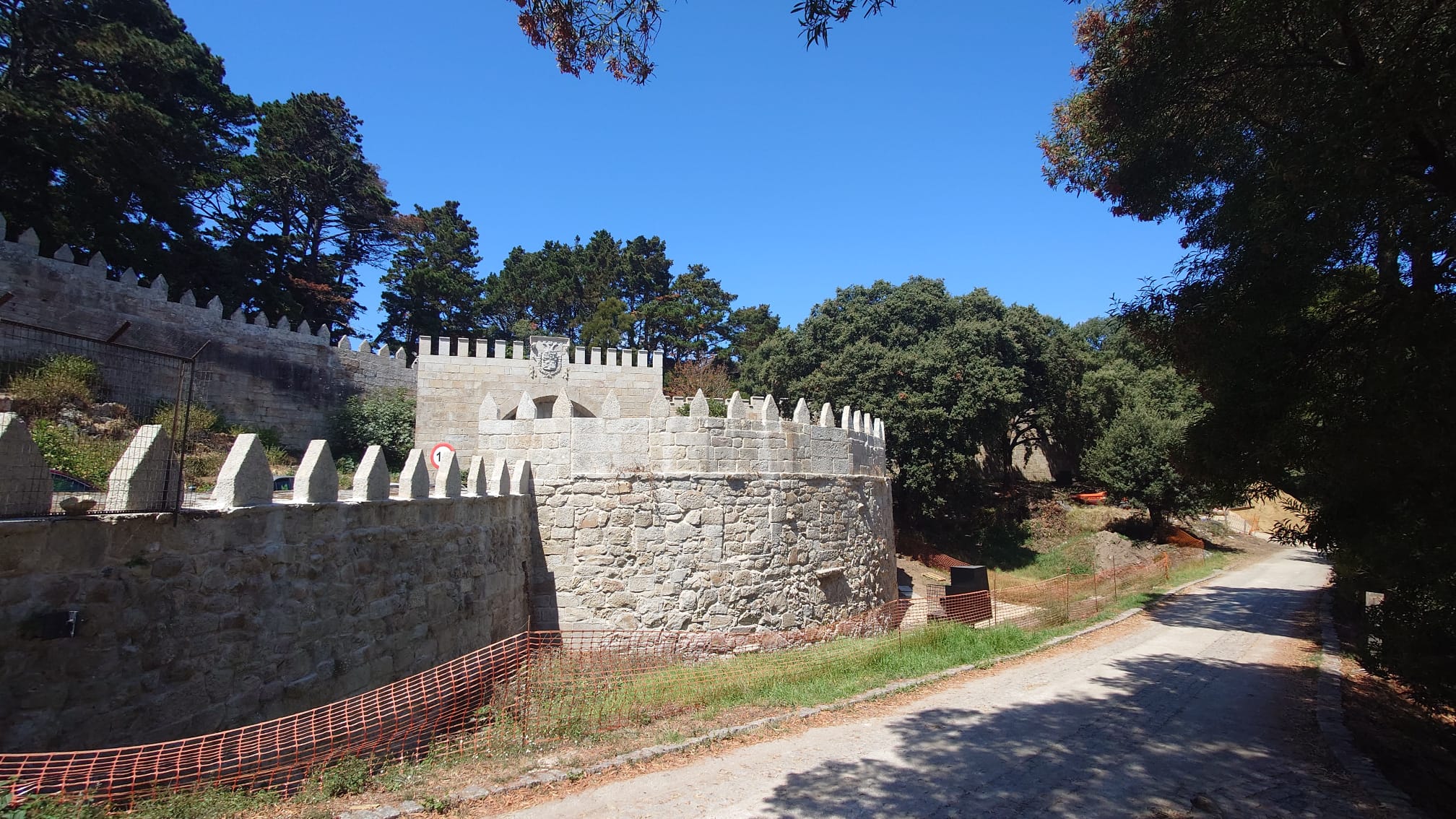
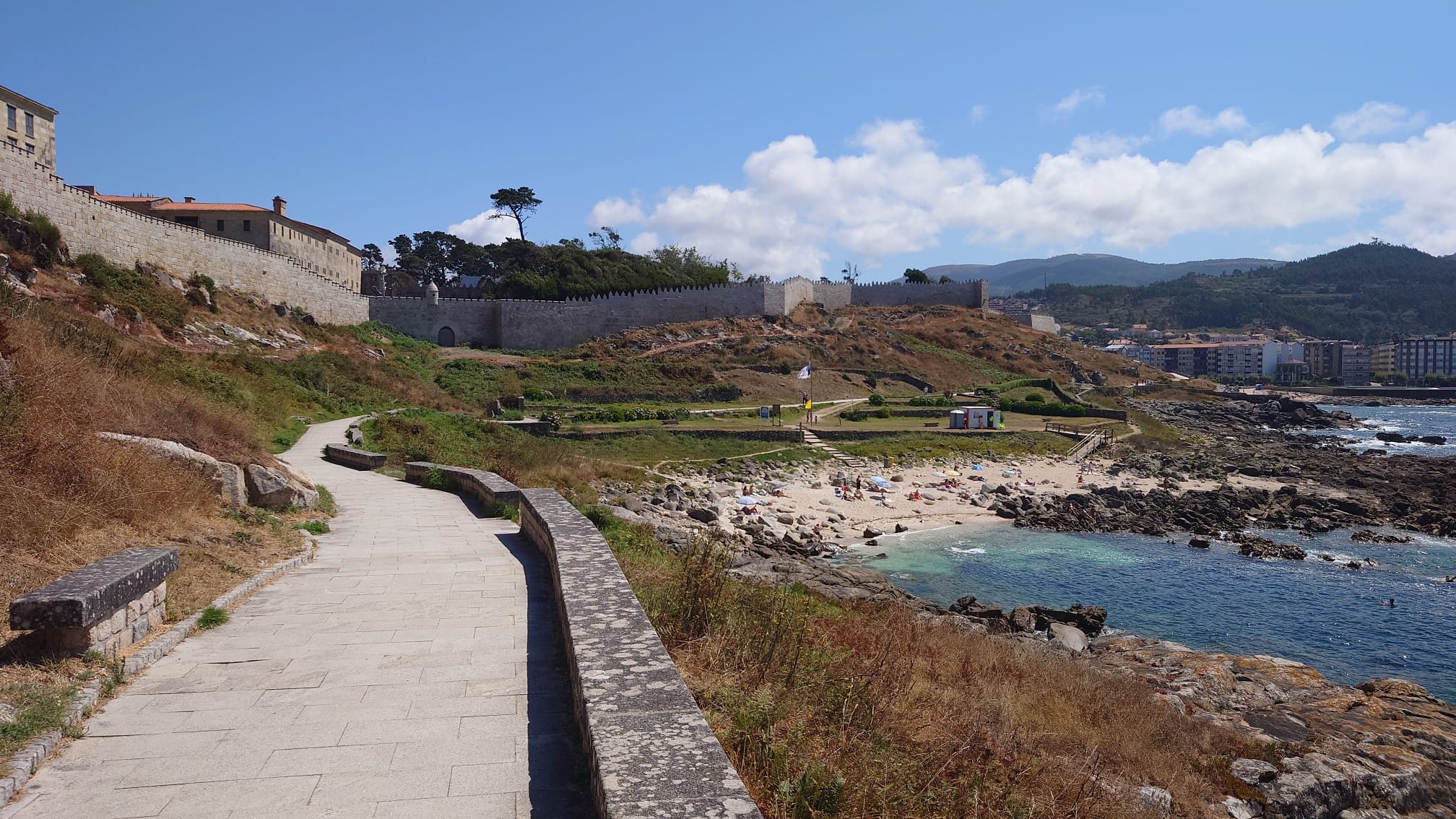
A walk through the small streets of the old town:
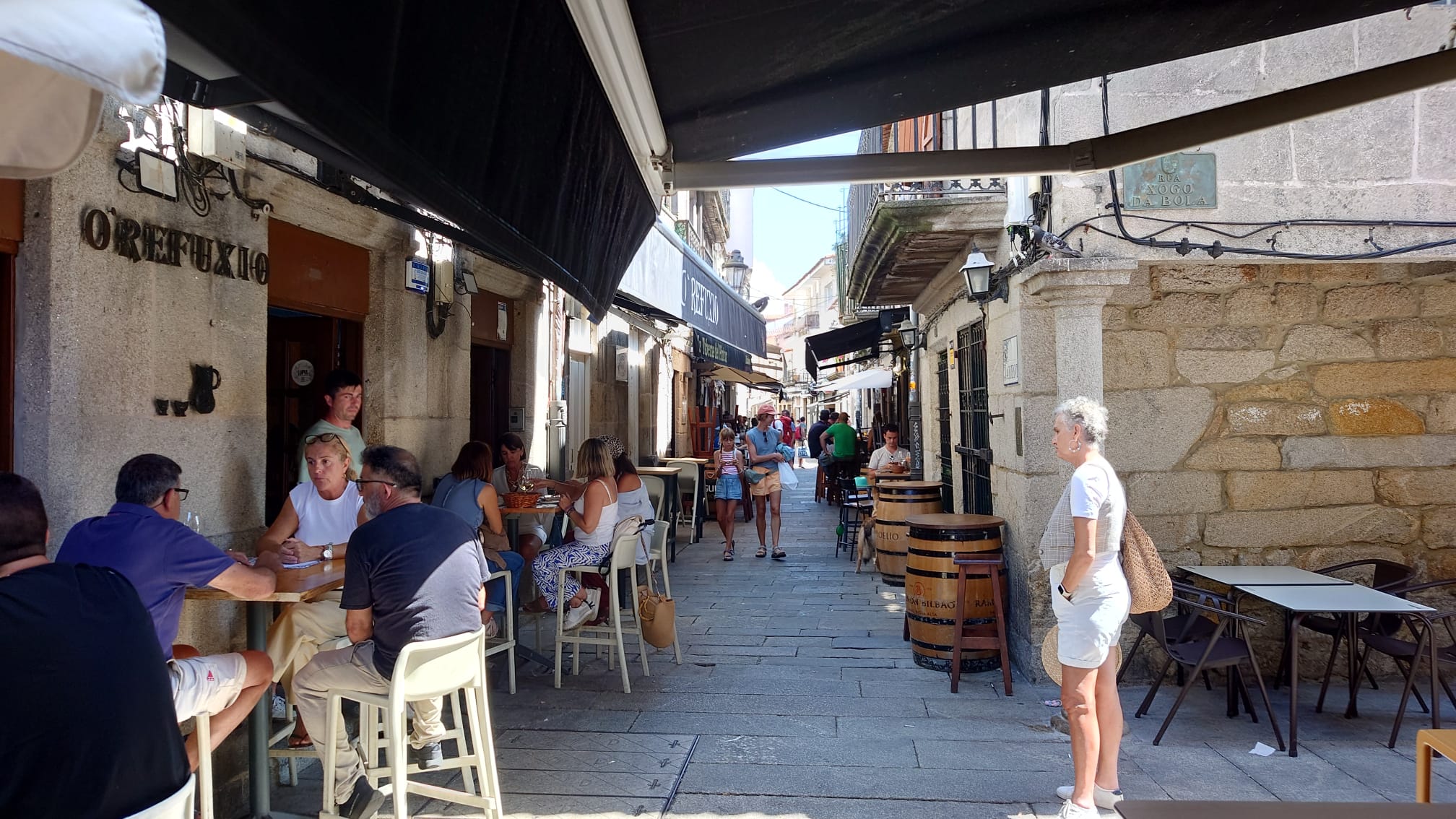

Our last sunrise in Spain 🫶🏻. Today, we will leave our beloved Spanish Rias and head to Portugal.
We have been in Spain since last year October 5th. That’s almost 1 year ago. We have been in the Rias since February 5th. That’s almost 8 months.
We have enjoyed every minute of it. Yesterday evening, we said to each other, “there has not been a single moment in which we said, ‘Pfff! Let’s get out of here.’” On the contrary, each time we departed from a place, it was with a little sadness in our hearts.
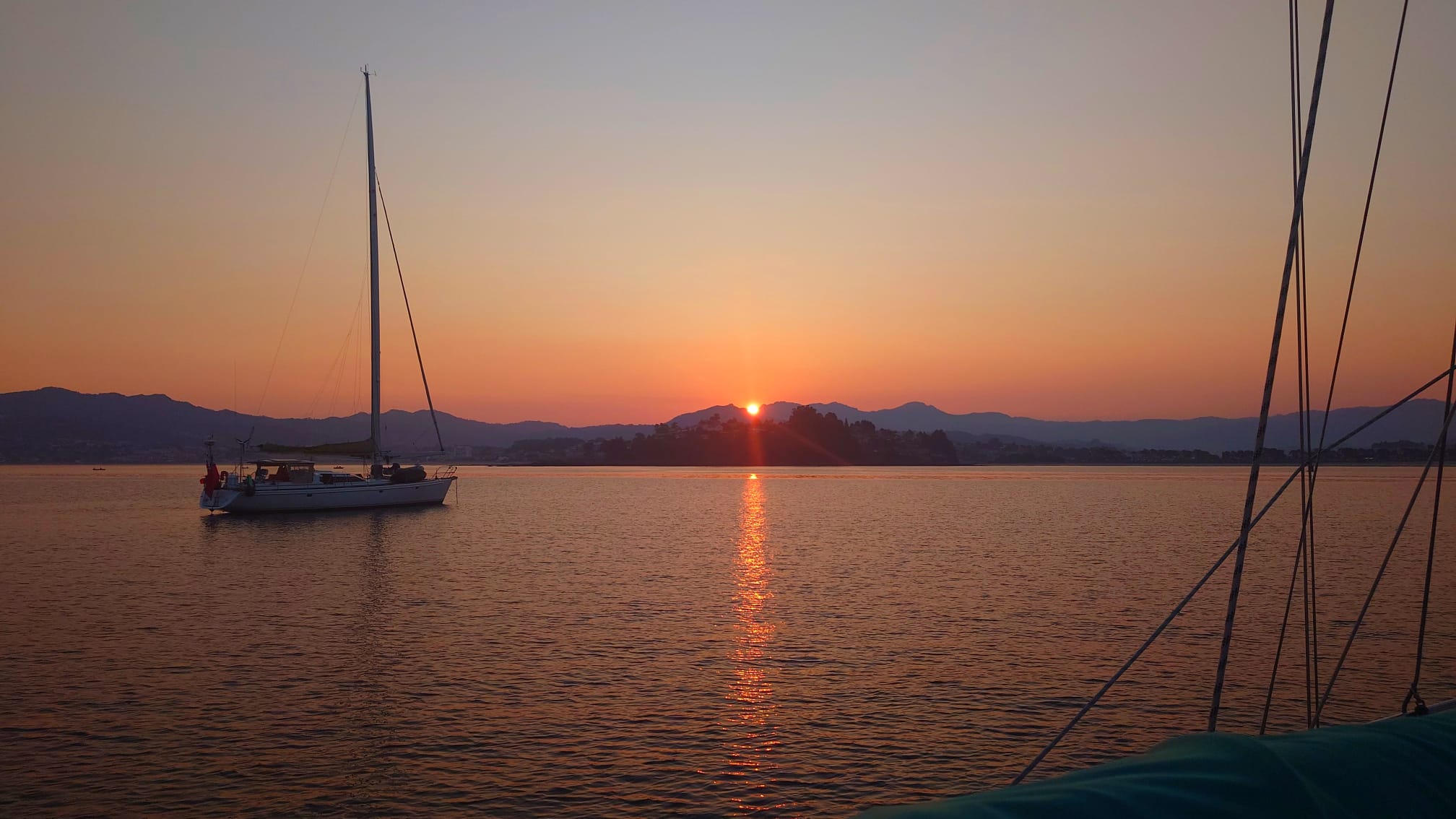
The Captain’s Log [T397,398,…419] – the complete story
PY Pilot – Autopilot
Small Sandblaster
SSB Ground Switch
Emergency Engine Cooling
Toilet Water Shut-off Valve
July 30.
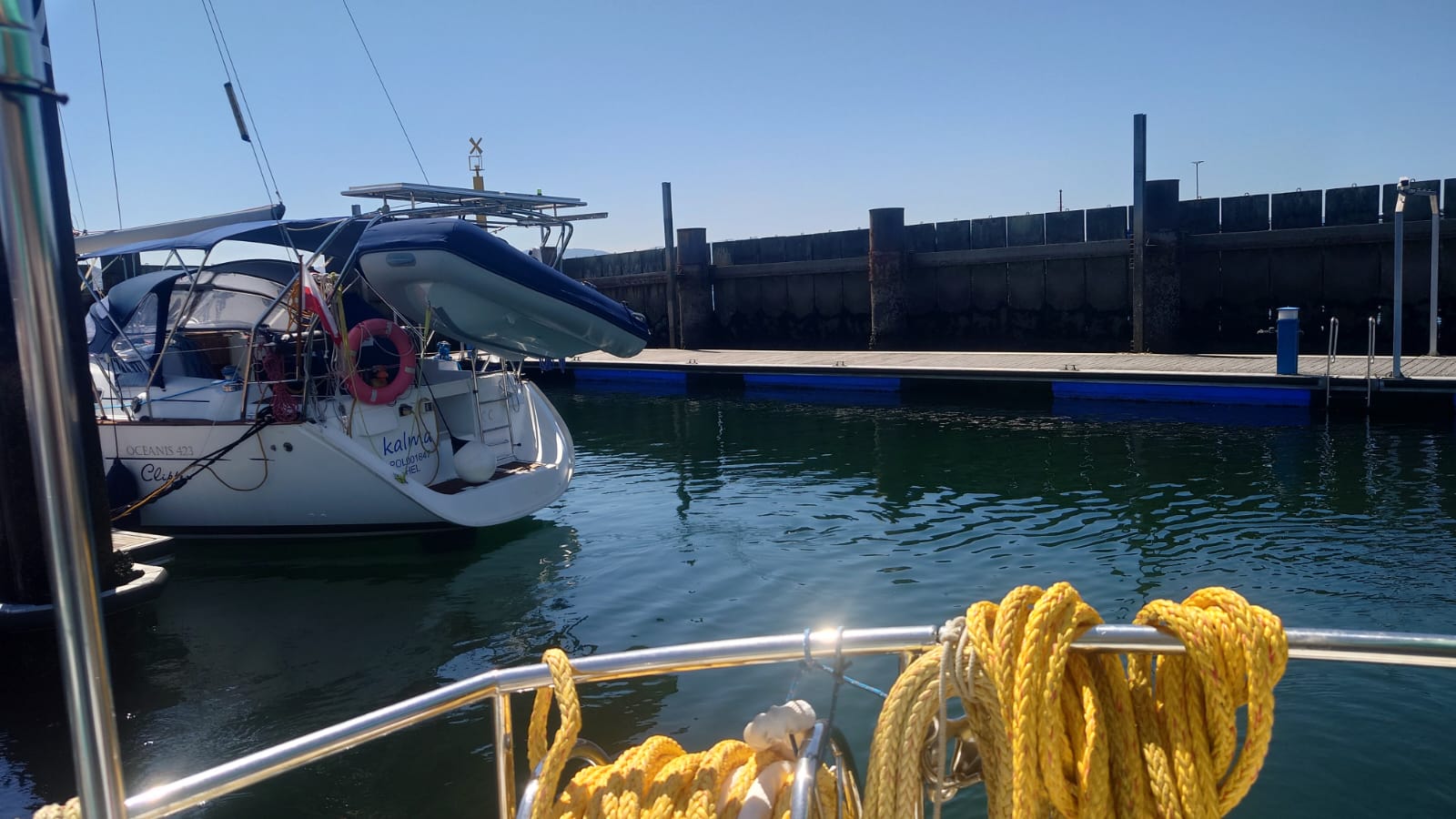
After picking up some packages at the marina office and some provisioning we depart from the marina Moaña after lunch.
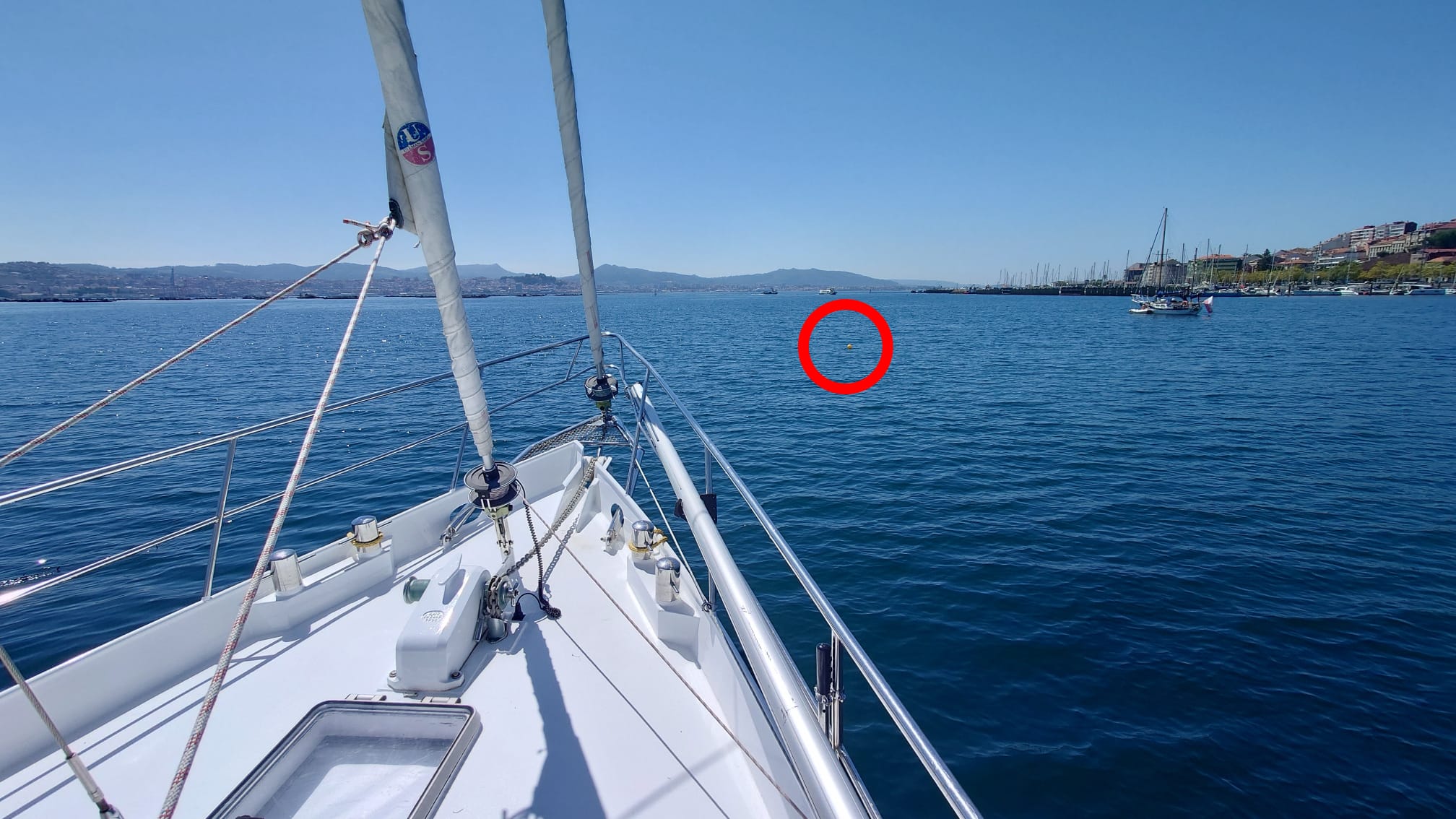
We drop our anchor in Moaña bay. It is so great to be out of the hot and crowded marina with its too bright lights (at night) and to enjoy our freedom!

We unpack our bags and while Sher starts stowing everything Wim starts to assemble the electric outboard motor.
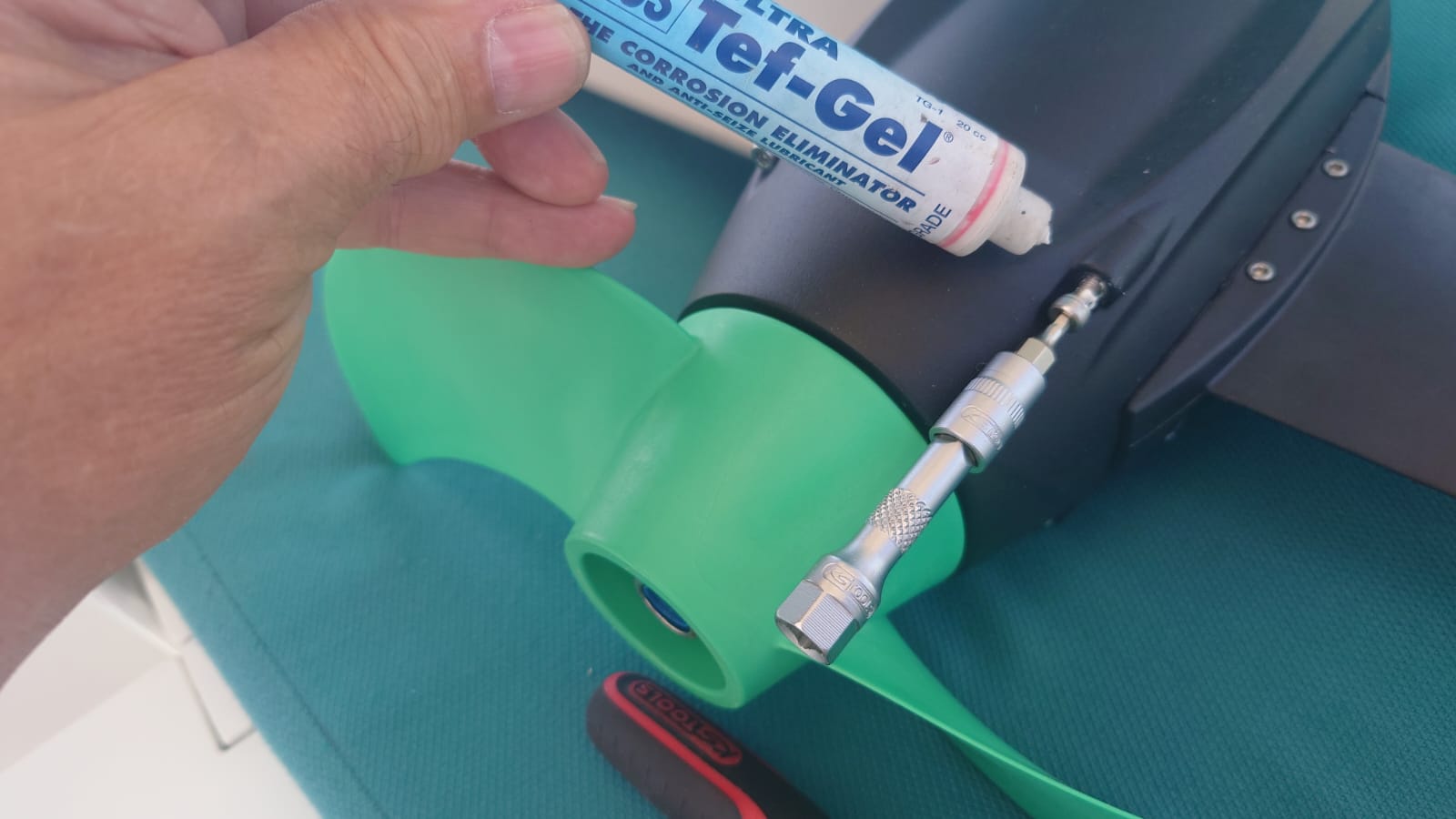
One thing we have noticed while we were disassembling it, was that not much has been done to prevent corrosion. Stainless steel bolts in aluminum in seawater corrodes like hell. So Wim assembles everything with Tef-Gel. That isolates the metals and prevent corroding.
July 31.

We get a message from within the Viveiro WhatsApp group saying there was an Orca “attack” near Ria de Vigo. Wim says: Yay! My friends! Say hello to them!

In the morning, Wim starts modifying one of the external scooter battery packs. It’s so convenient that we have all cables and electric materials available!
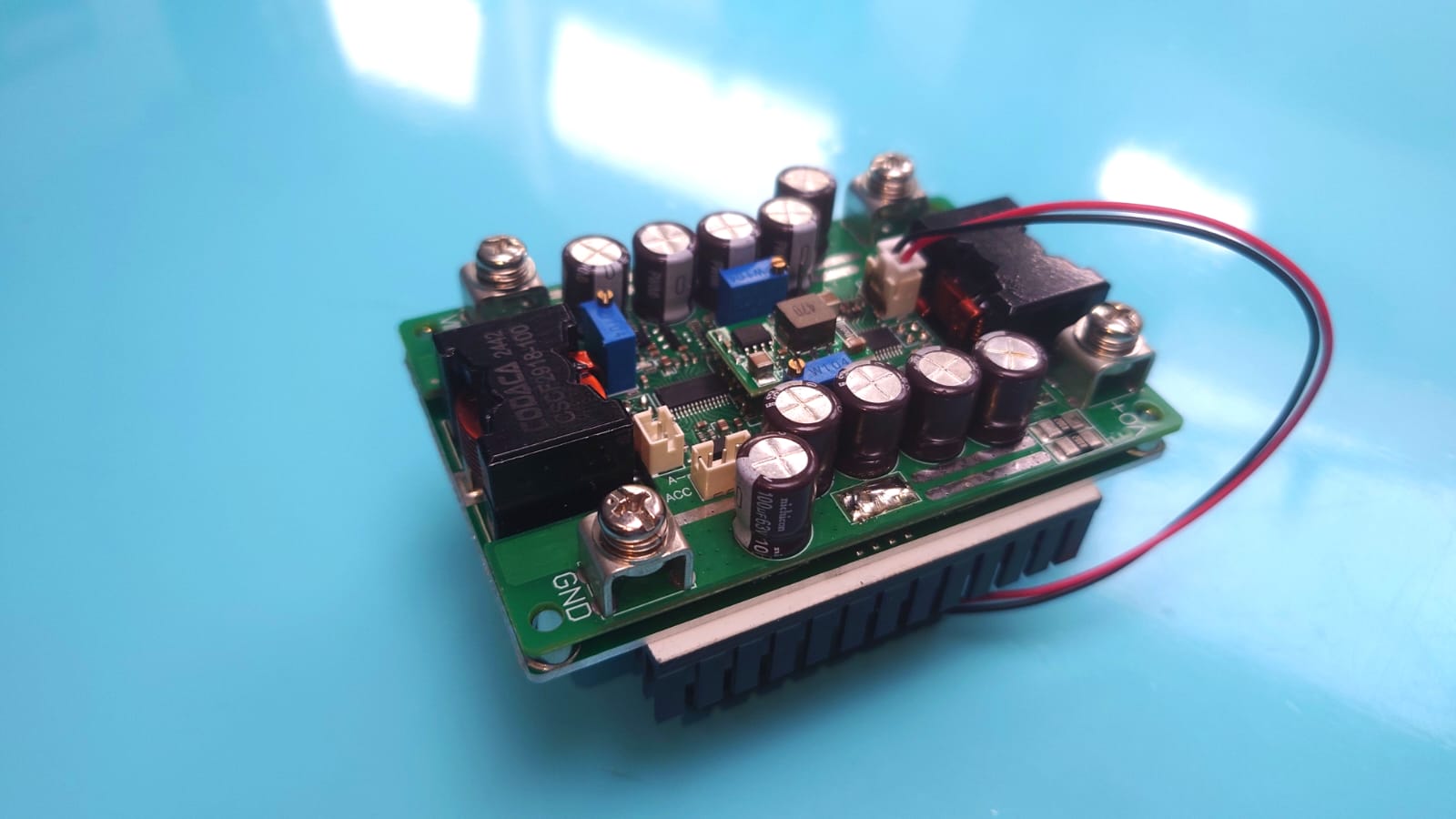
On Ebay, we’ve ordered powerful DC-DC converters because the battery is 52v and the motor is 36v at 37A (1300W).
These converters can handle 3000W.
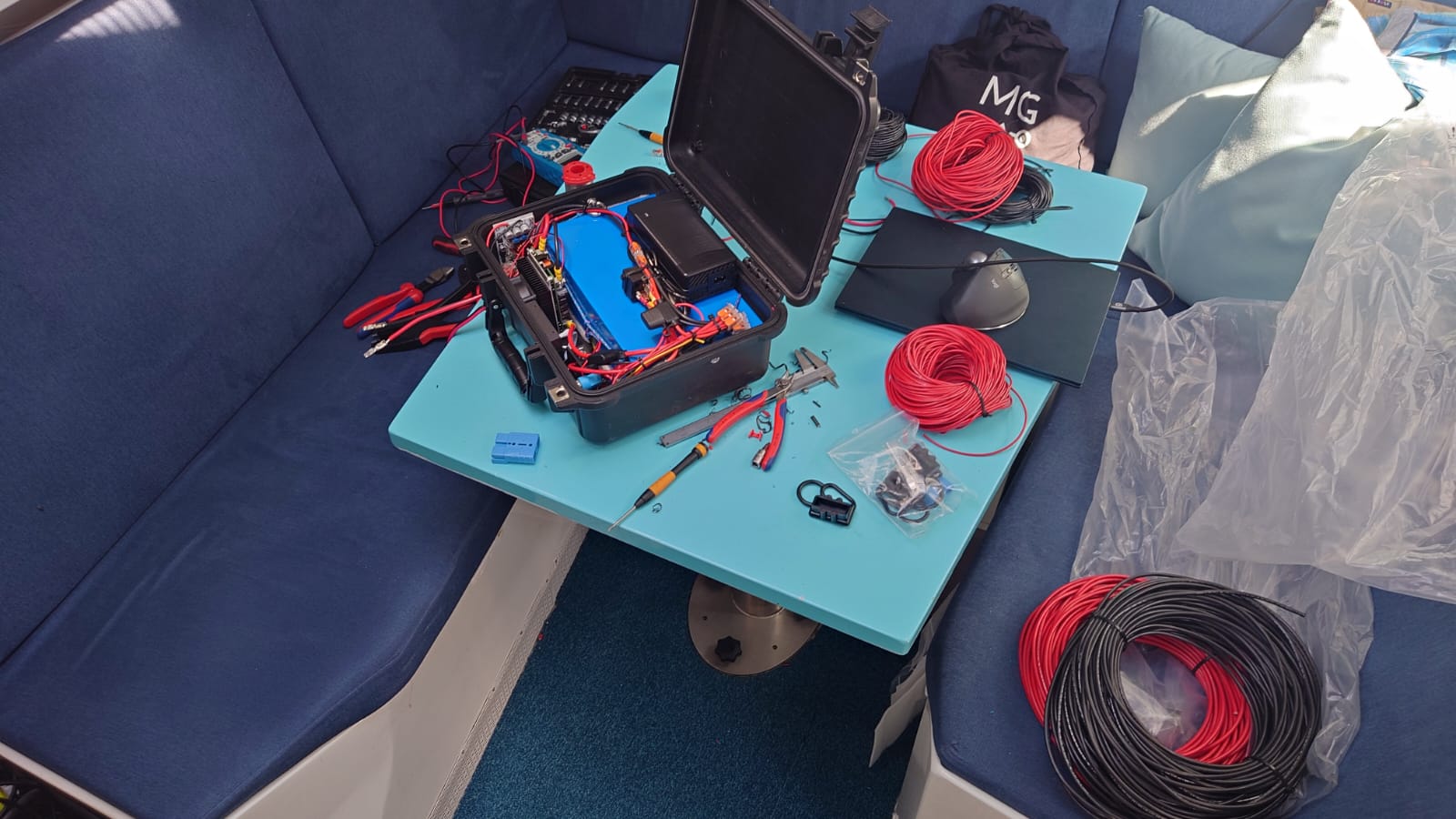
The case has to be rewired completely and a second (high power) output is made. Of course, the existing 48v output for the scooter stays in place.
After adjusting the voltage it’s time for a first test. Looks good!
Then, we mount the motor on the dinghy and Wim goes for test drive.
Hm. Above 30% of motor power the DC-DC converter cuts out. That needs further investigation but it will do to bring Sher to shore for some shopping. But when Wim returns to Dione IV, the motor ànd the converter cut out… He has to row back…😏
Well, after some more test driving he discovers that the current limiter on the DC-DC converter is the reason: that has to go to full current. And, increasing the voltage to 42v helps, too. That will make motor think it has a full battery and thus, it doesn’t run into limits. Wim makes some more test drives and he can go to full power. The dinghy reaches 5 knots of speed. Great! When he picks up Sher from the marina everything goes well and together we make a longer tour along the bay. The motor is so silent! 😃
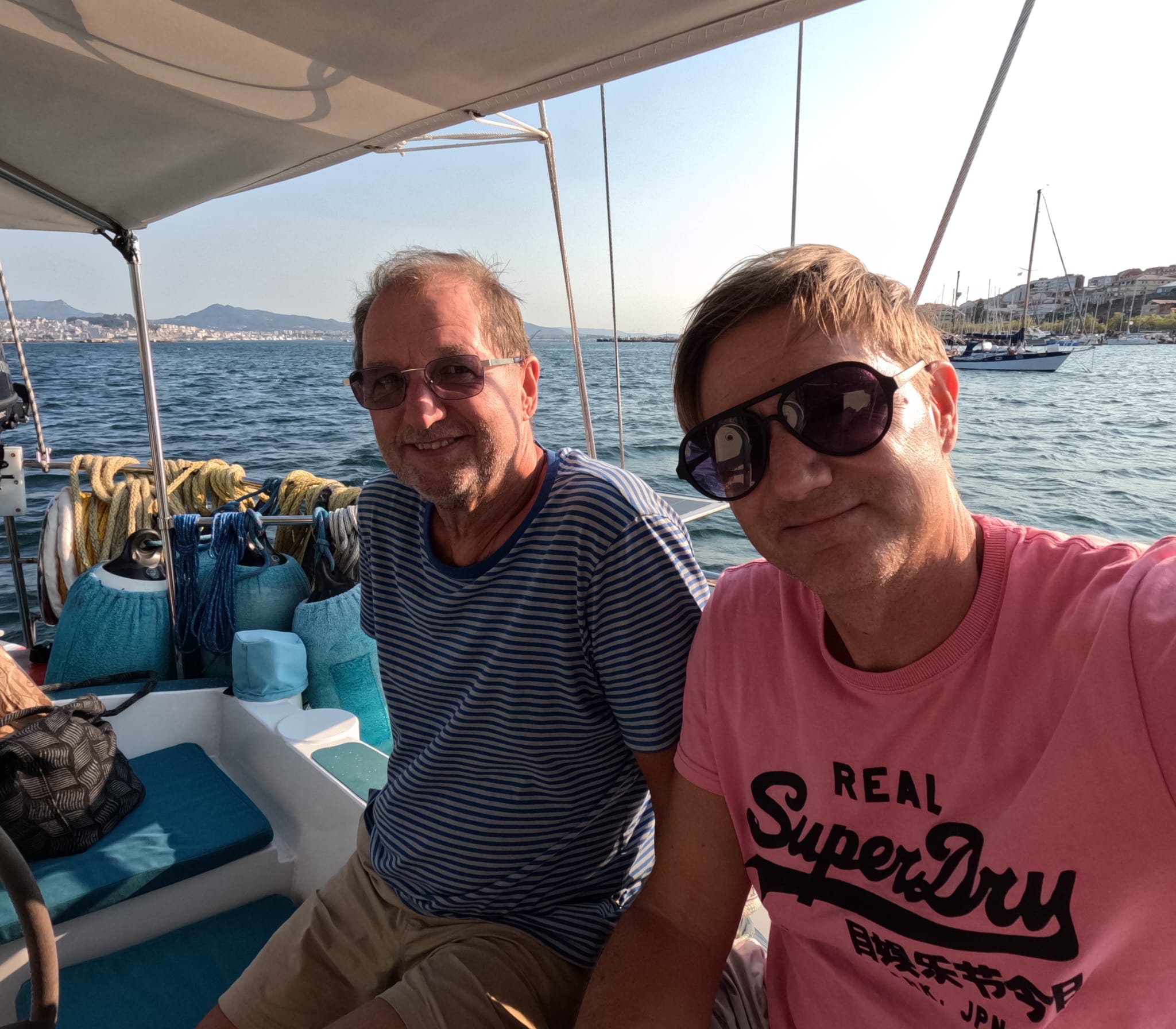
At the end of the afternoon, Wim’s friend René and his family visit us. They make a tour with their camper van and they have parked in Moaña.
They have been working together for many years at the Autark Zero project in The Netherlands and it’s so nice to catch up!

In the evening, Wim brings them back to shore and Annelie (their daughter) drives the electric motor.
Sher gets a big compliment: Annelie says: Sher is so sweet, I’d wish she were my mother! 🥰
August 1.
We do some more test driving with the electric motor on the dinghy and tweak the settings of the DC-DC converter a bit more. It looks pretty stable now but our guess is that the switching frequencies of the DC-DC converter interfere with the frequencies in the motor controller (both power choppers). That leads to unexpected errors, both in the motor electronics and in the DC-DC electronics. Maybe we’ll have to make some kind buffer in between. Let’s see how it goes.
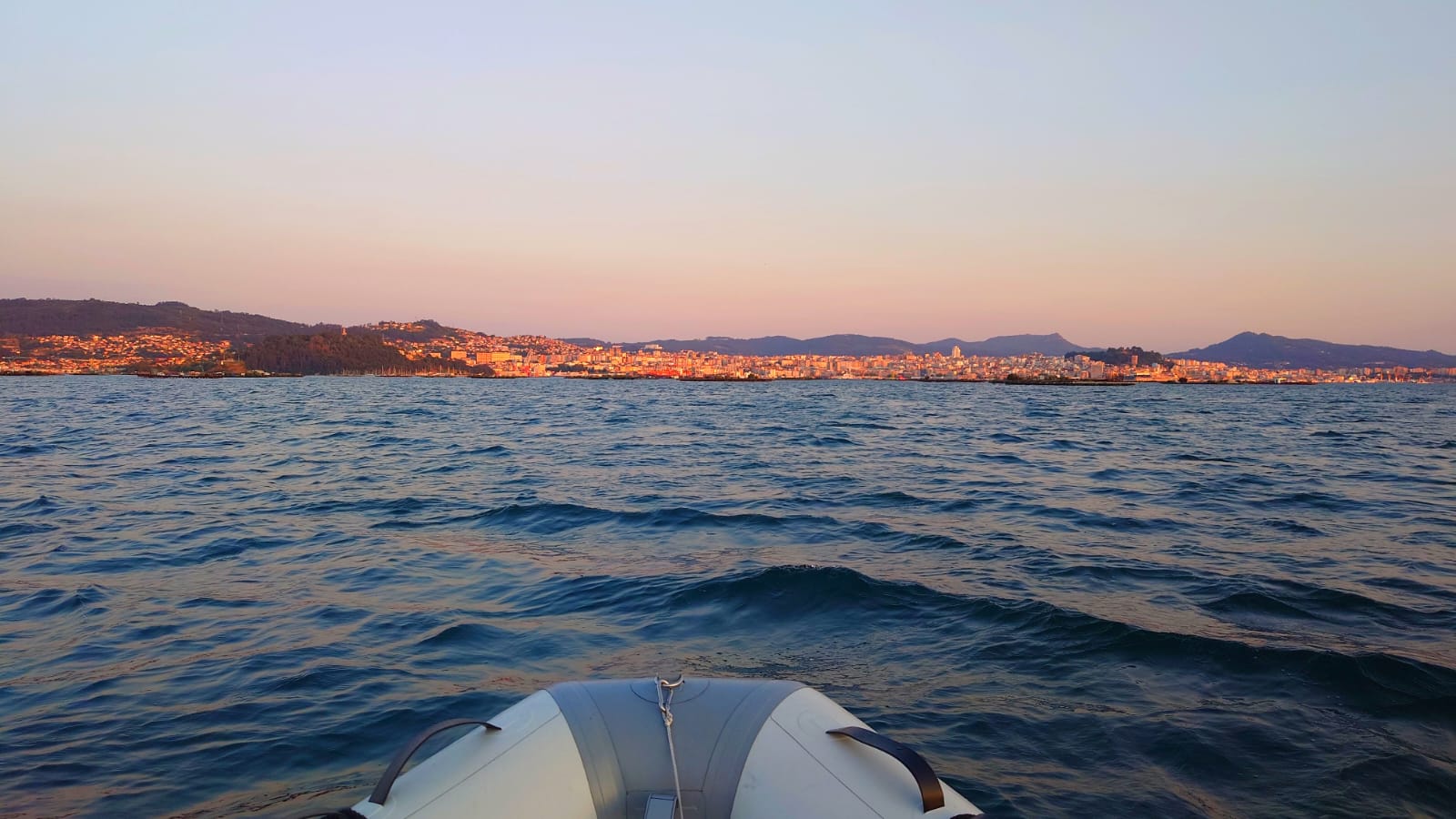
In the evening, we dinghy to Moaña with Tom & Marcia from ‘Bird Song” and have a delicious ice cream. When we go back we see dolphins and go after them to have a closer look. But 4 knots of speeds (full throttle with the 2 of us in the dinghy) isn’t enough to follow them. They are a lot faster and we lose sight of them.
But we have a lovely view on Vigo at Golden Hour!
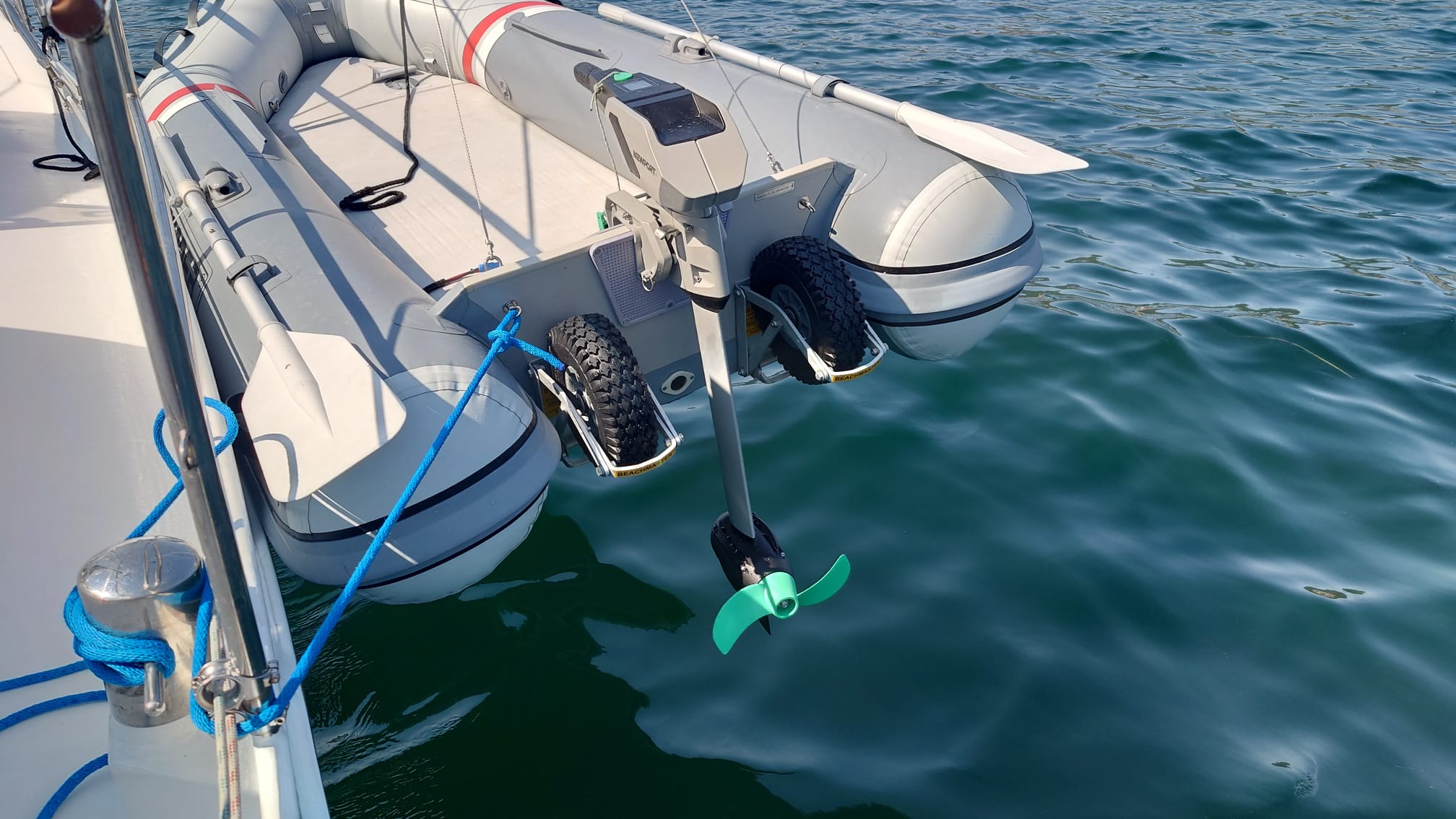
Like this, the motor isn’t corroding in the salt water, we prevent growth on the bottom of the dinghy and she’s more safe for theft.
August 2.

While Sher continues her sewing projects, Wim modifies the second battery pack to fit the high power DC-DC converter in. But, bummer! The second DC-DC isn’t working. We complain to the Chinese manufacturer and wait their response… In the meantime, one battery is okay for the short dinghy rides to shore. We have about half an hour at full throttle, about 2 hours at half throttle and about 4 hours at 30% throttle. So, that’s more than enough.

In the late afternoon we have happy hour on the ‘Bird Song” with all members of the “Friends of Manoliño”-WhatsApp group. They are all at anchor here, unique! Although Manoliño has sadly passed away, we have a wonderful time with all these nice people. At the end of the party we have a toast with Sher’s precious 40 year old white Port to Manoliño and express a wish he’s in dolphin heaven now, playing with anchor chains!
August 3.
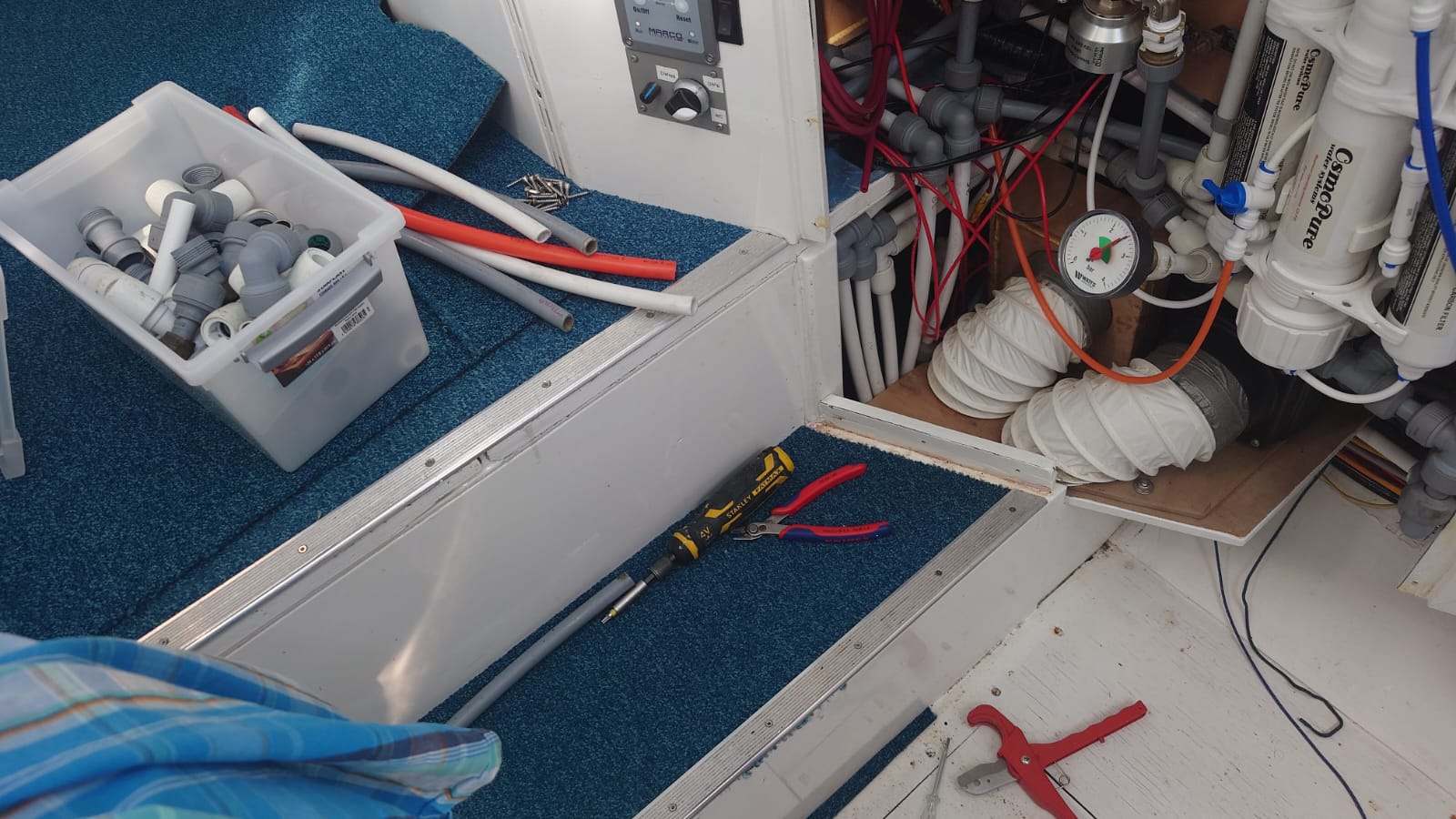
We’re enjoying being back on board and have a quiet and relaxed time while we do all kinds of small projects. Sher has her sewing projects and Wim changes the cockpit tap from sea water to fresh water. That’s easier to flush things with fresh water outside. Like the electric outboard motor, the SUP board or wash the salt from the windows.
August 4-6.
Same story. We’re relaxing from all the traveling and socializing and we enjoy the beautiful weather while we do little projects.
Sher has her ‘Pfaff’ sewing things and Wim is installing the PY Pilot autopilot system (see below).
One thing that has to be done is cleaning the propeller. We have no antifouling paint on the prop and 2 weeks in the marina has gathered a lot of growth (barnacles and weed). Sher takes a dive with our Hookah dive system and cleans it.
PY Pilot. Now, what is that?
A couple of months ago, we discussed the autopilot. The autopilot steers Dione IV so that we don’t have to hand steer her. Actually, we both don’t like hand steering so much. So, we have the autopilot doing that job most of the time. Only in special circumstances like busy traffic, difficult shallows, maneuvering in a marina and such, we steer by hand. In most other situations, we just control the autopilot by pushing buttons: 3 degrees Starboard, 10 degrees Port and so on. So, in normal circumstances, the autopilot controls Dione IV’s course and heading and we operate the autopilot.
On a passage, that gets more essential: we’re practically unable to hand-steer 24 hours a day and watch the compass or the wind direction. So, having a third “crew member” like the autopilot is crucial for our well being and our safety. But… it’s all mechanics, electrics, and electronics. And that can break down. So, we’ve been discussing a backup system. We both feel having backup systems are very important.
Our “Jefa” electric drive controls the mechanics of the rudder. Wim had it overhauled in 2024 after 30.000 sea miles of steering. It wasn’t broken but the gears got a bit noisy. So, this drive can steer us at least another 30.000 miles. But, you never know… So that’s why we decided to buy an identical spare one in Denmark. Bloody expensive and probably we’ll never need it, but it’s our peace of mind on the ocean 😏
Another thing are the electronics controlling this drive. Dione IV’s Simrad AC12 autopilot computer, the Simrad RC36 rate compass (electronic compass), the Simrad FU80 follow-up handle and the B&G Triton devices controlling the Jefa drive have never failed. But, anything can happen: electronics breaking down, cables, connectors, lightning strike, etc…
That’s why we want to have a backup system. Fully independent of our Simrad/B&G system. Since we use OpenCPN navigation software we came across PY-Pilot. Hardware and software built by a Frenchman living in California, Sean d’Pagnier. An extremely experienced ocean sailor with a brilliant mind. He designs and manufactures the hardware (circuit boards and cabinets using a 3D printer) and he develops the PYPilot plugin software for OpenCPN. We have been investigating a lot of other systems but this is the most impressive one! We ordered all the hardware from him and had it sent to MomCat’s address.
These days we’re installing it. More information later in this post!
August 7.
Further deep in the Ria de Viga, there’s an island, Illa de San Simón, for which we need a permit to enter it. We decide to go there an acquire the permit for tomorrow morning.
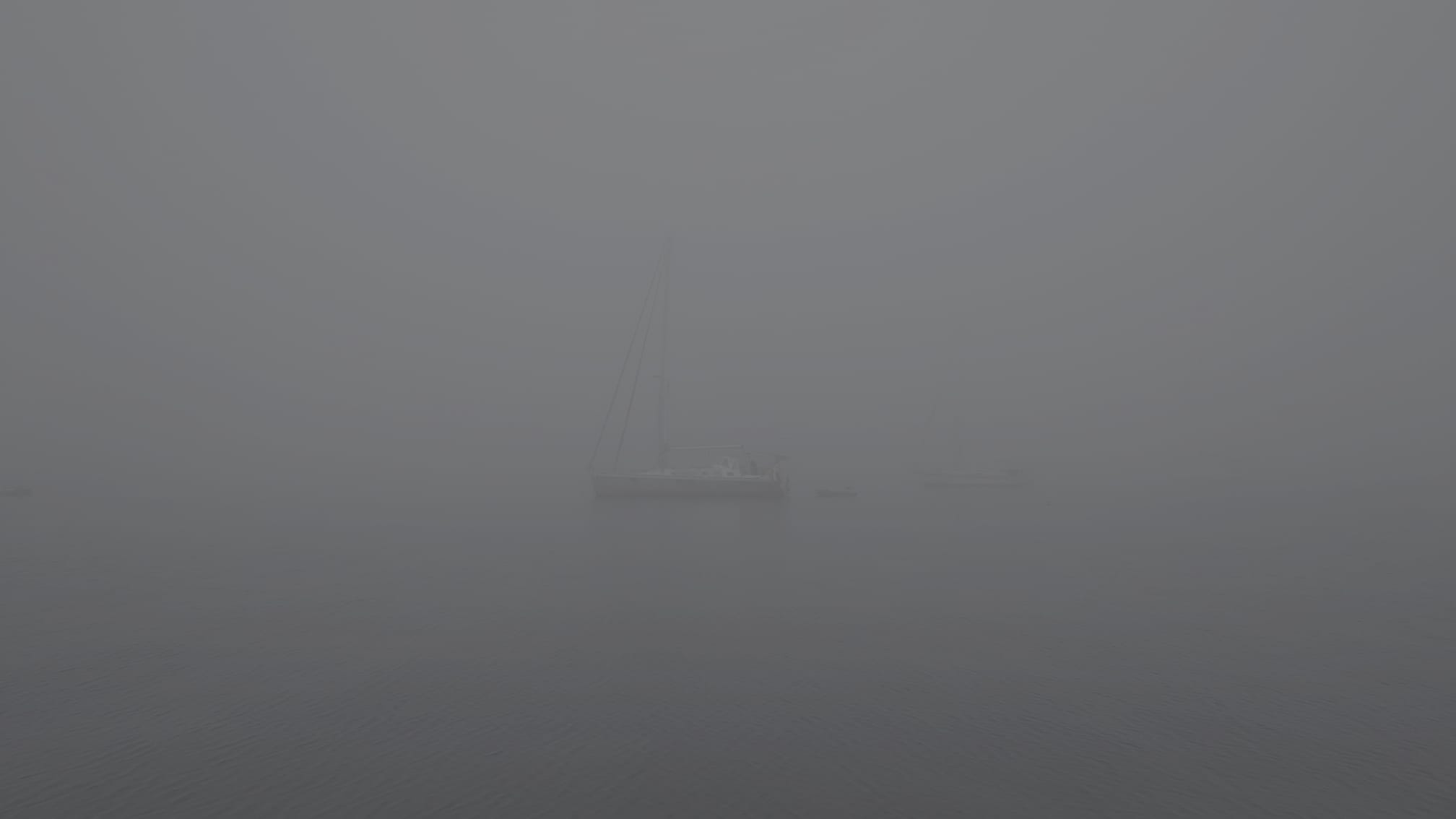
When we wake up, there’s a thick fog. The hot air from the Spanish mainland meets the cold ocean and that generates fog.
We can hardly see our neighboring boat, the “Bird Song”, which is at 30m or so.

Sher bravely goes out for provisioning however!
Using her Navionics app to find the marina in the fog 😅
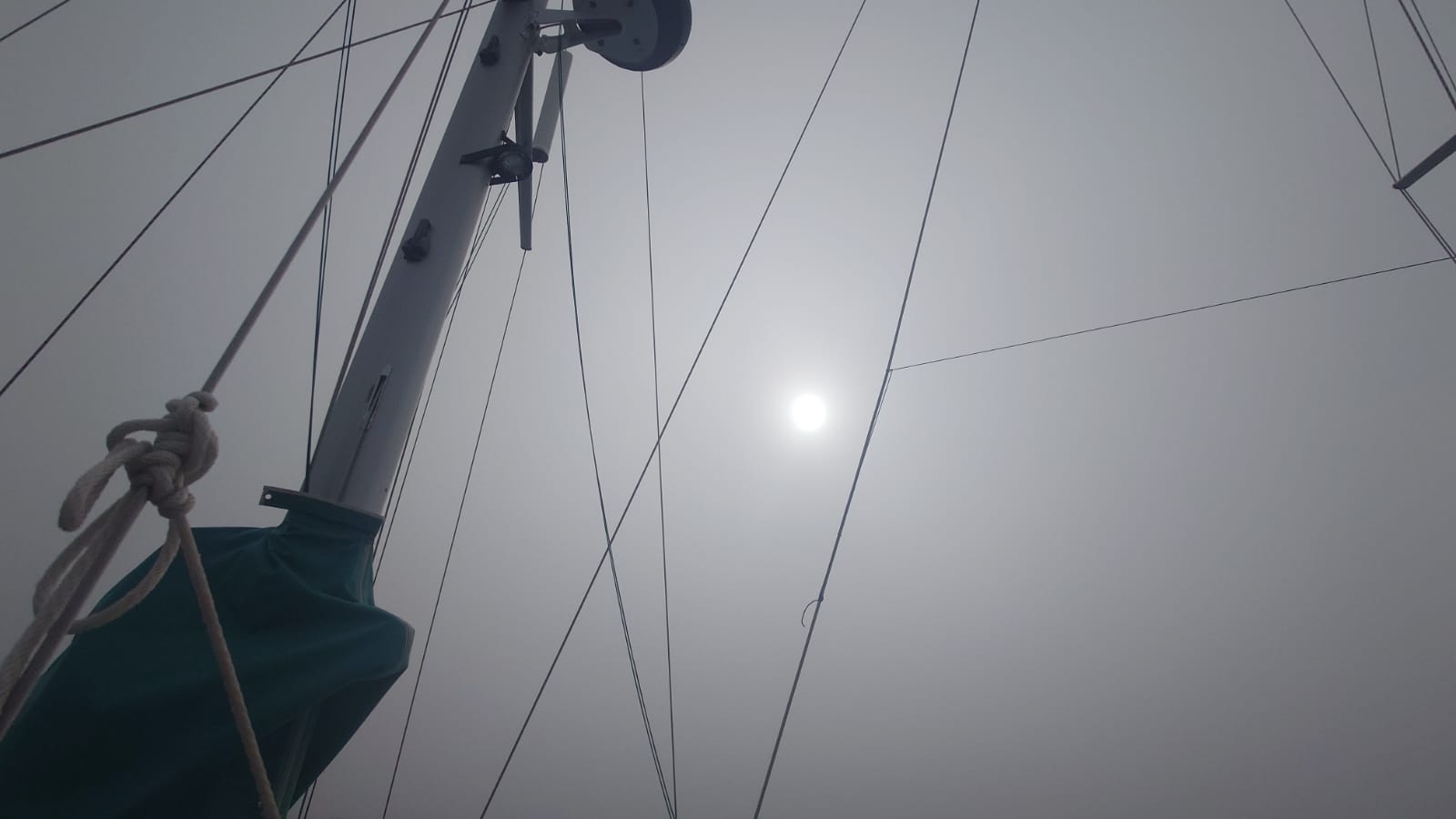
In the afternoon, the sun peeks through the fog so we decide to hoist our anchor and sail to the island.
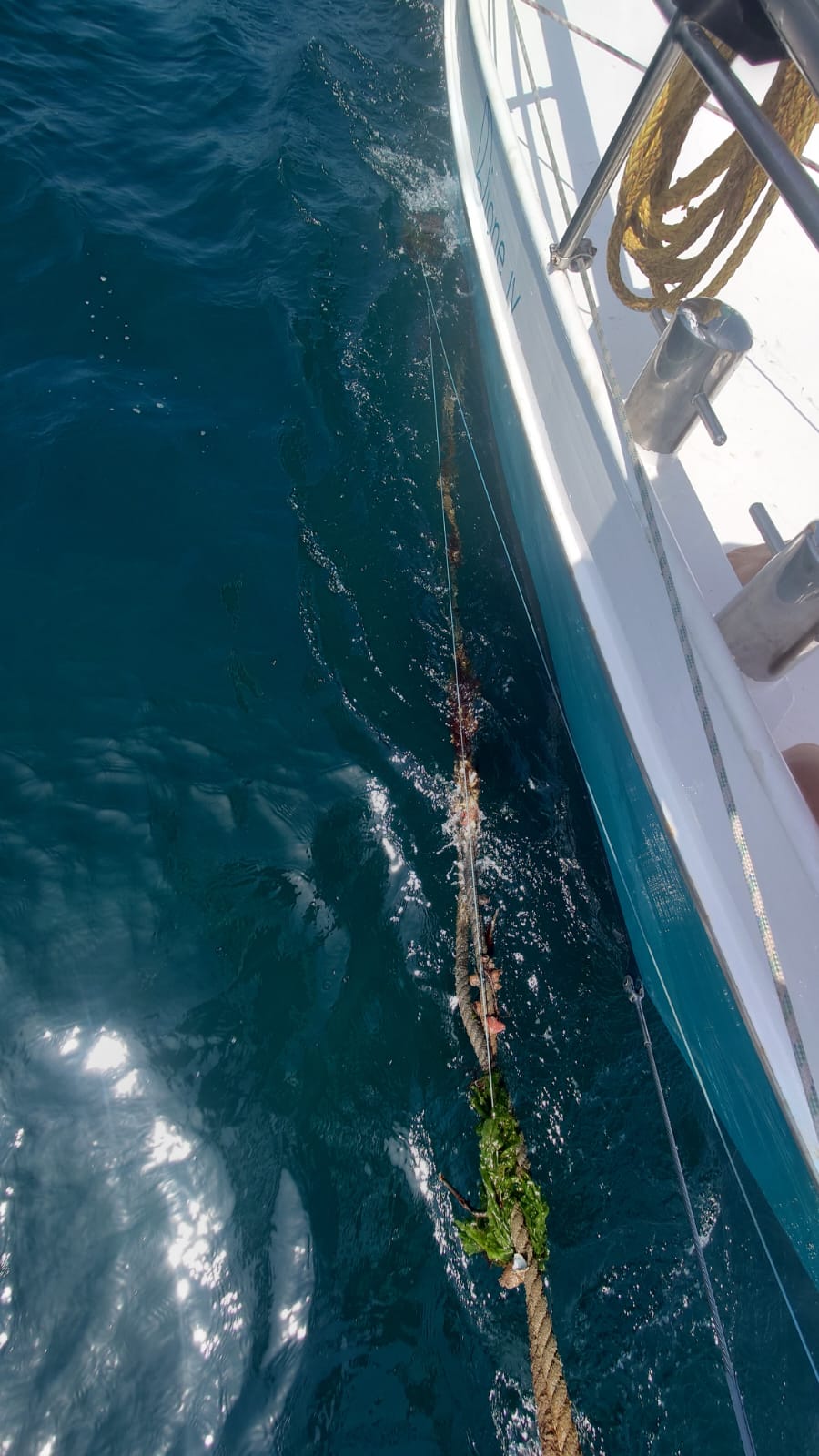
The line of our yellow anchor ball is completely tangled in it and it takes Wim quite a while to release everything while Sher holds Dione IV in position using the engine.
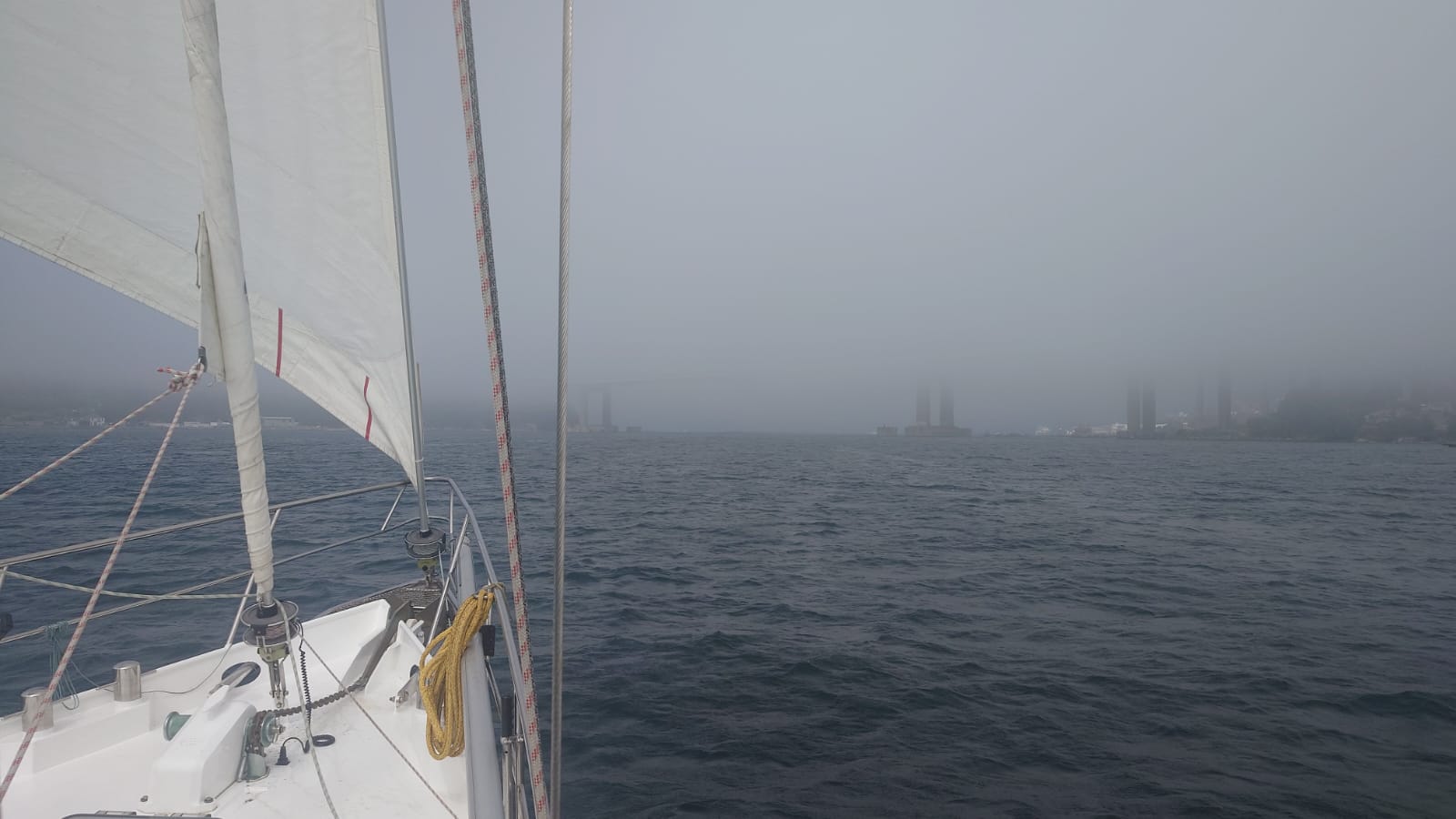
Once we round the mussel rafts we have a nice downwind breeze and we unfurl the Yankee. But we see the fog in front of us, under the high bridge that crosses the Ria.
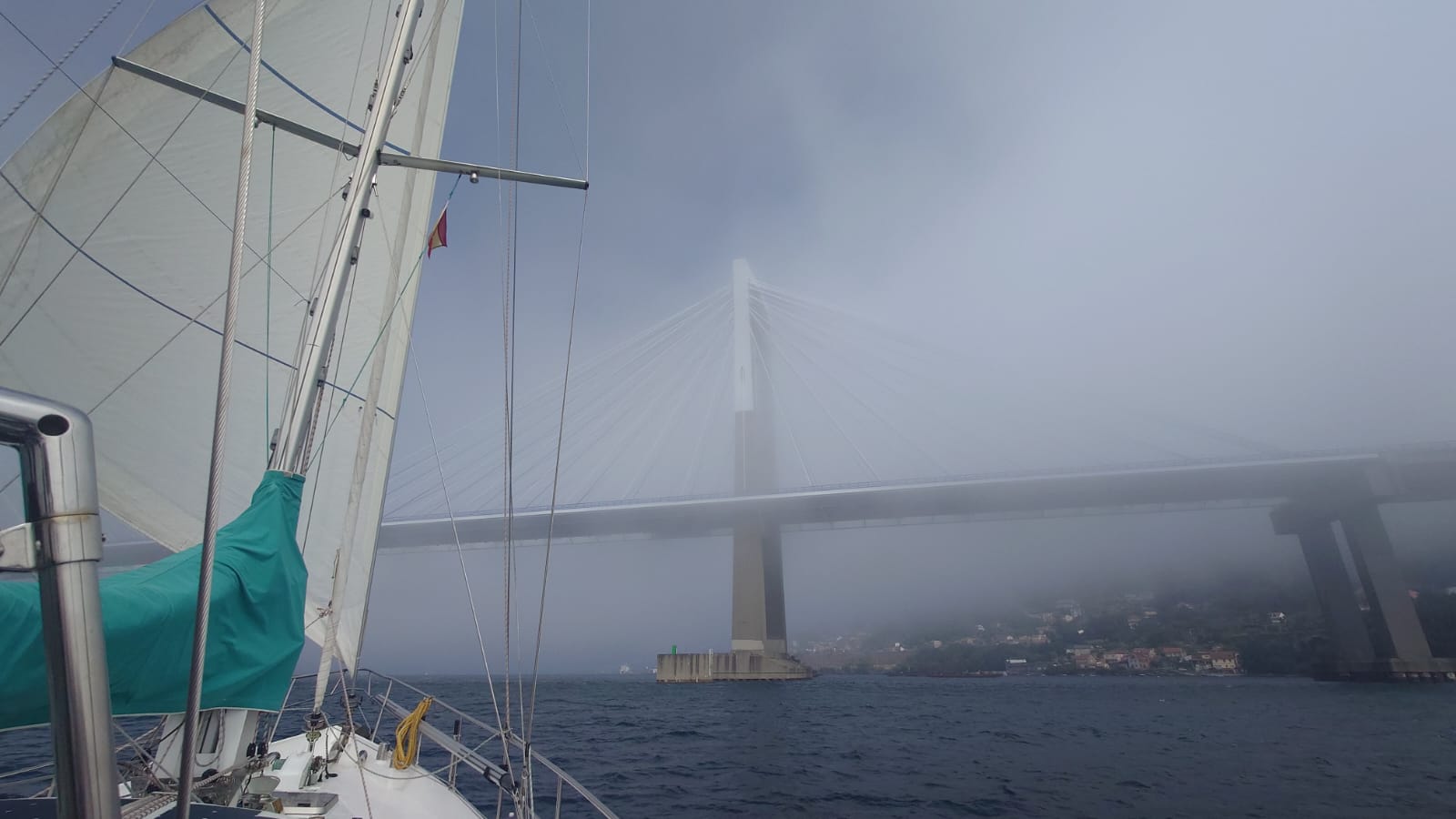
When we get to the bridge, the fog clears a bit. It looks like the Golden Gate bridge, which is often in fog, too! 😄
After the bridge, the wind stays 20-25 knots so at full speed we approach the island. The anchorage is behind the island and as soon as we turn we have complete shelter from the wind. There are many motor boats anchored with young people partying. Hm. We have our doubts… While we drop our anchor with a view of drunk guys pissing overboard these yachts… The first time our anchor doesn’t hold. Mud and sea grass. The chain and the fore deck are a dirty mess… Next try. Again no hold. Next try, another spot. No hold. Hm. Let’s find another place We motor against the decreasing wind to the opposite side of the Ria and anchor in a shallow area (2m).
Yay! Dolphins!
And large schools of fish!
August 8.
A sunny morning on our side of the Ria. The fog is still coming in from under the bridge and the fog stays at the opposite side 🙂
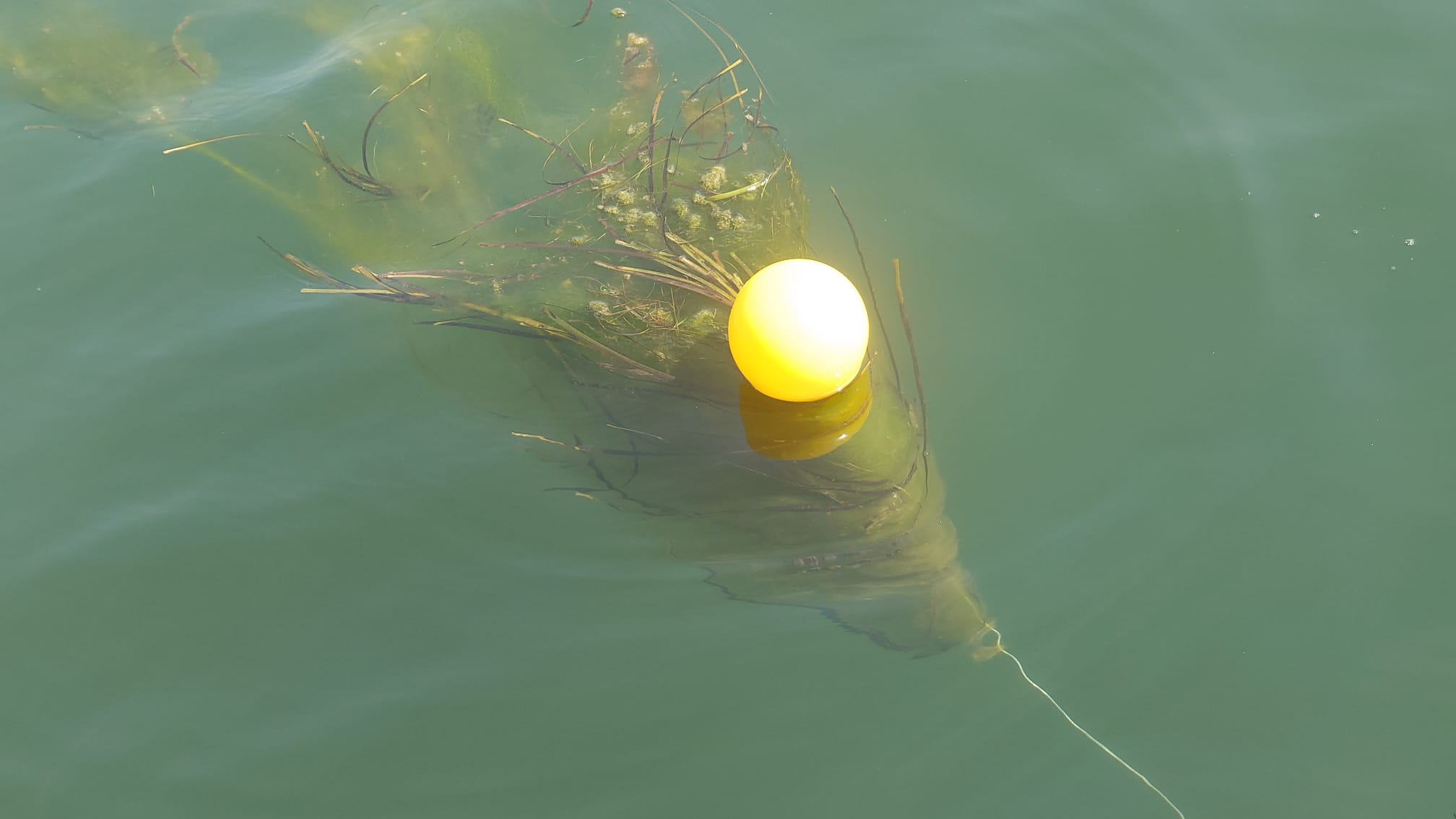
It’s a very shallow (2m) and very muddy and weedy area and there’s some current. Our anchor buoy, anchor chain, prop and rudder are full of seaweed and sea grass.
Sher paddles around the bay and she sees dolphins!
She tries to get closer to them but they are much faster! 😅
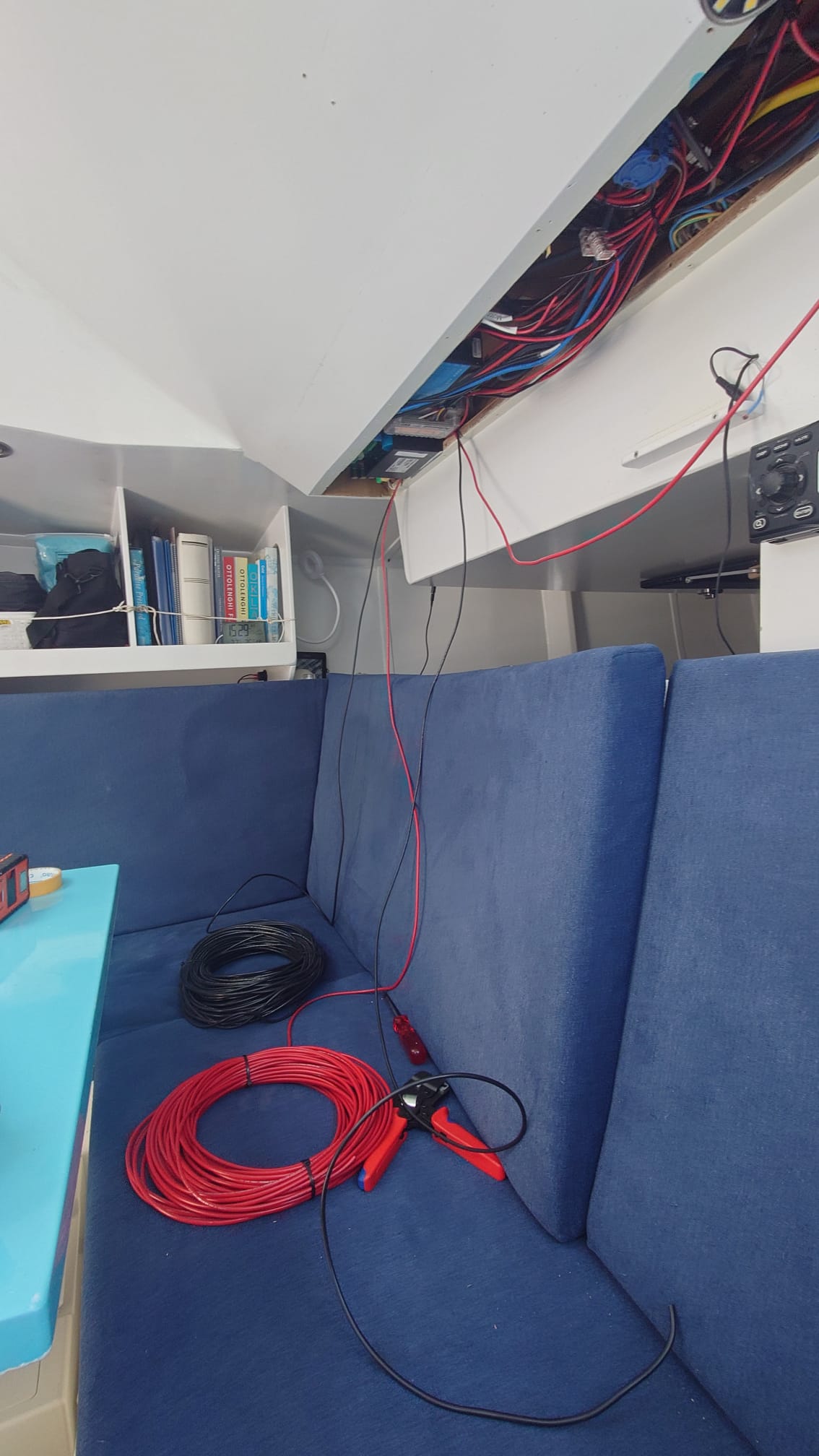
Meanwhile, Wim is installing the PY-Pilot components.
The motor controller has a place in the area under the instrument desk from the decksalon. The motor and clutch from the autopilot drive need some rewiring. Again, it’s so handy to have all the necessary wire diameters available in our cable storage under the salon floor 😊
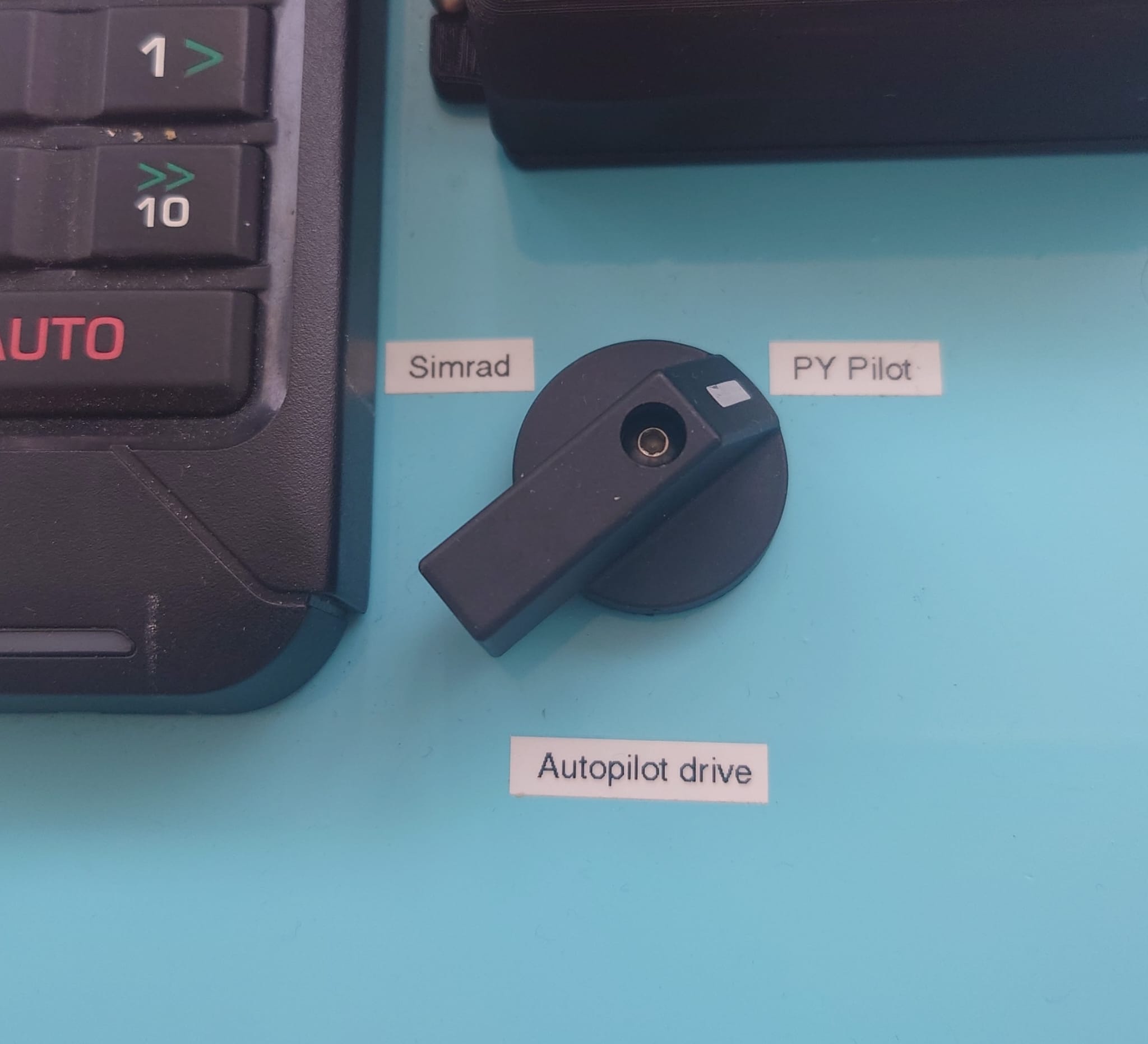
On the desk, we add a switch that switches the Jefa drive to either the Simrad autopilot controller or the PY-Pilot controller. Both autopilots stay separate and autonomous. If one system malfunctions or gets destroyed, the other system is not affected and can take over.
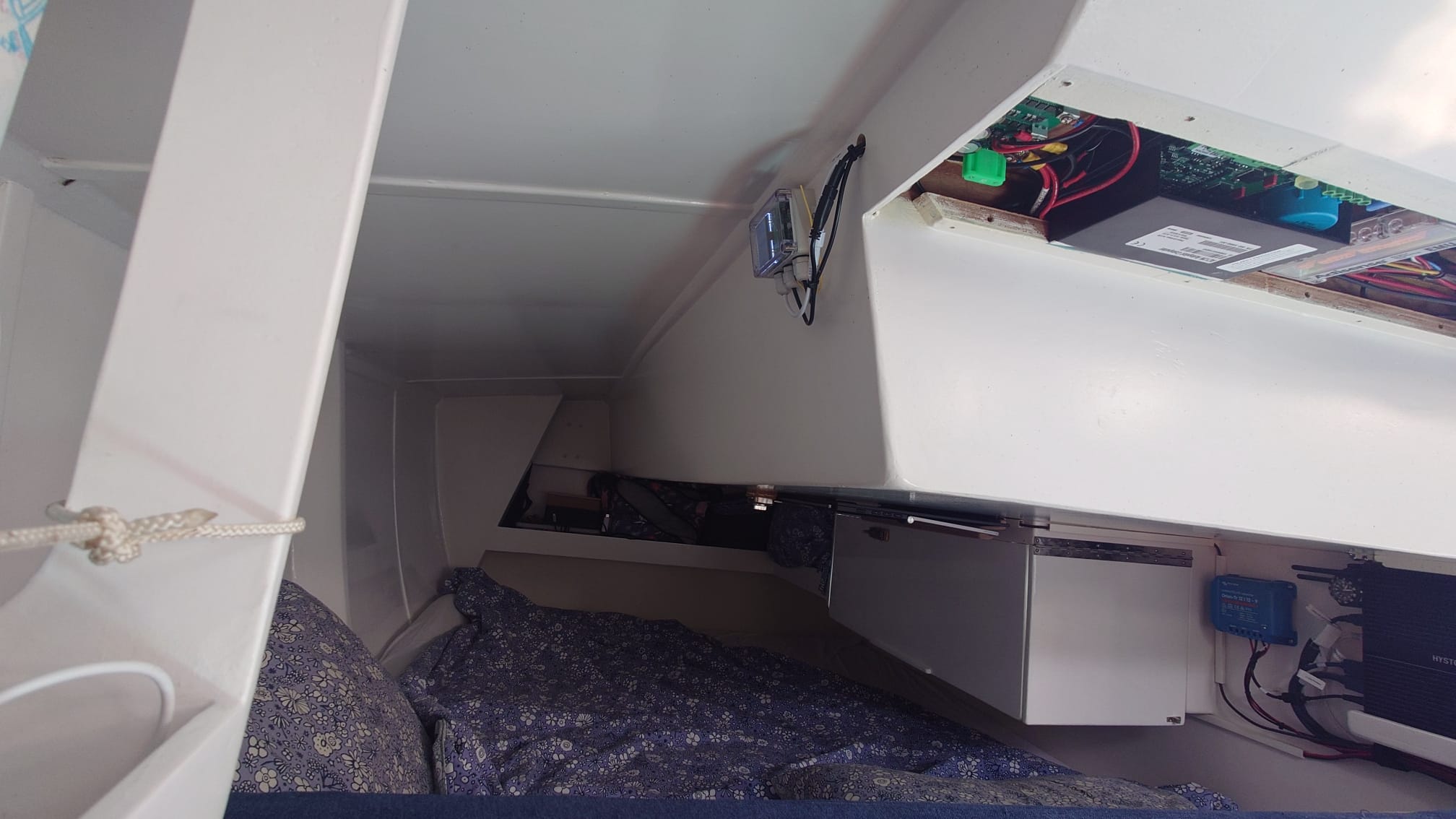
The PY-Pilot computer (a Raspberry Pi) sits just around the corner. It was a big challenge to find a right spot for it. The RPi has a HAT (Hardware Attached on Top) with a 9-axis motion sensor and an electronic compass. Inside our steel hull the earth magnetic field is weak. So, the slightest magnetic field interferes with the sensor on the RPi. Obviously it can’t sit nearby magnets as loudspeakers and electric motors but it also must stay clear of wires carrying electric current (they generate a magnetic field). Also, it can’t be close to the steel hull or other steel parts.
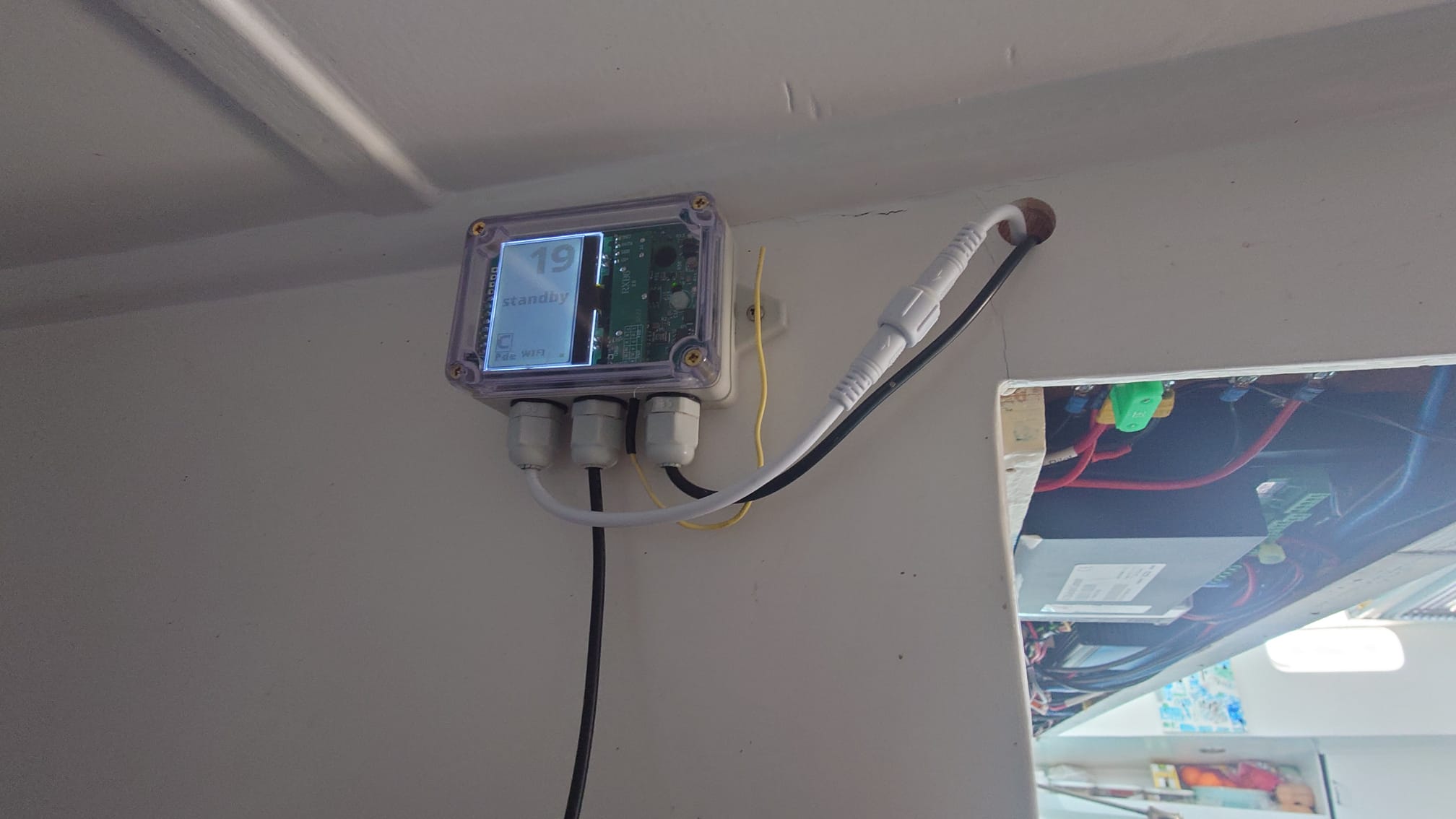
So we tested the compass readings in a hundred different places in the boat! Comparing it with the Simrad Rate compass and the old-fashioned magnetic compasses. Sometimes we thought we found a good spot with an accurate reading and then the boat turned and the reading was off by 60 degrees… Try a new spot, wait till the boat swings around the anchor, and so on… Finally, we found this spot, above our bed. And, very close to the motor controller. So, nice short cables. It’s not accurate to the degree but it stays within 10 degrees and it has a stable heading as the boat turns. And it sometimes reports compass distortions but they are quickly corrected.

At the left side, there’s the PY-Pilot motor controller.
At the right side, the Simrad autopilot computer.
In the late afternoon, the fog comes in again.
August 9.
The day begins with a magnificent sunrise at 8 o’clock! We have such lovely weather all the time. Everyday around 30-35º C, not too much wind, often a gentle breeze to keep us cool, no rain at all (we had a little bit of rain only once, at Illa de Arousa, since April), very quite nights (often without any wind), a perfect summer!

Today, we’re going to do big job… Empty the lazarette and the forward cabin storage. Sher is going to reorganize stuff. We’re too heavy in the stern and the bow could use some weight. Our waterline at the stern is at the border of the Coppercoat and at the bow we have about 15cm of Coppercoat above the water line. So, heavy things are going to be moved forward en light things are moved aft. By the end of the morning, the boat is one big mess! 😅

And while the lazarette is empty, Wim can reach the rudder to install the rudder position sensor for the PY-Pilot system. He extends the wooden foundation next to the Simrad rudder position sensor.
That evening, everything is stowed back in place and the boat looks like boat again! As if nothing has happened. Except that our waterline is balanced pretty good now!
August 10.
It is such a tranquil place. Very special.
Almost nothing happening ashore, except for the sound of a party at Saturday night. A band plays. And they are really good!

Wim finishes the wiring of the PY-Pilot system and adds a little 12v to 5v converter to power the RPi.

We draw the long wire to the rudder position sensor from the stern, under the aft bed, through the aft cabinet, under de decksalon l, under the steps, through the salon couch, up through the wire cabinet in de decksalon, trough the wire cabinet under the desk to the PY-Pilot computer. Half a day of work…
And it works! We see the rudder position in the software.

Now, all the hardware is installed and functional. Next is playing with the software and testing it at sea.
In the Netherlands, our grand daughter Elin says cheers to that! 😂
August 11.
The night are so special here. Very tranquil. Not a breath of wind, complete silence (during the day we hear the highway, A Coruña – Vigo), the sea like a mirror and a full moon.
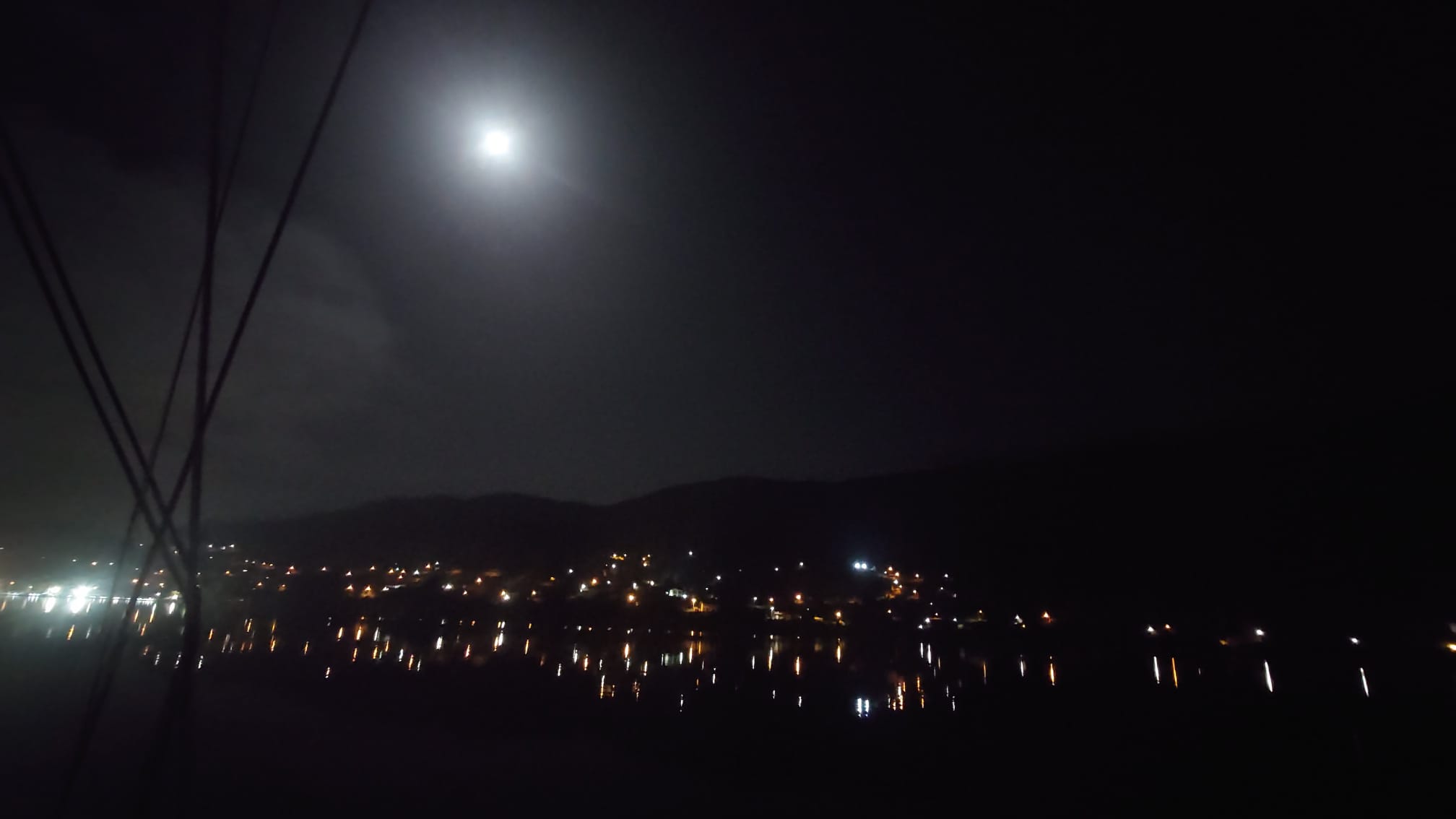
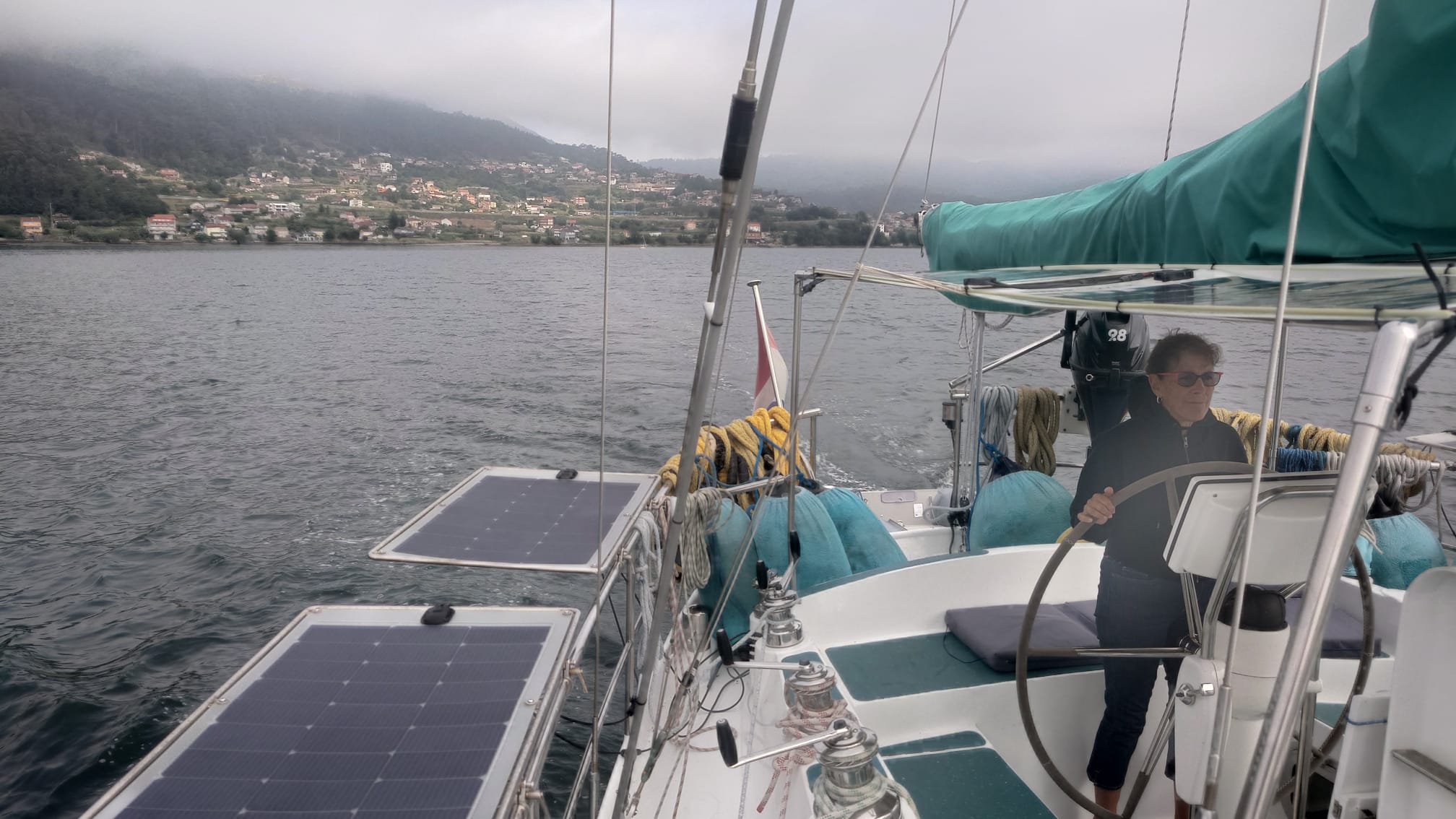
But, it’s time to go. We have to go back to Moaña. We have bought a “Sailrite” heavy-duty sewing machine, second hand, in Scotland. This is the ultimate sewing machine for sails and such. And they’re hard to get. But it’s got stuck at the Spanish customs and Sher wants to arrange with marina Moaña to import the machine by them.
At 10 o’clock, we hoist anchor. There’s a has a huge amount of weed and mud on the chain and it takes a while to clean everything.
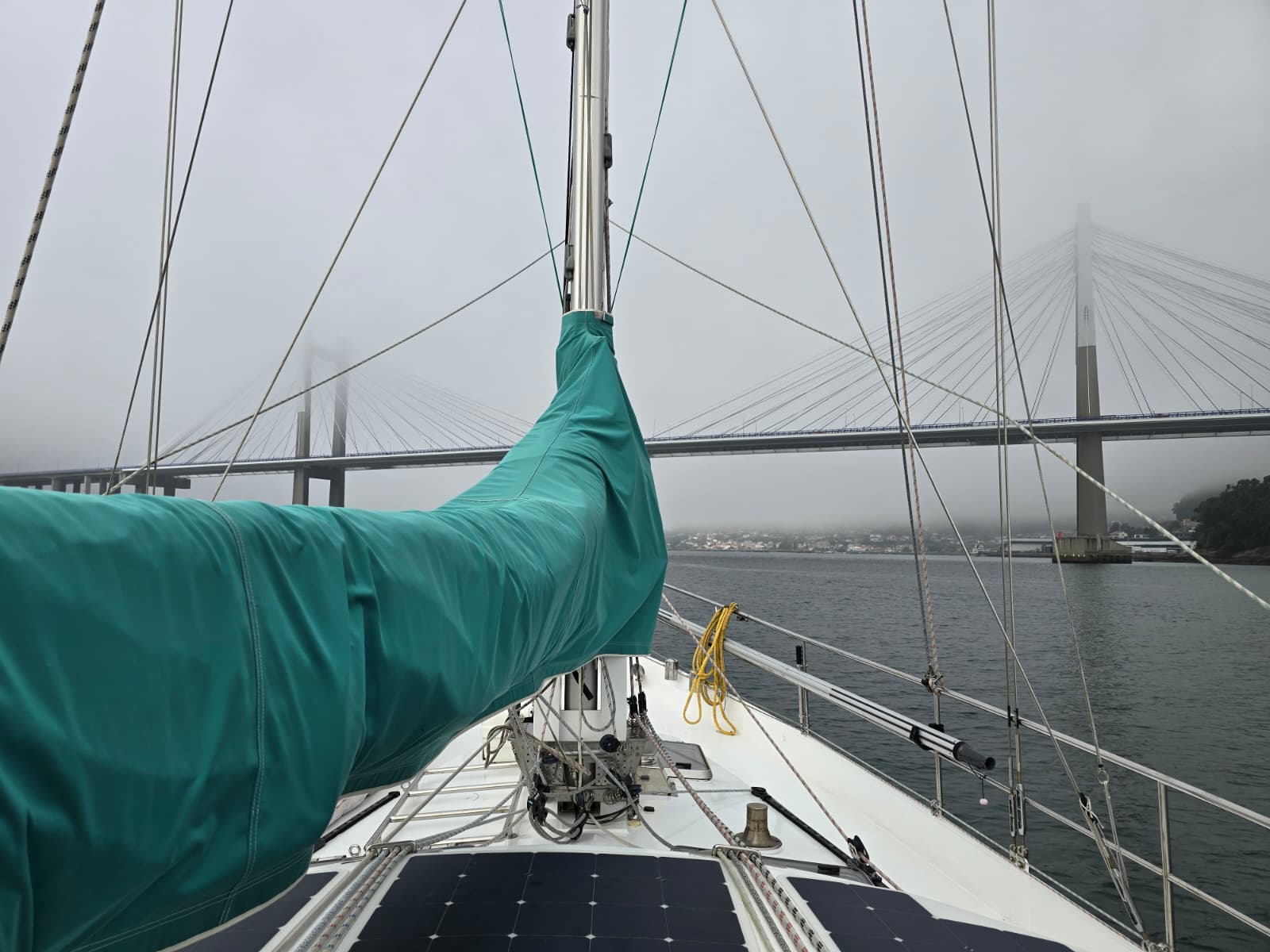
There’s almost no wind and it’s cloudy. So we motor the 7 sea miles back to Moaña.
We test the PY-Pilot. It works pretty well! Well, it needs some tweaking with the settings because we sail a slightly zig-zag course. But that’s normal. Every boat behaves differently and there are numerous settings. All at defaults now.
When we pass the bridge, we notice our exhaust is steaming a bit. We see less water than normal coming out of the exhaust. Hm. There was so much weed at our anchorage at Enseada de San Simon, it could very well be that the sea water filter got clogged. Wim takes a look, it has a transparent lid so it’s easy to see. Hm. Hardly anything in there. Well, maybe the impeller of the sea water pump is giving up… We decide it’s not wise to try to sail the last few miles to Moaña. Although the engine’s temperature is not rising yet. We turn to the coast and anchor.
Wim takes out the sea water filter and as expected, there’s not much dirt in it. Sher cleans it, though. Sher says: maybe there’s something blocking the inlet? Nothing to see, but Wim decides to open the sea cock and see how much flow there is. Hm. Not much! Sher has another idea: stick the flexible grabber stick trough and see if it starts flowing. Wim pokes the flexible thing trough and suddenly a big amount of water starts to flow! Bloody! Obviously something was stuck at the inlet. We assemble the filter and test the engine:
Plenty of water! Problem solved. We hoist the anchor and continue to Moaña.
There’s welcoming committee waiting for us! 🐬😀
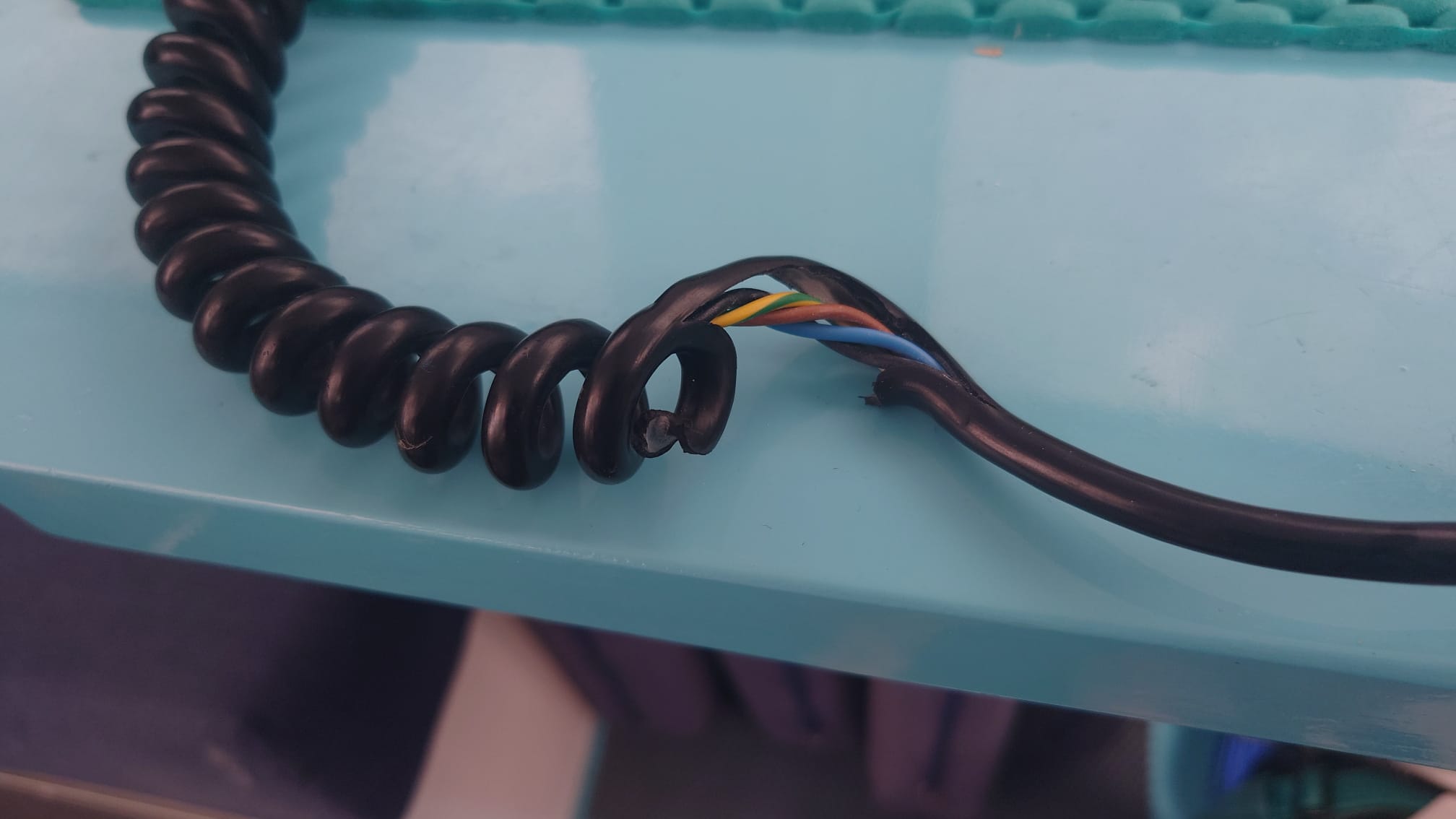
We anchor in the bay at the same spot as we were before.
Hey, the cable from the anchor winch remote control gave up after 22 years…
August 12.
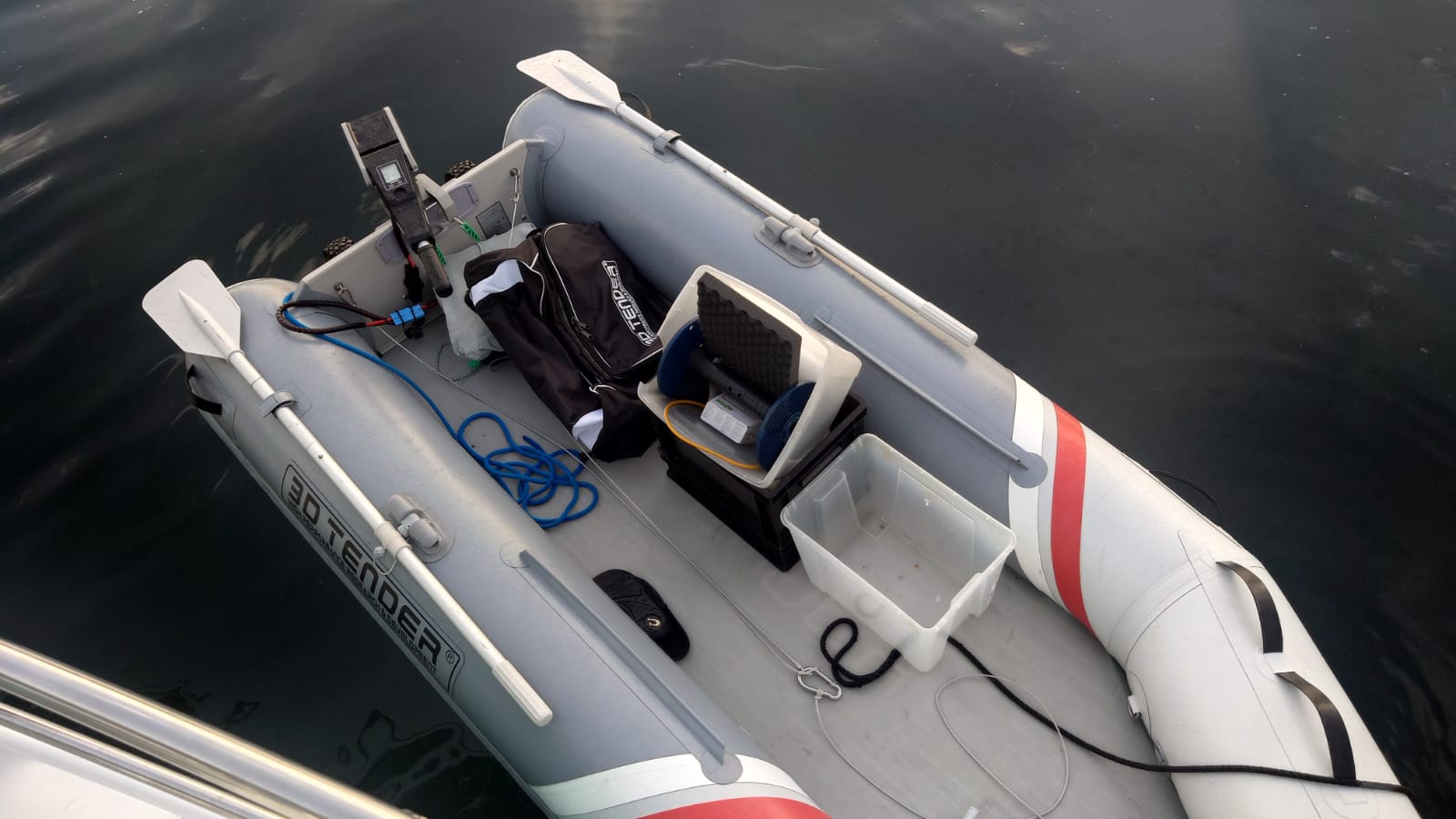
We’re anchored just outside the marina Moaña and today, Sher takes the ferry to Vigo to visit a fabric store and Wim picks up the packages at the marina office. We take a dinghy full of “donate” things ashore. Boxes and bags we don’t need anymore, after the reorganization. We put it next to the garbage containers and when Sher returns from Vigo, see sees everything has gone while the containers haven’t been emptied. Meaning, everything did find a second life 🙂

One of the things we ordered is a stand for our new electric outboard. Only, it’s made for 25mm railing and ours is 30mm. So, Wim has to mill it to the right size.
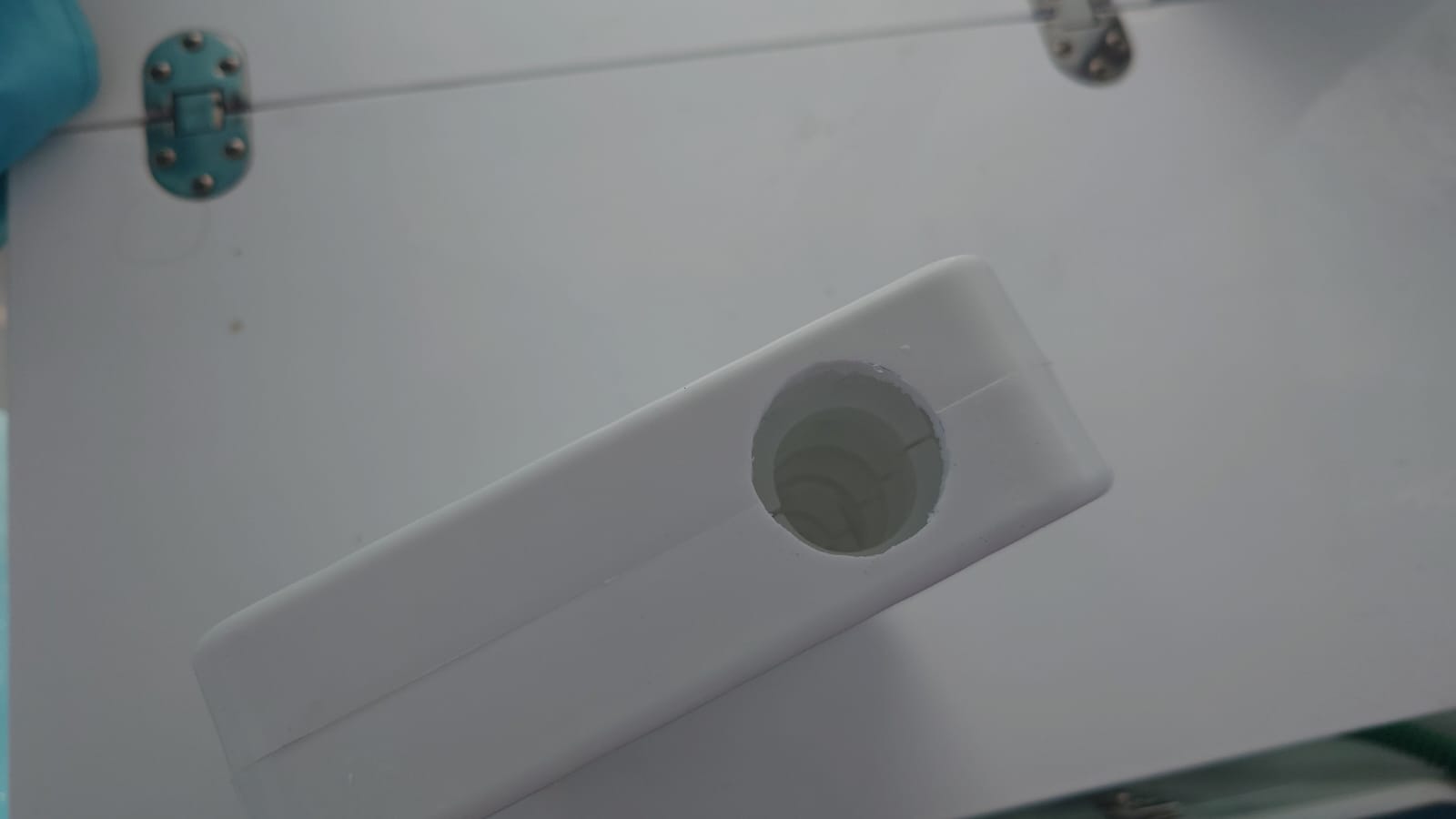
Done. Regretfully, our new Dremel tool (bought when we were in Viveiro) already gave up 😕. Upon research, it appears to be a known problem. That’s why it was so cheap (20 euro’s). End of production.
We order a new one.
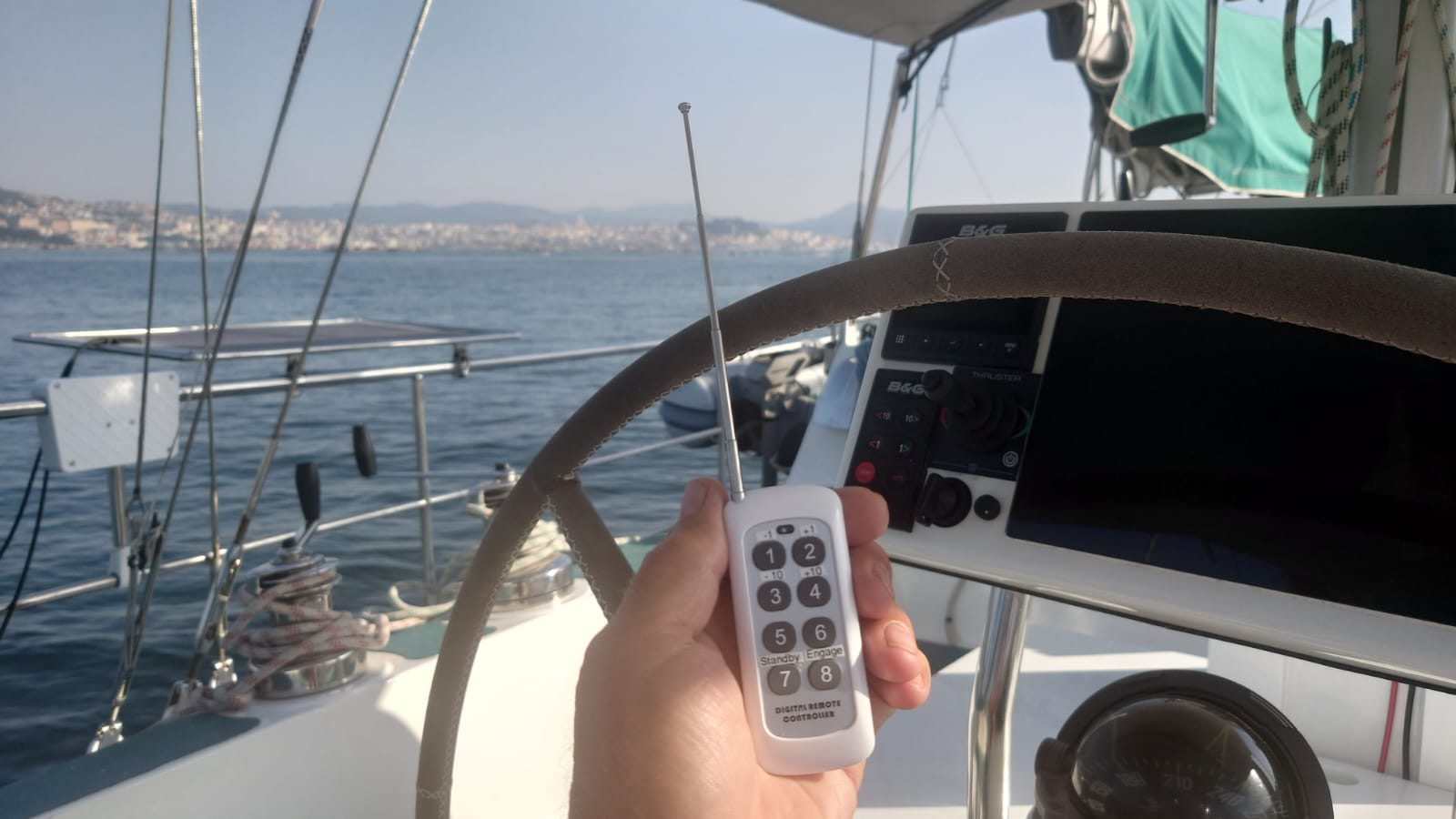
At the helm in the cockpit, we control PY-Pilot with the buttons on the OpenCPN screen or with this programmable remote.
August 13.
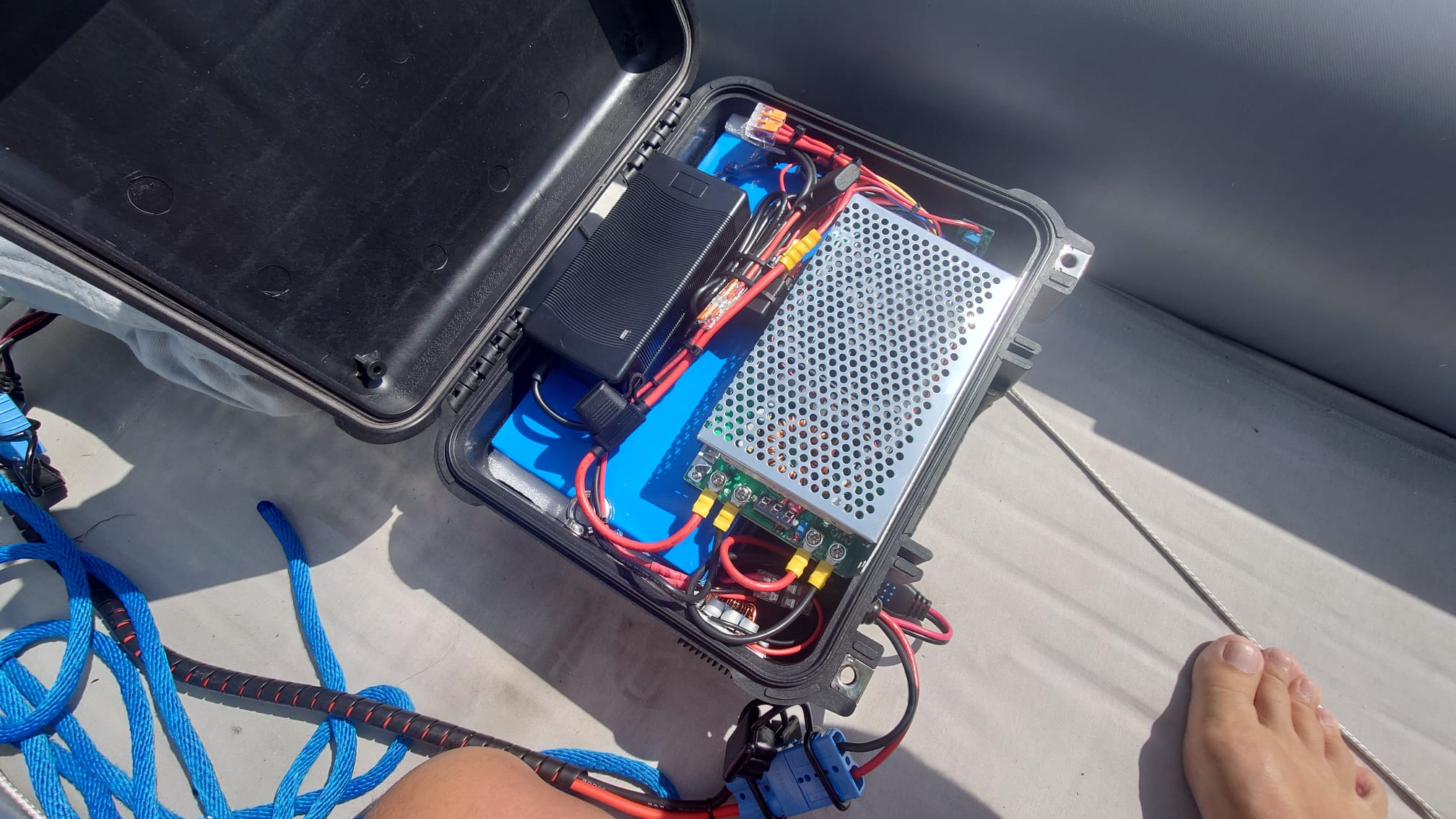
We’ve ordered another DC-DC converter at AliExpress to try. Wim installs it the second battery case. It it much bigger than the other ones and it looks really sturdy. We test it with a few dinghy rides and it looks rock solid indeed! No errors.

Sher is enjoying here sewing projects with the patterns she got from Michele and the fabric she bought in Vigo.

We’ve ordered a small sandblaster gun on Amazon, as an experiment.
When we have rusty spots or damages to the paint it’s hard to prepare the surface for primer. All rust has to be removed. Else it will continue rusting under the new paint. Grinding with the electric grinder is a good way but that removes steel around the rusty spot and the steel sparkles get everywhere on deck and start rusting. Besides that, the surface is a bit to smooth for the primer to attach well after grinding.
So, the idea is that sandblasting is more local, just removing the rust and leave a nice coarse surface.
We have our small air compressor that can go up to 8 bar.
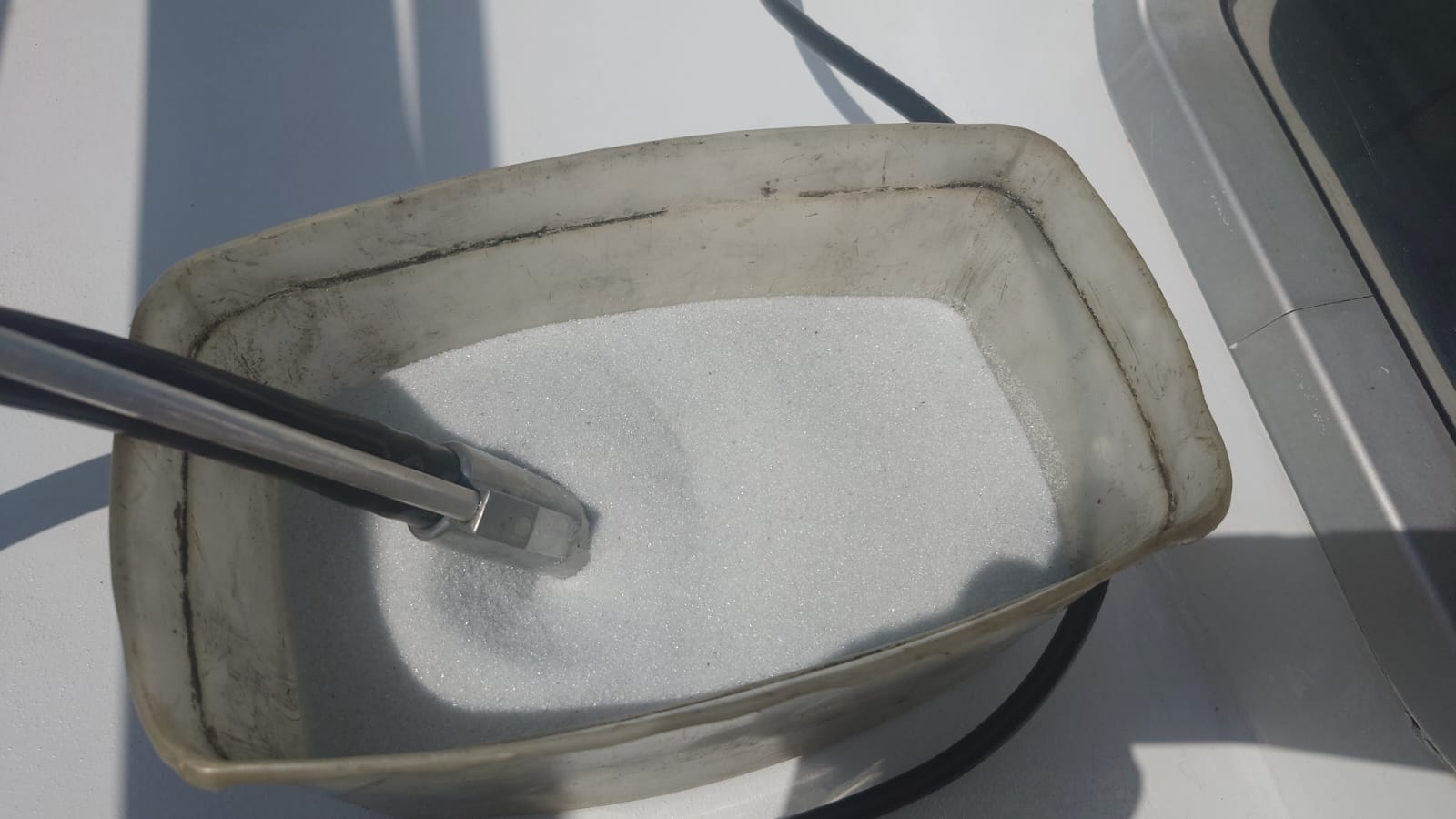
We buy “Blasterglass” glass sand for it. These are very rough pointy silica particles that are very abrasive by the speed they get from pressurized air. The hose sucks the sand from the container by means of a venturi injector in the ceramic nozzle of the gun.
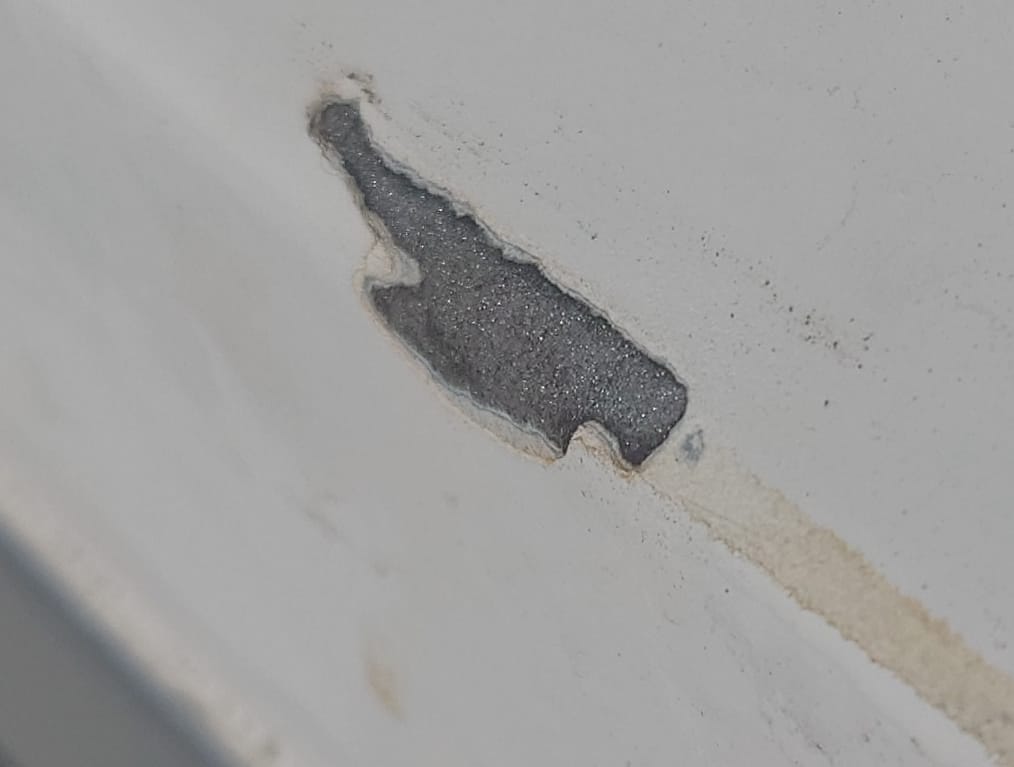
Wim carefully sprays a little damage on the salon deck that got rusty.
Wow! It works like a charm! After a few short blasts the surface is very clean and coarse. Perfect for primer.
When you click on the picture and zoom in you can see the steel glittering in the sun.

The dirt on the side deck is minimal. Wim vacuums everything but this is the only residue. And the glass sand is reusable.
Sher has had a pedicure treat in Moaña 🤗
August 14.

The last few days, Sher has been sewing the Sailrite “Phifertex” mesh pieces for our decksalon windows. This mesh blocks the sun for 70% so that it doesn’t get too hot in the decksalon.

She sew little pockets with a small neodymium magnet inside all around the edges. So, the mesh sticks to the steel and is easy to remove.
And there’s still a view from the inside out.


Wim has sandblasted 3 rusty spots on deck and applied the first 3 layers of primer.
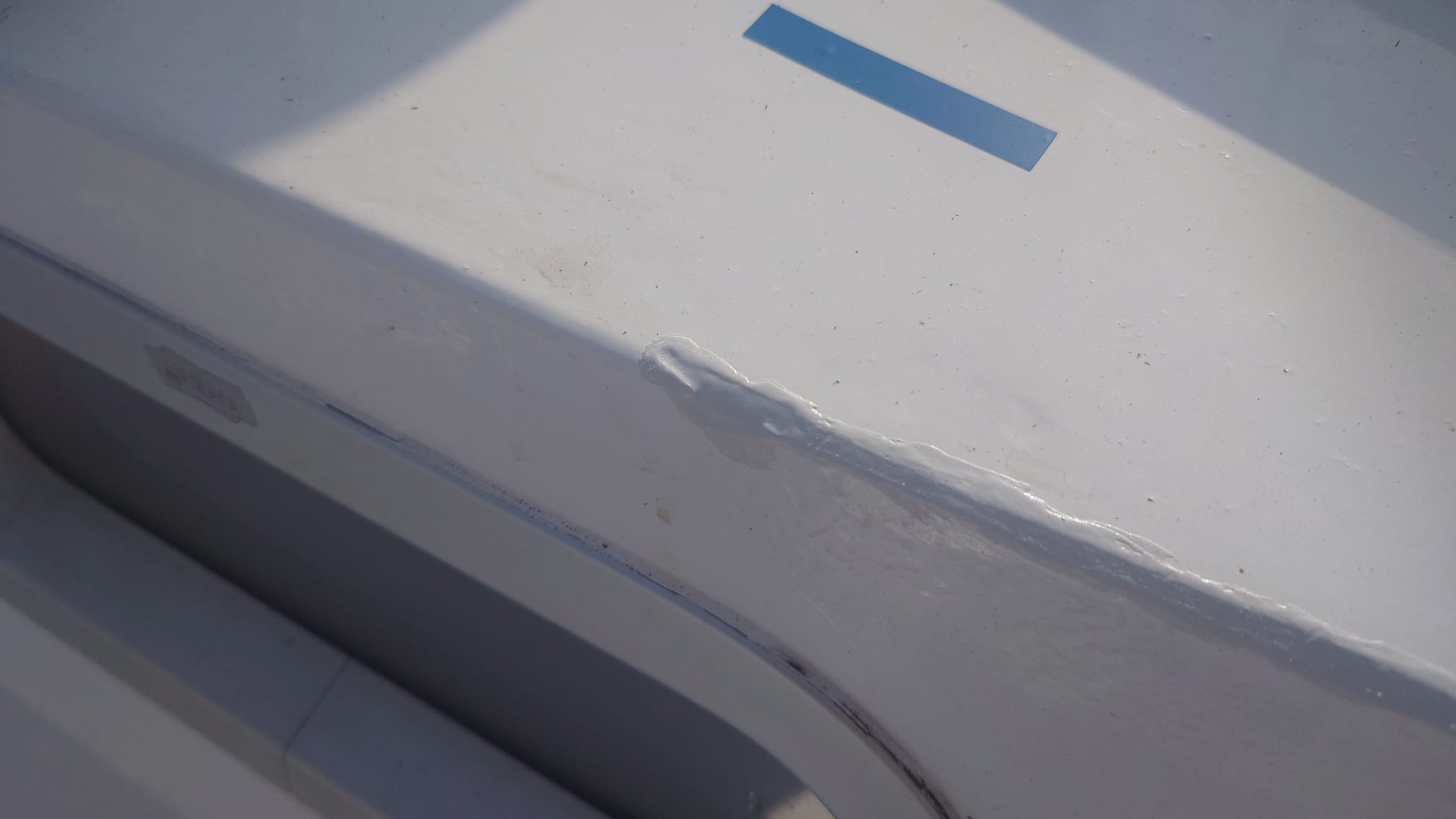

In the afternoon, a small boat is laying out some big yellow buoys. The com alongside and ask us politely to relocate because tomorrow there’s a swimming contest with 200 swimmers and we are anchored in their track. They point us to a place near the marina and we re-anchor there. It takes us a while to get a good hold because the seabed is very muddy there, we already knew that. But, after dragging 50 meters through the mud, the anchor digs in and we seem to have a good hold. Later, the boat with the 2 men comes by with their thumbs up and “muchas gracias!”.
August 15.
Today is one the most important festive days in Spain: La fiesta de la Asunción de la Virgen. The assumption of Mary.
In the morning, there’s the swimming contest. There they go!
They swim a big circle around the mussel rafts and back along the beach.
While the first ones reach the finish after 20 minutes, the last (slow) ones have just passed our stern. When they finally finish, more than 2 hours have passed! 😄
We expect a lot of celebrations, processions and music during this day and fireworks at night but no! Everything stays silent… Obviously Mary ascends to heaven very quietly… 🤔
August 16.
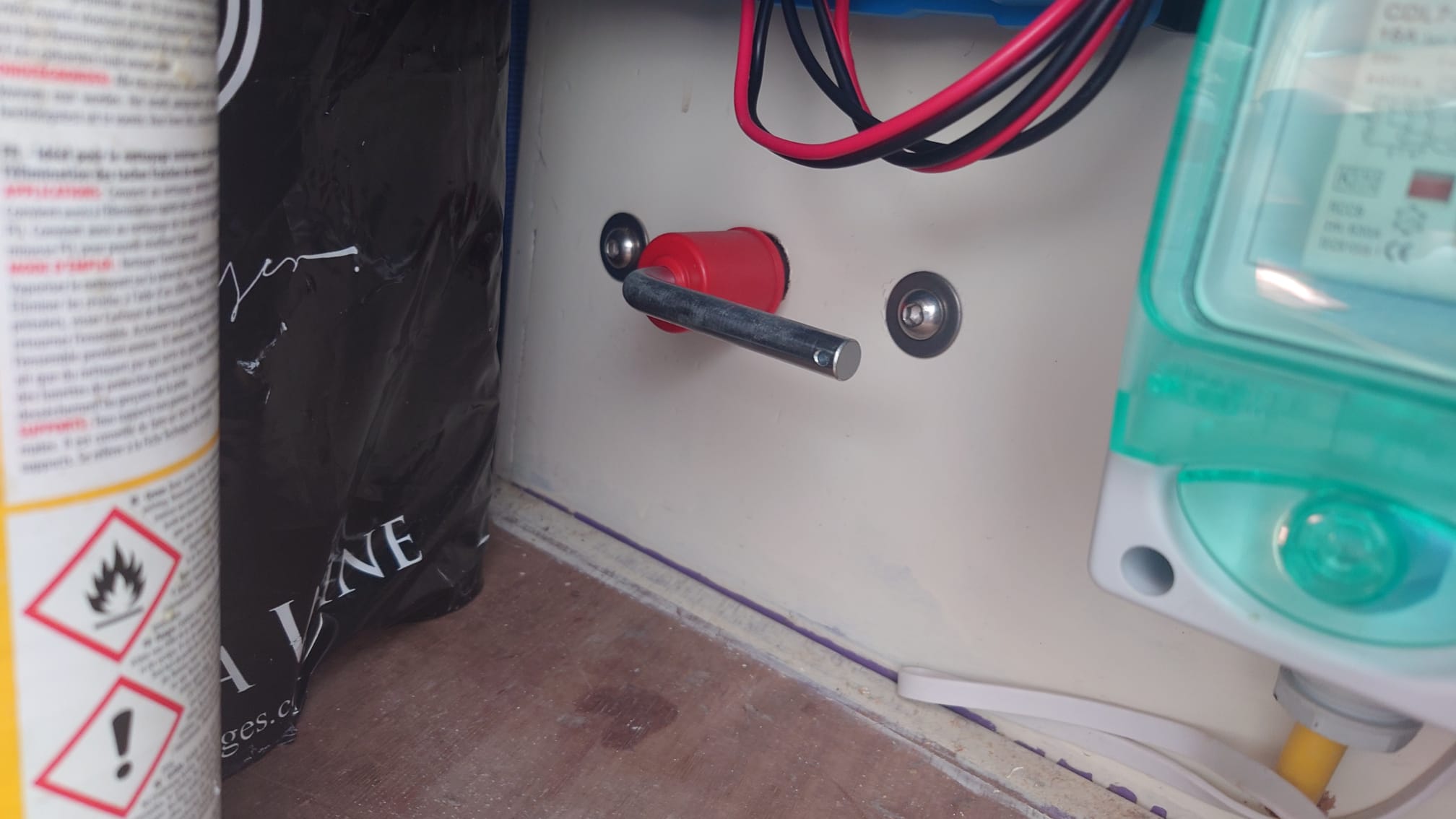
Another little project that was on our list. We have a heavy duty circuit breaker that connects the ground (minus) of the SSB radio to the hull. The purpose of this is that the shortwave transmitter (actually the antenna tuner) needs counterpoise. Counterpoise is the ability for the high power shortwave radiation to set off into the air. We use our heavy steel hull and the sea around us for that. Compare it with trying to jump into the air: when you set off from a trampoline, you won’t get very high. But when you set off from a concrete floor, you’ll much higher.
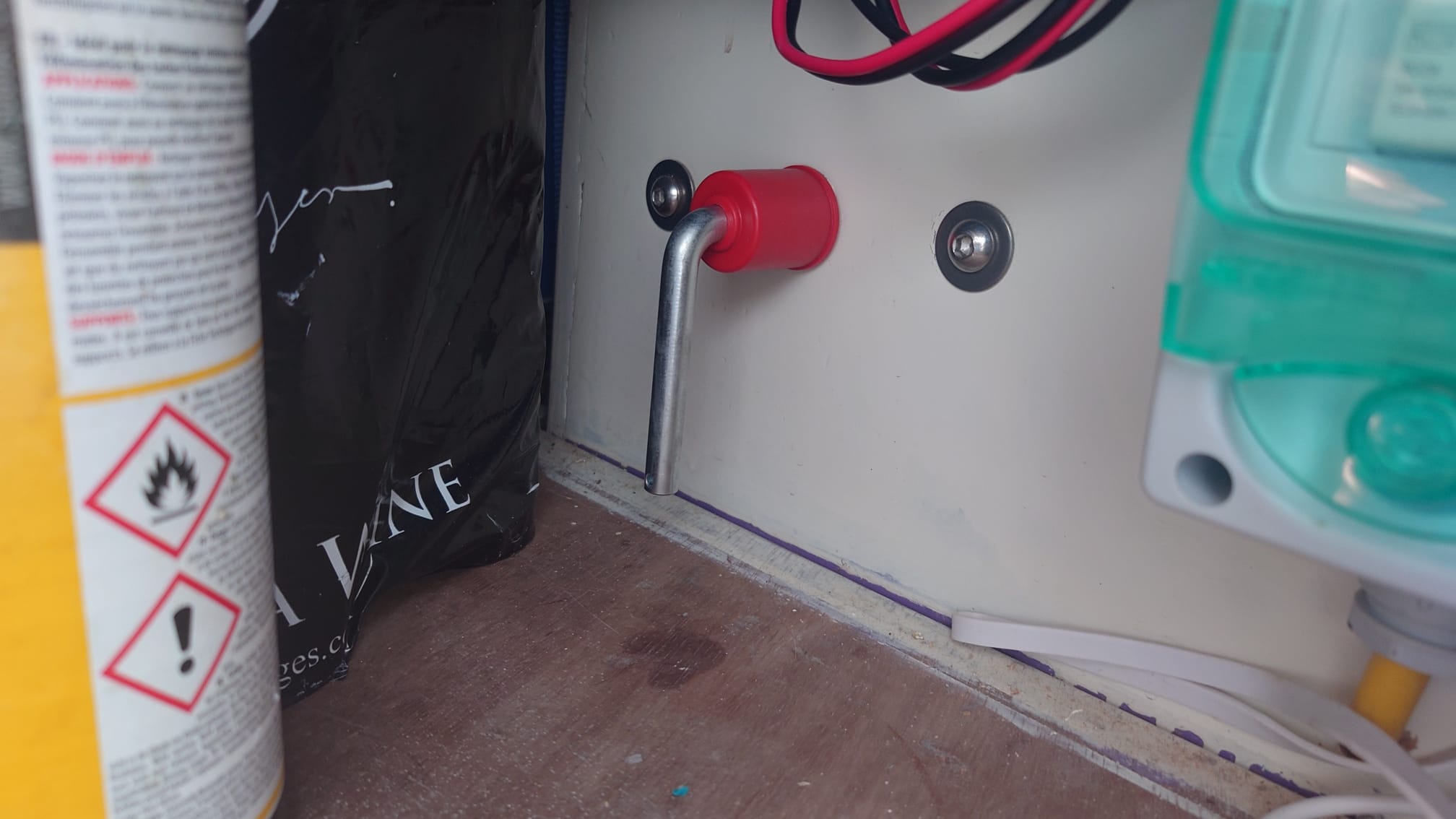
That’s why the transmitter needs a solid ground. A 100 square mm cable connects the antenna tuner to our 12mm thick center board case that connects to the entire steel hull and to the salt water around us.
But! We don’t want this ground connection to be there all the time. Our hull has no electrical connections at all, to prevent electrical corrosion. That’s why we switch this on when we use the shortwave transmitter en switch it off when we don’t need the shortwave (which is most of the time).
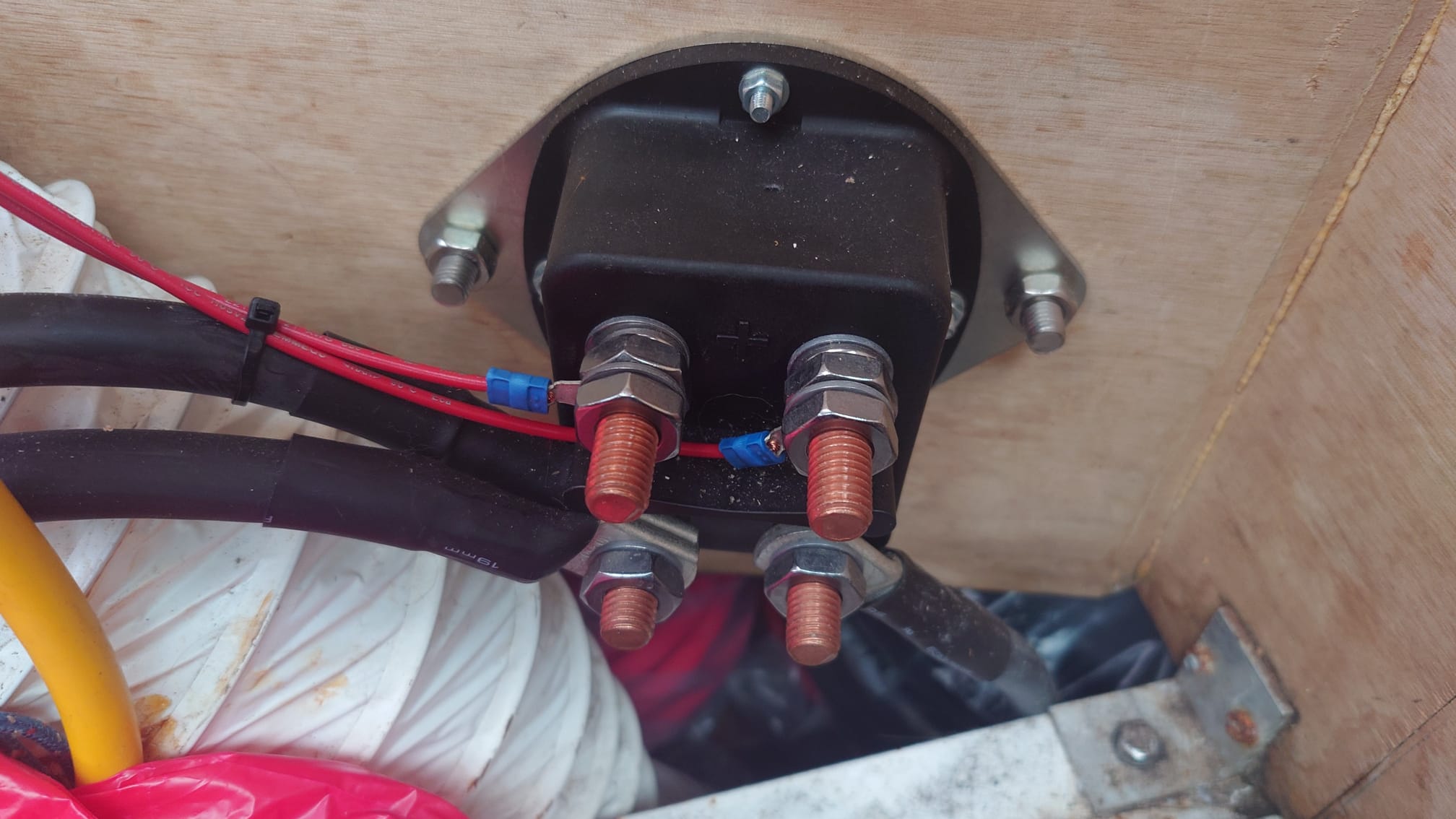
Now, we should not forget to switch this circuit breaker on when we transmit and not forget to switch it off after transmitting. That’s why we wanted an indicator. The switch has a double contact and we use one for the SSB ground so we could use the other contact for an indicator.
August 17.

In the morning, there’s fog and low clouds. A nice day for some projects 🙂
Sher continues her sewing and Wim gets out the boxes with plumbing stuff.
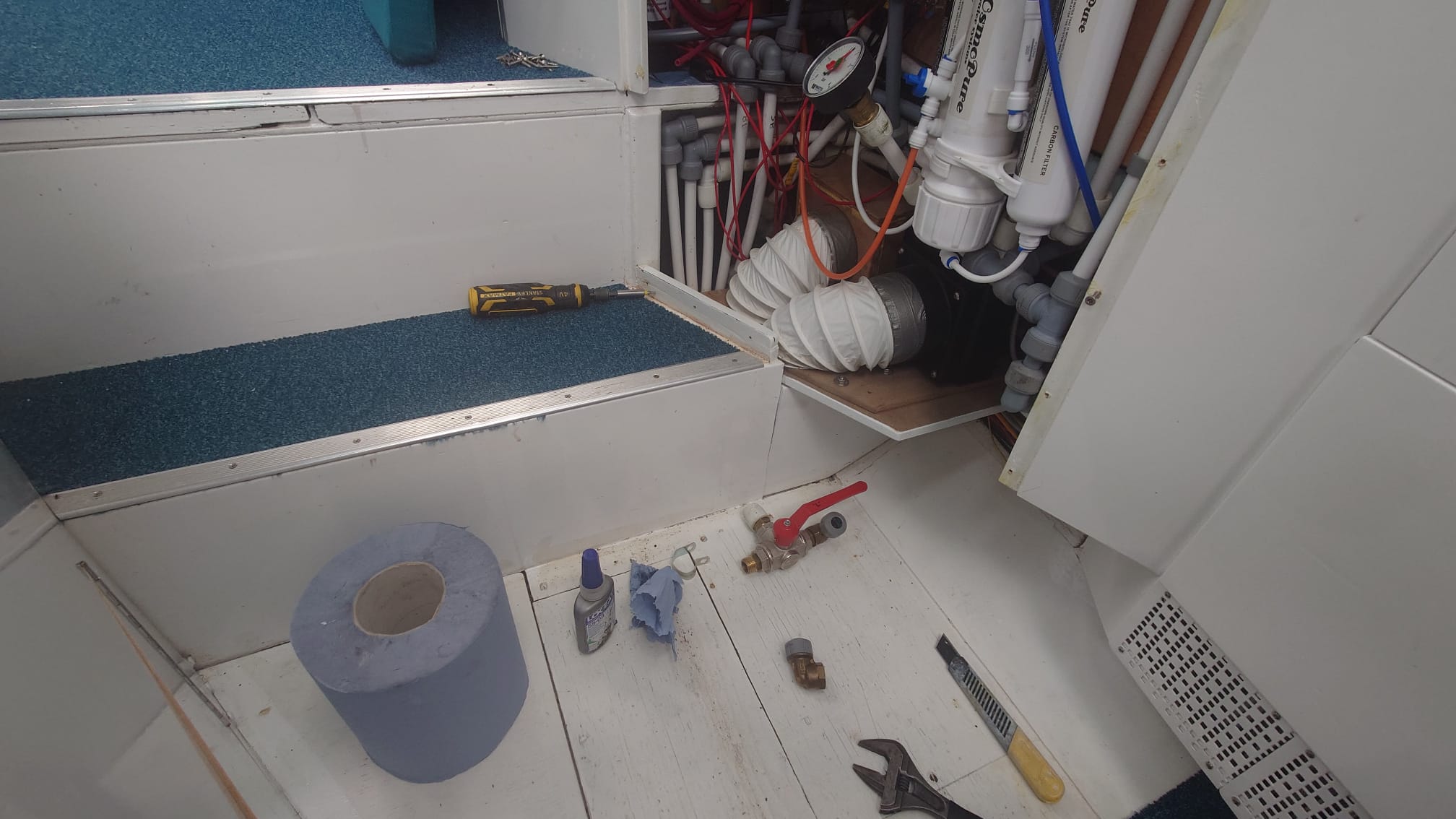
Recently we’ve changed the water supply for the cockpit tap from sea water to fresh water. We’ve used it frequently already, to flush the SUP, the decks, the outboard motor, the solar panels. Great.
But… when we got the engine cooling issue lately, we realized something: We have an emergency cooling system installed: in case the impeller breaks (in the seawater pump that cools the engine), we can switch to water pressure from the electric pump (used for flushing the toilet). But this is on the same pipe as the cockpit tap. So, emergency cooling is now with fresh water. So, we’ll drain our water tanks cooling the engine in such a case.
So, we decided to change this. Feed this system with a 2-way valve. Then, we can select to use either sea water or fresh water:
- Sea water for emergency engine cooling or washing down the anchor chain when its muddy
- Fresh water to rinse the salt from the windows, rinse the SUP or the decks.

So, now we have two 2-way valves:
- One for the toilet (sea water or fresh water) that was existing
- One for the cockpit tap and emergency cooling.
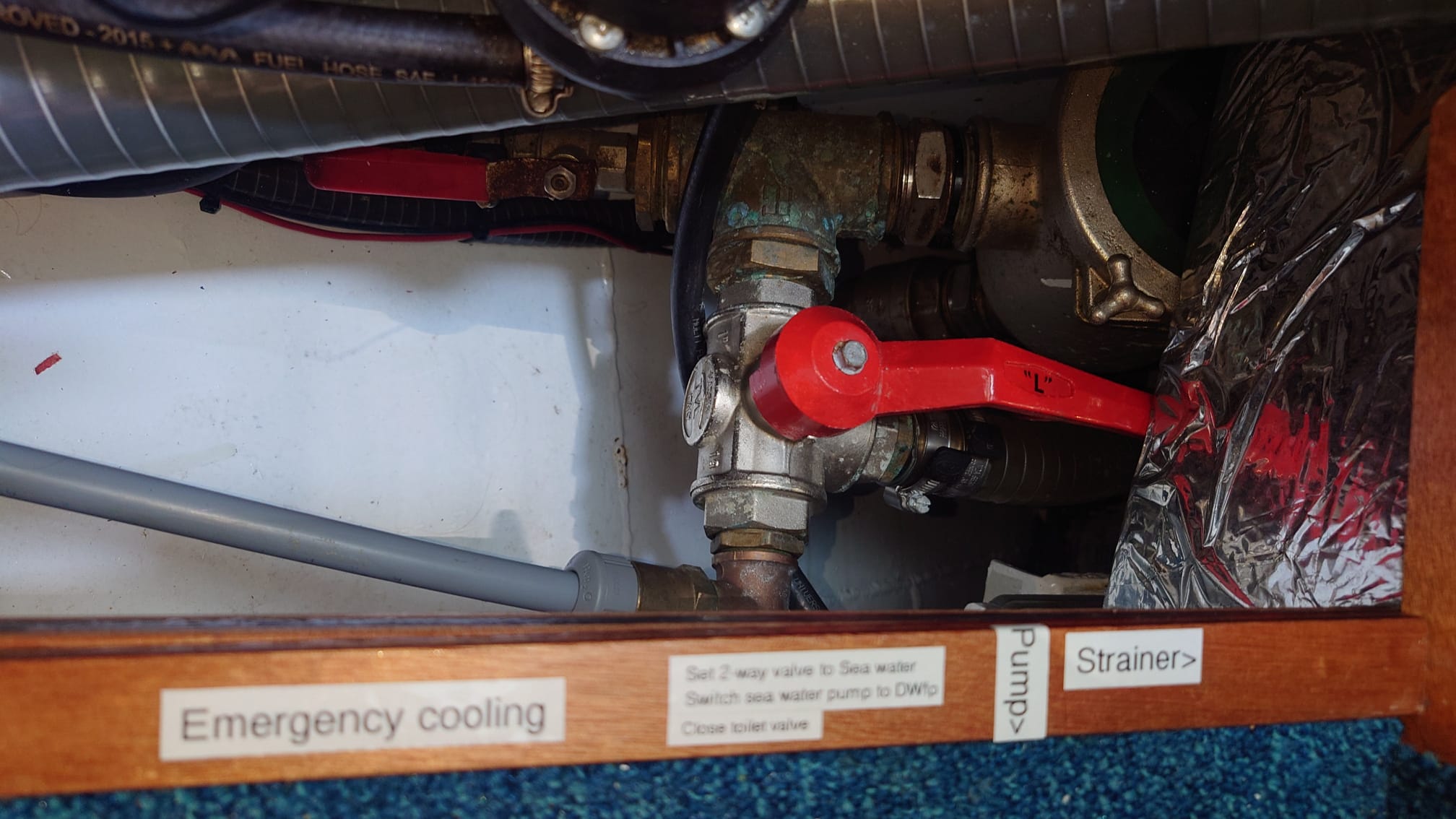
We make some labels for the emergency cooling procedure. Wim realized that he didn’t remember exactly what to do lately, when we thought the impeller might have broken… The system has been there for 18 years and never used… So, you forget. And Sher didn’t know anything about it so, she wrote down the procedure.
And then, another advantage popped up! ☝🏻Like we wrote, the emergency cooling system is used in case the impeller breaks and there’s no time or place to repair it (replace it by a new one). Imagine a situation in strong winds, high currents, entering a port or between the rocks where we can’t go anchoring or have room to float around for half an hour…. Then we just need the engine. In that case, the electric sea water pump simply forces water through the seawater pump with the broken impeller. Until we reach a safe place for the repair.
So, the 2-way valve (with the red handle in the picture) switches the engine inlet from the sea water strainer to the electric pump (which we have to switch on manually). But now that we can select sea water or fresh water, we could also use this system when the strainer gets suddenly clogged at a very bad moment! Just switch it to fresh water. That will cost water from our tanks but it’s only for a short time (only until we can clean the strainer ASAP) and losing drinking water is still a whole lot better than shipwrecking! 😵
Another job is gone from our list and a system improved!
August 18
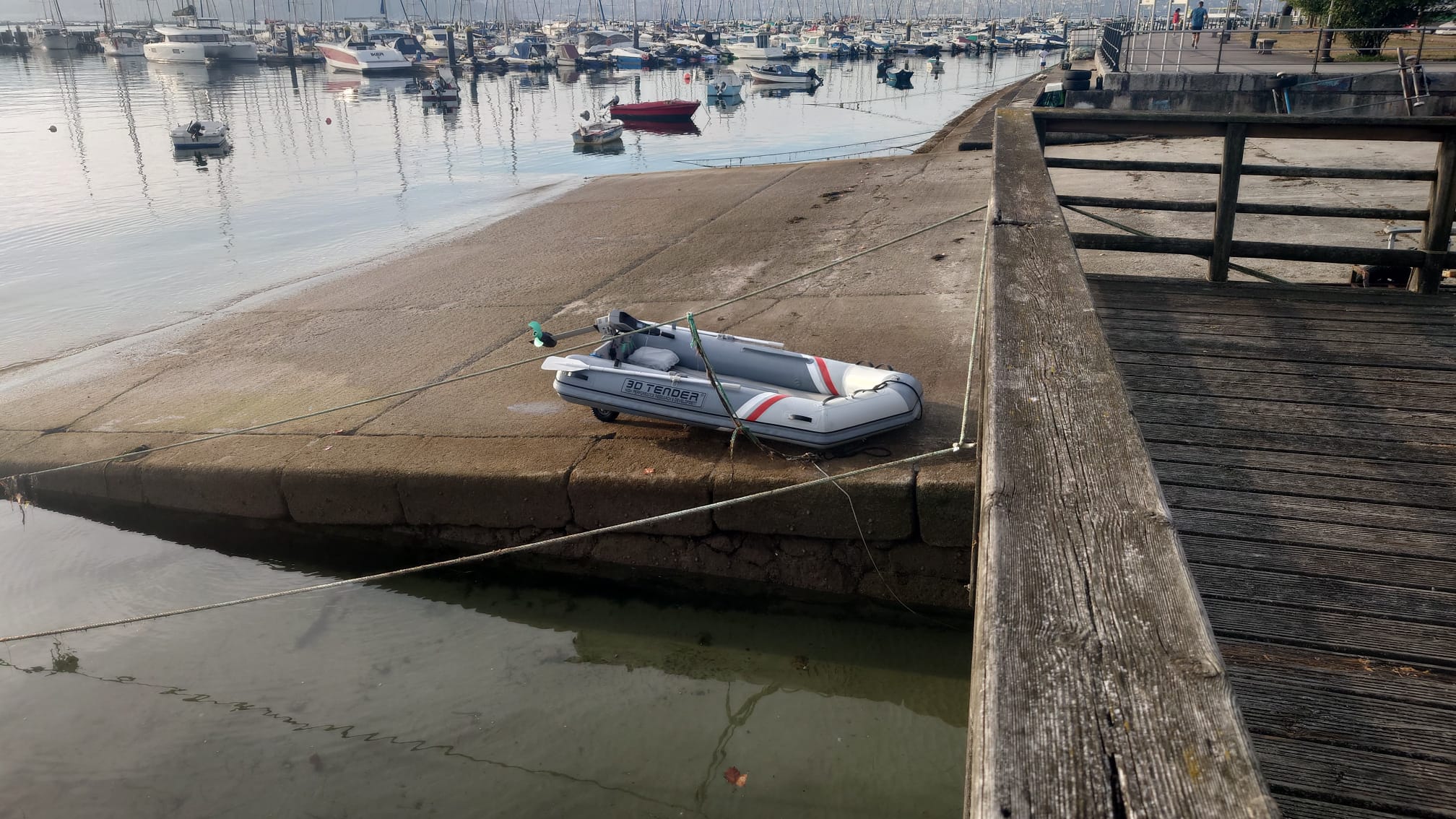
In the morning, Wim visits a dentist in Moaña for a dental cleaning. The dental clinic is located at the boulevard.

From the dentist chair, he has a view over the bay where Dione IV is anchored! Well, that makes going to the dentist a real pleasure! 😄
The dental / gum line cleaning by a female dental hygienist and an inspection by the dentist himself is all good and costs 4 times less as in the Netherlands!

Then it’s time to take out the plumbing boxes again. We want a small modification in the flush system for the toilet.
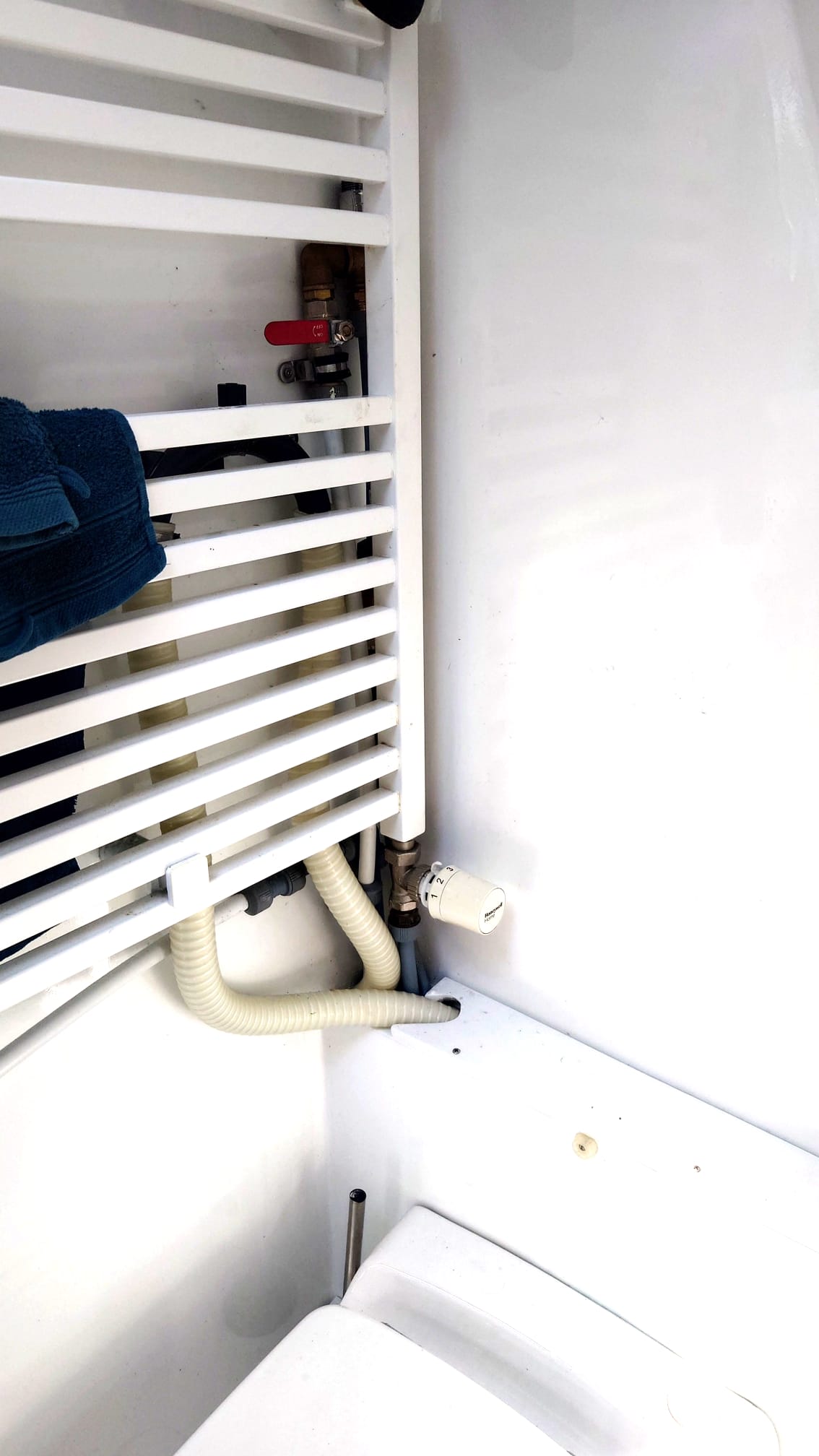
The main valve for closing the water flush is in a hard to reach place (in the cabinet behind the steps to the forward cabin and behind some electric tools). We want it to be in an easy accessible location. In case we have to close it in an emergency situation we don’t want to dig dig out electric tools and such. So, it find a nice place behind the radiator.
August 19.

By the end of the morning, we get a message from the marina office. Package has arrived.
We jump in the dinghy and race into the marina. Yes! There it is, finally. The Sailrite sewing machine!
It took a lot of trouble to get it through the Spanish customs and a lot of patience (it took 1 month and 1 day to get it from Scotland to Moaña).

YES! Heavy duty, professional sewing machine. From now on, we can repair our sails and make all kinds of things of heavy fabric.
Test it.
It works great!

Then, we puzzle how to fit under the salon table, together with the sub woofer and the Pfaff sewing machine. It fits perfect!
August 20.

Now that we have the Sailrite, we can move on. We have been in Moaña for 5 weeks and that’s long enough! At 0900h we hoist our anchor and say goodbye to this lovely place.
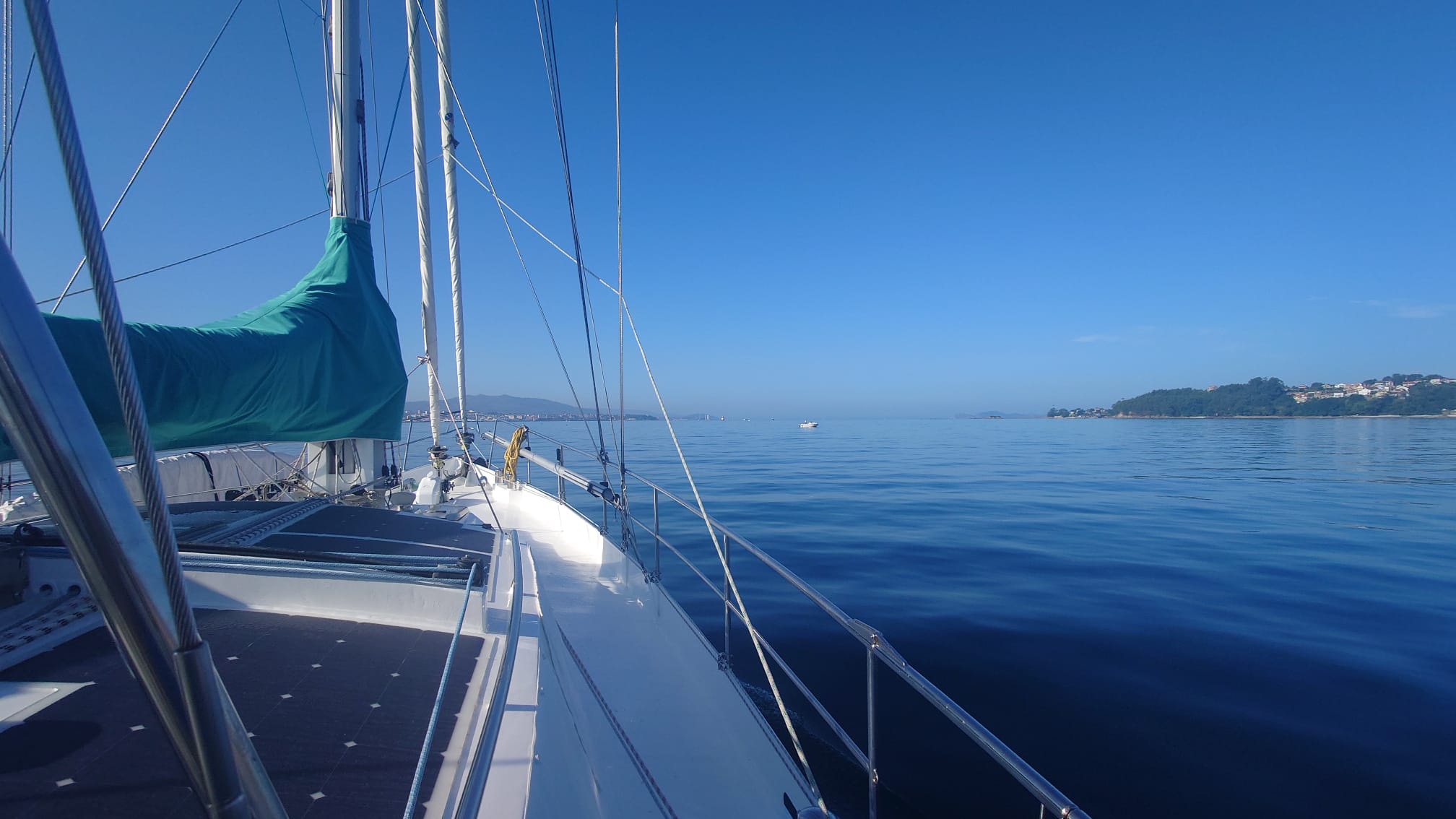
There’s no wind. We head to Baiona, at the outskirt of the Ria de Vigo.
Motoring over a flat sea with no wind is a good opportunity to tweak the settings of the PY Pilot.
Result: we’re not zig-zag-ing any more. The heading stays within -1 to +1 degrees, sometimes it increases to 2 degrees. Excellent!
There’s a beautiful fortress with a walkway all around it. The views are gorgeous!






A walk through the small streets of the old town:

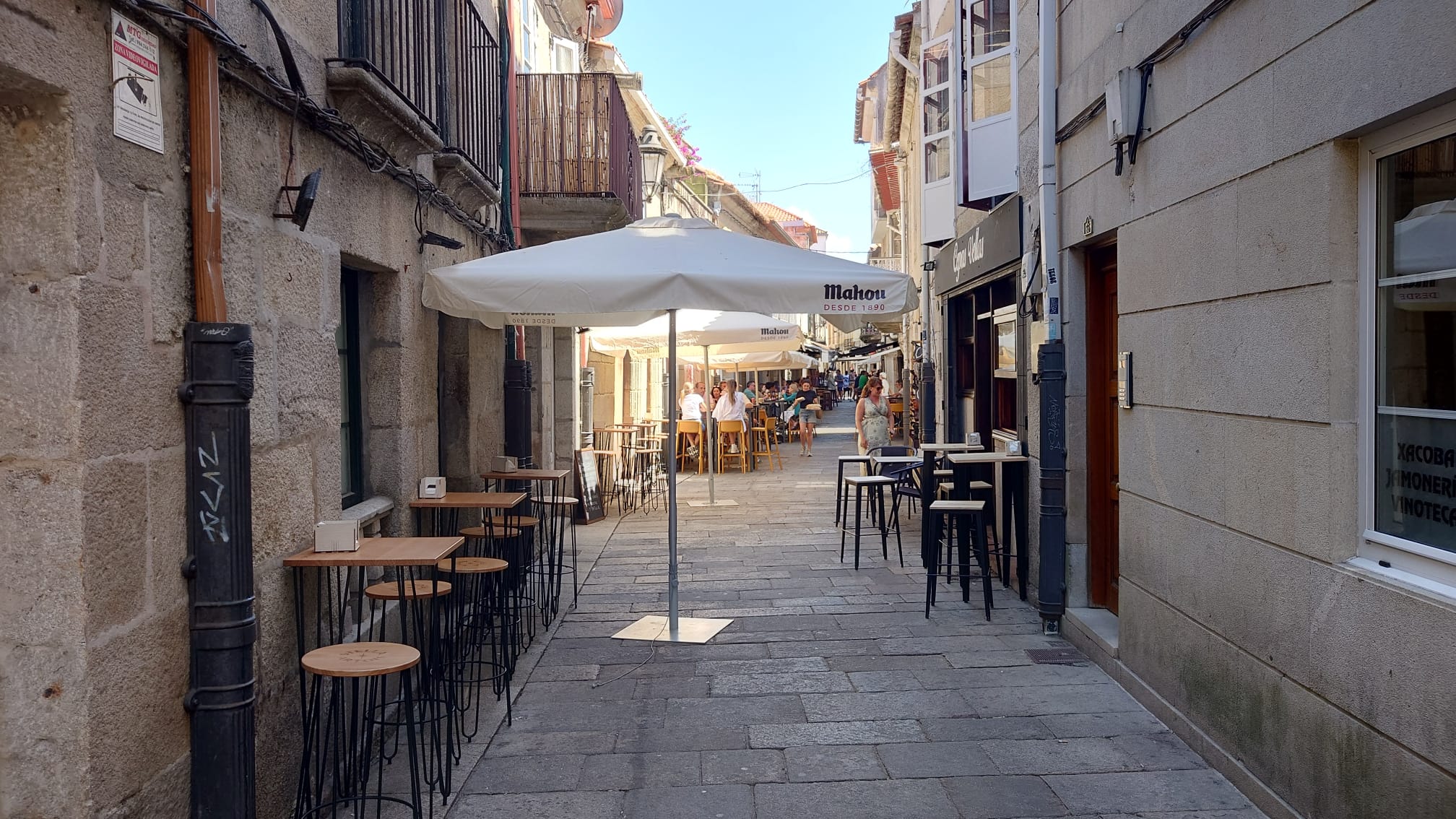

August 21.

It sits in the middle now, to fit the Sailrite next to it. But we had to raise it a bit, to fit over the table pedestal.
Funny, it was a the right corner first, but now it’s in the middle, the bass sounds much better!
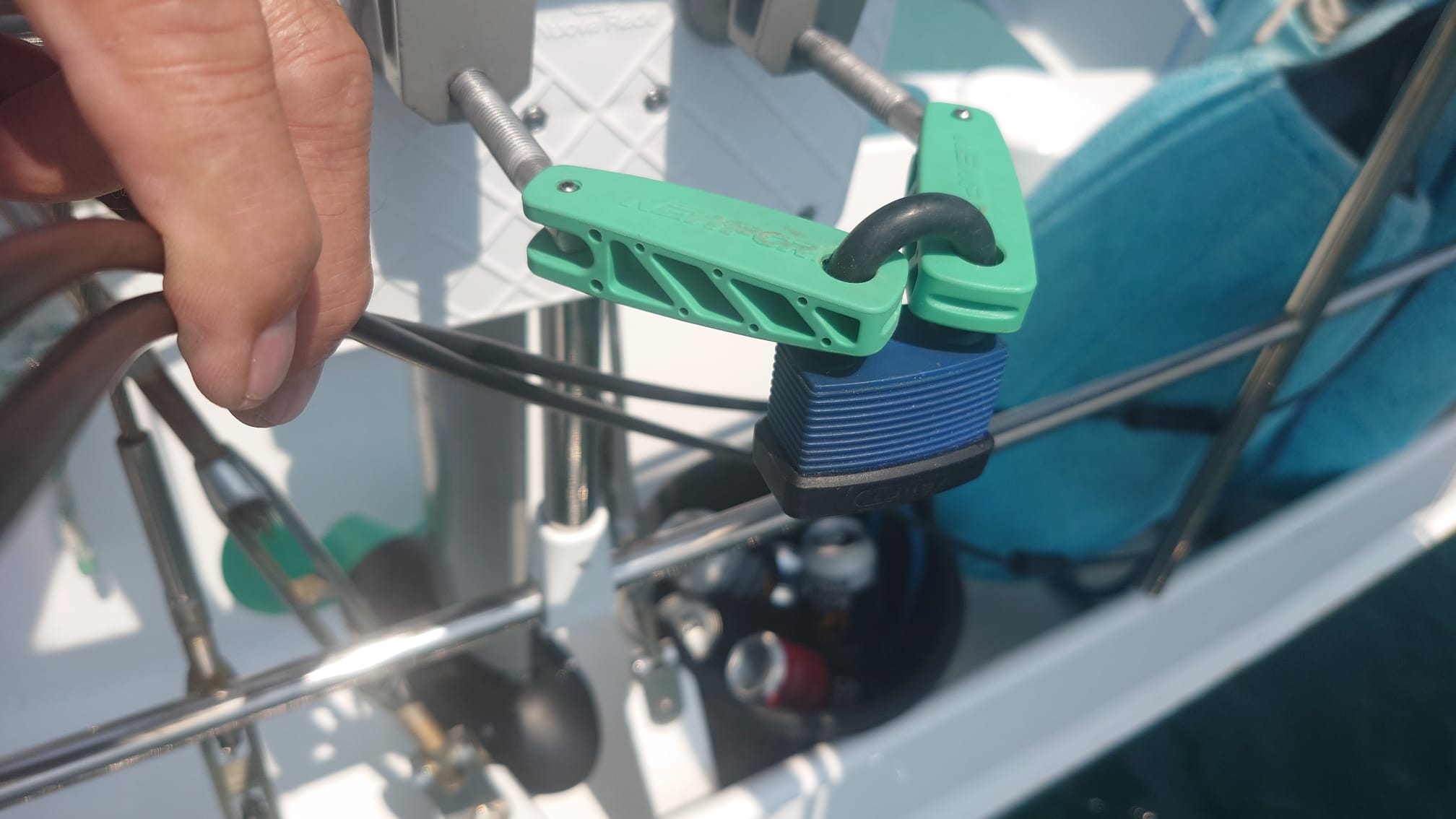
We had to add the new electric motor to our insurance policy. Only insured when it has a lock, the insurance company says!
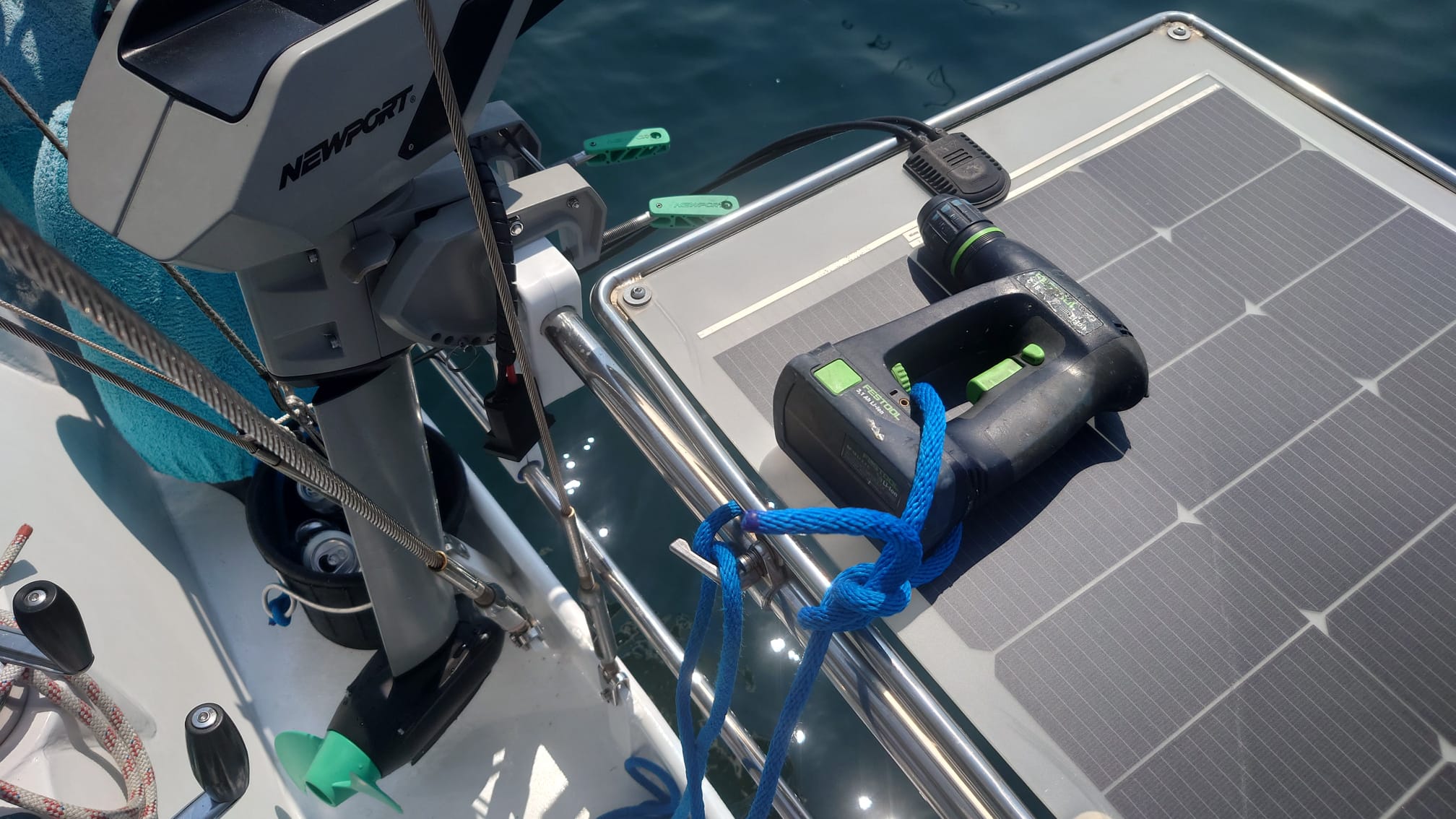
So, Wim drills holes in the handles so that a lock fits through them.
Drilling machine secured, when drilling outside the railing… Expensive lesson learned in the past…😏
August 22.
Our last sunrise in Spain 🫶🏻. Today, we will leave our beloved Ria’s and head to Portugal.
We have been in Spain since last year October 5th. That’s almost 1 year ago.
We have been in the Ria’s since February 5th. That’s almost 8 months.
We have enjoyed every minute of it. Yesterday evening, we said to each other: there has not been a single moment in which we said: “Pfff! Let’s get out of here.” On the contrary, every time we departed from a spot with a little pain in our hearts.


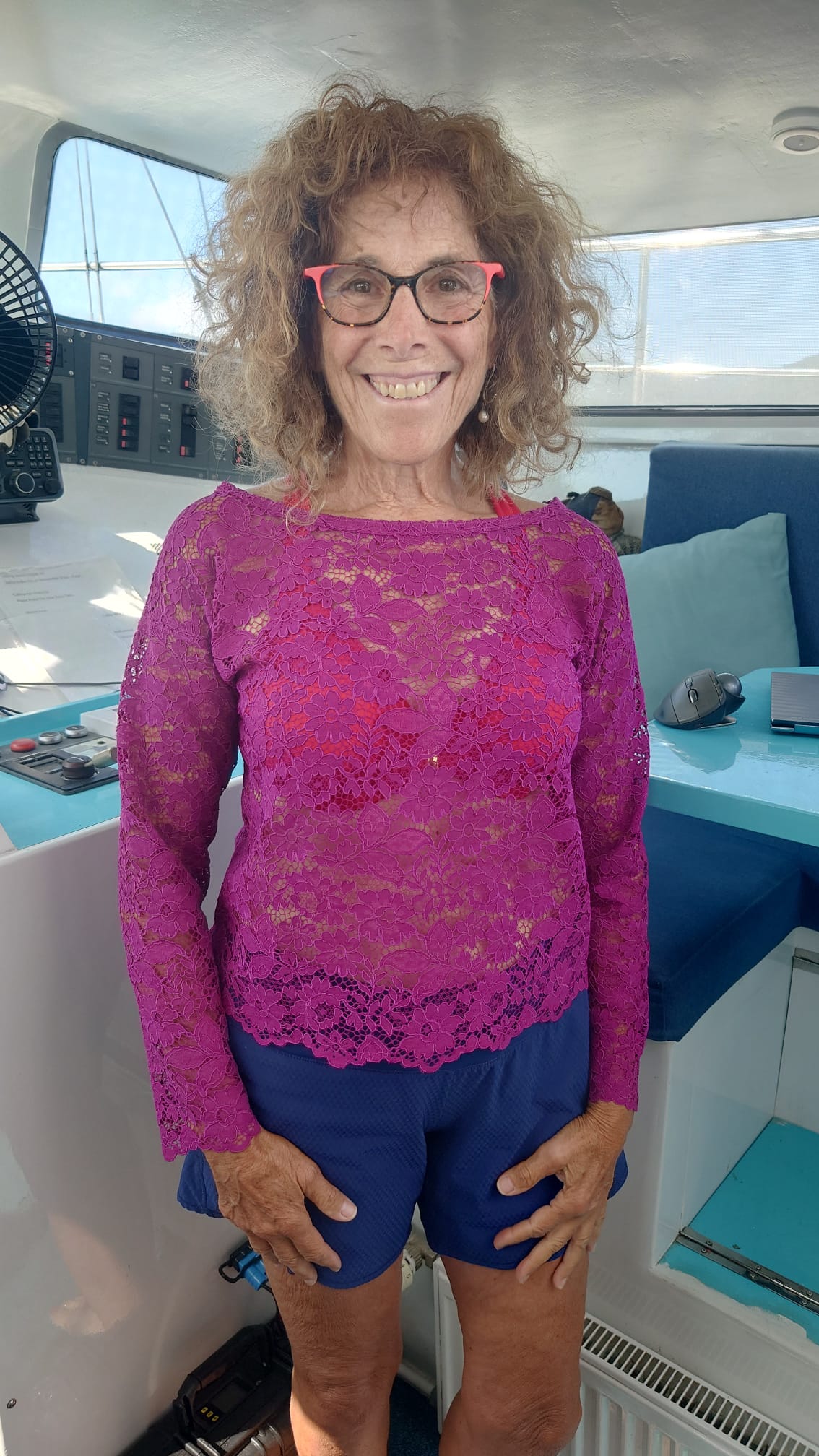
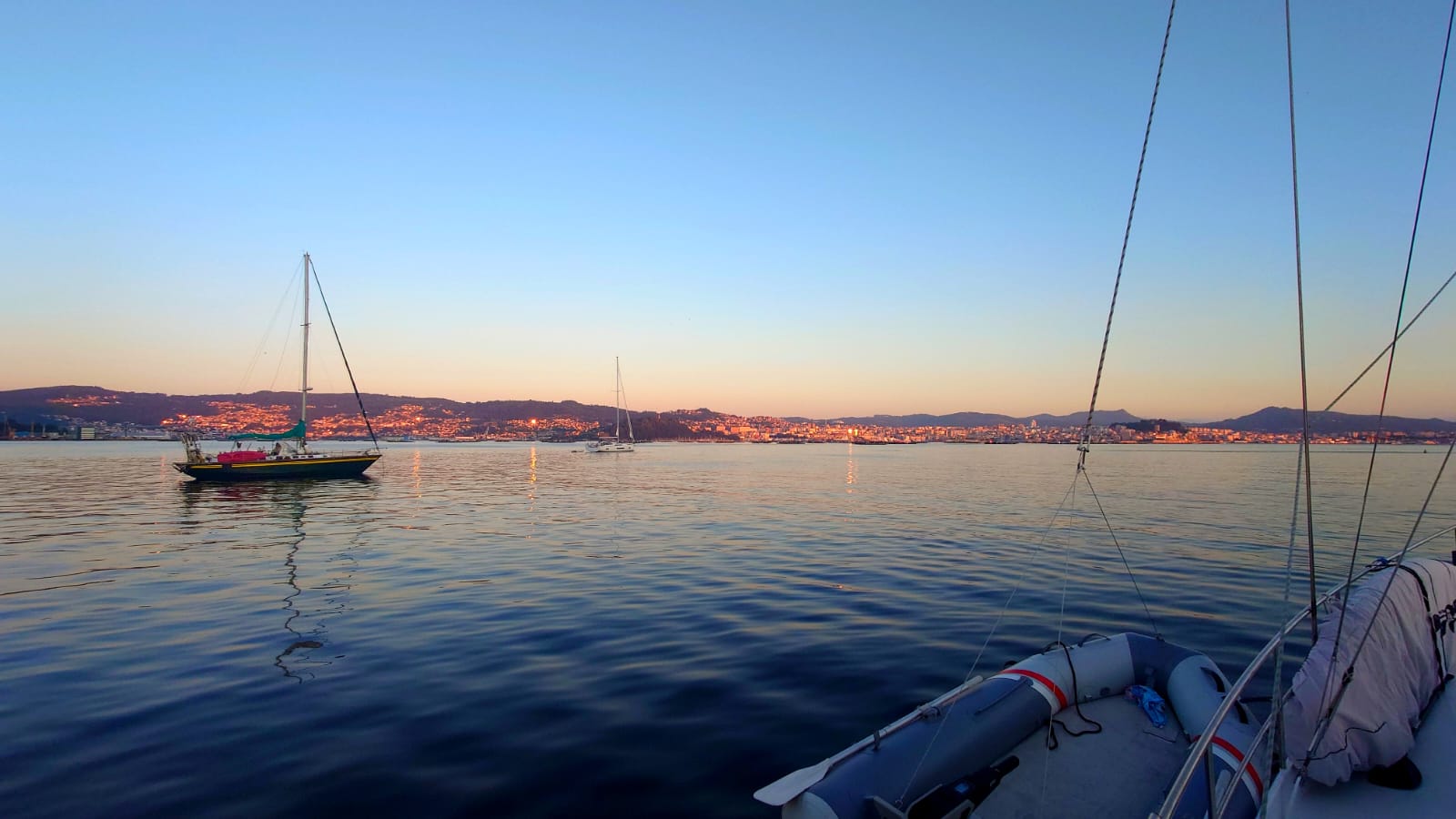
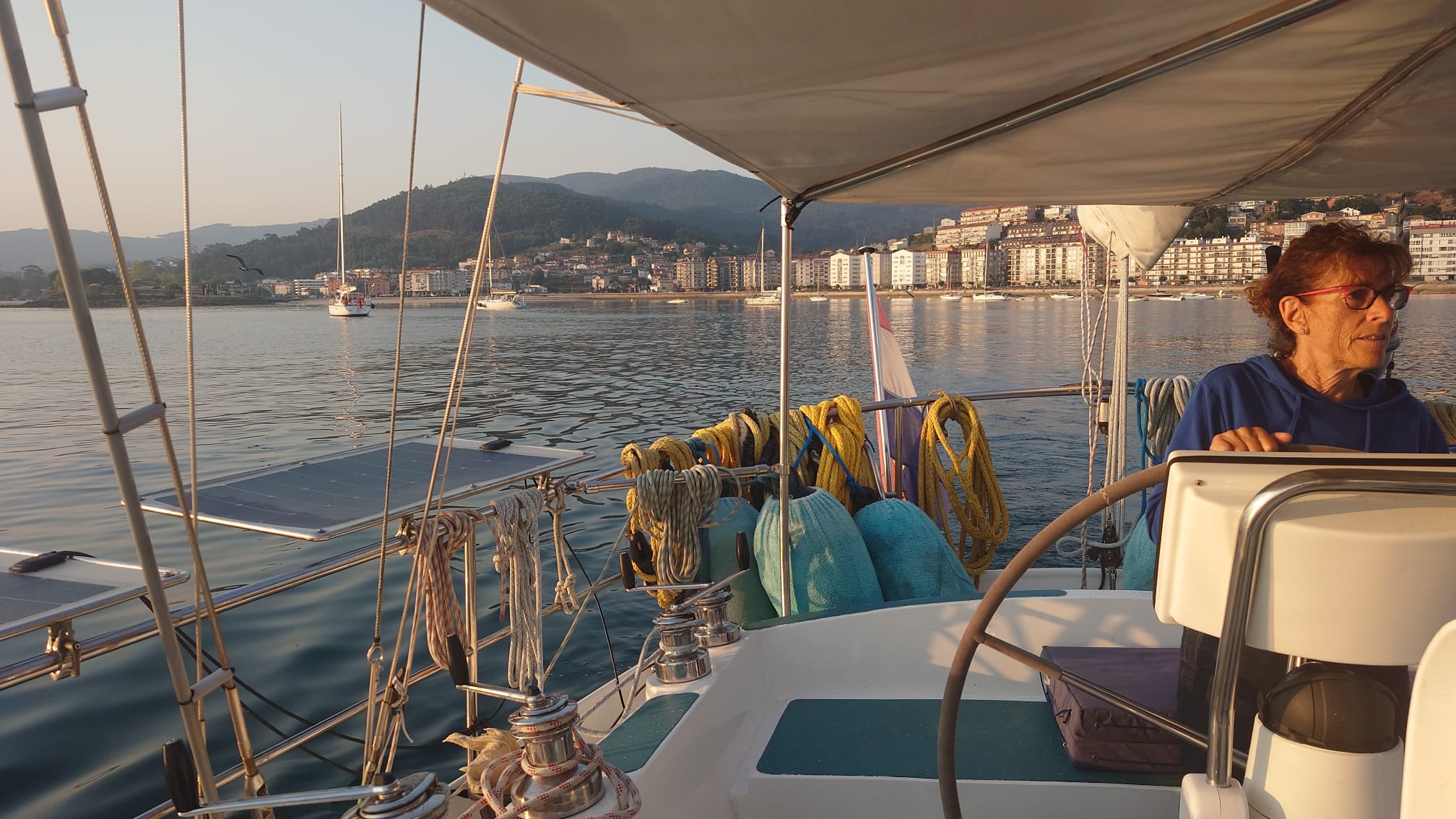

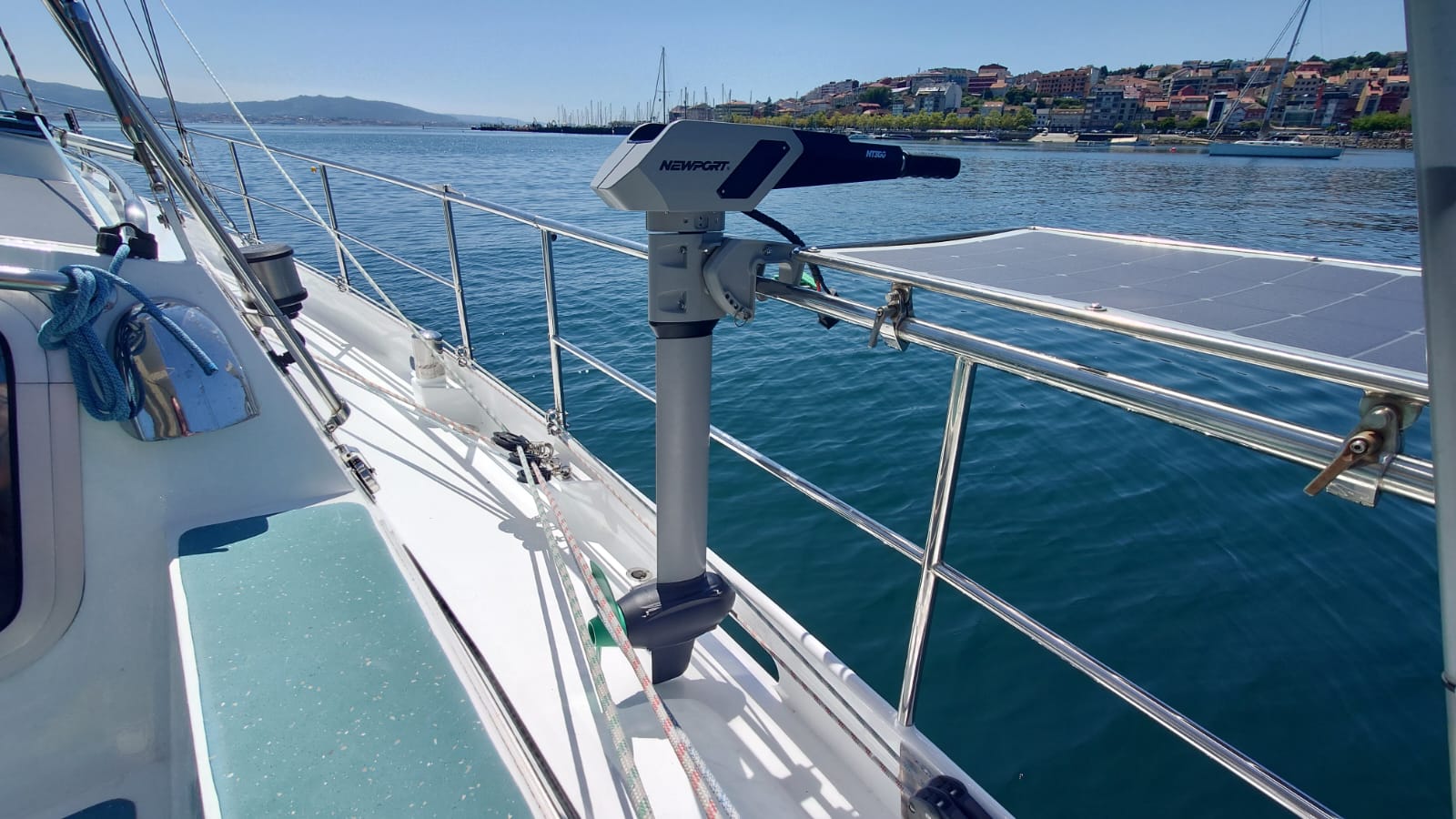
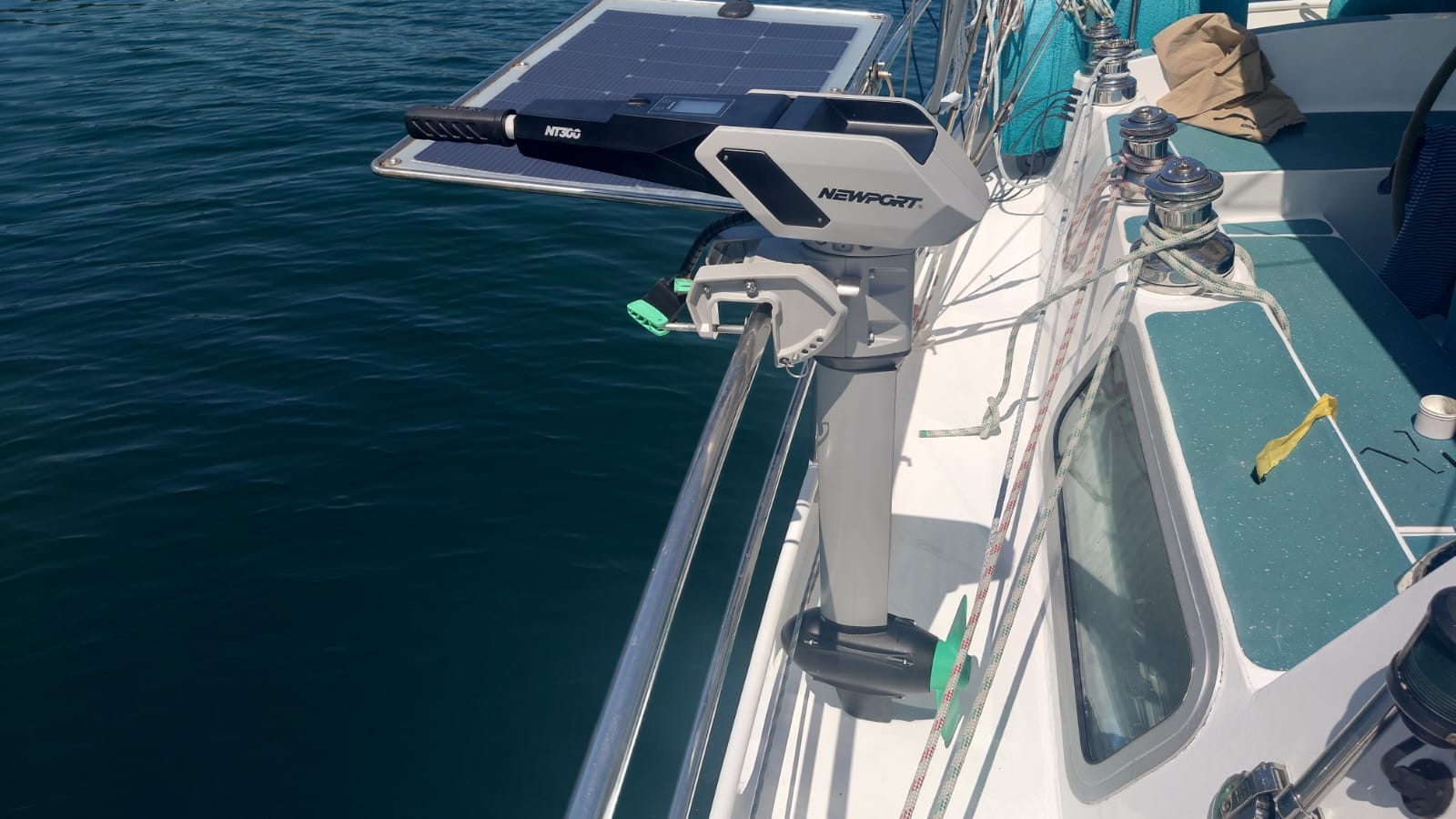

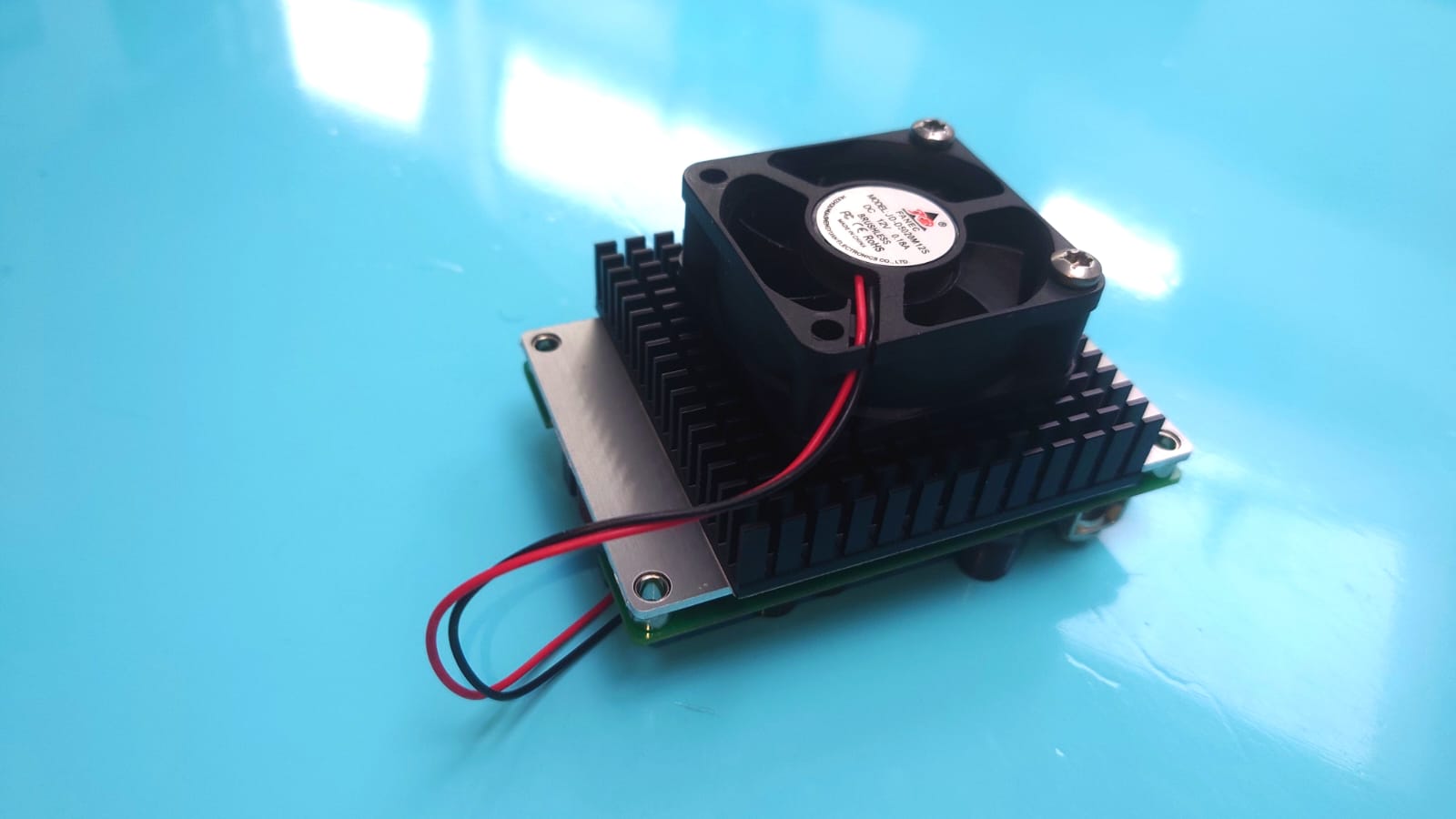
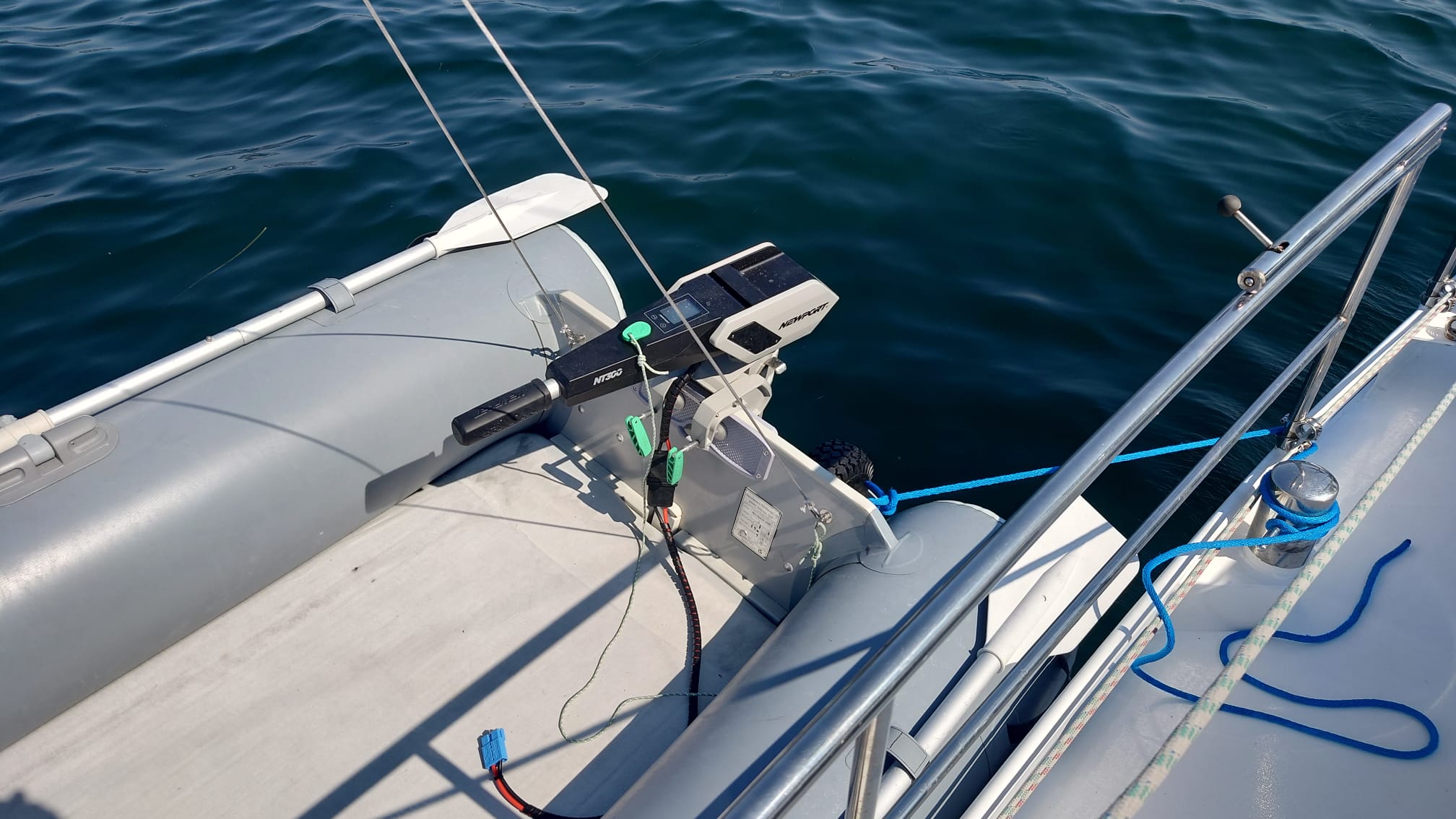
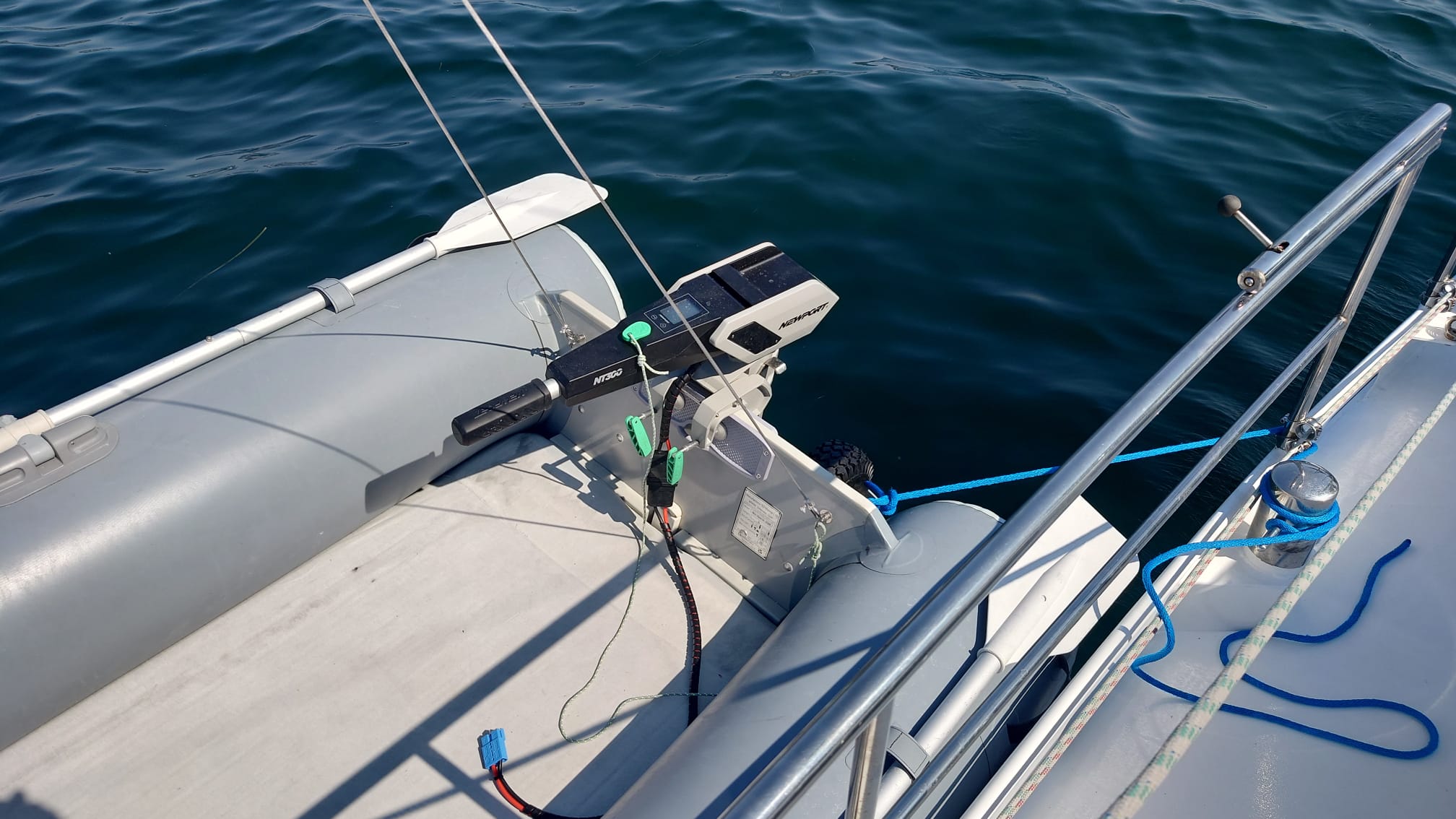
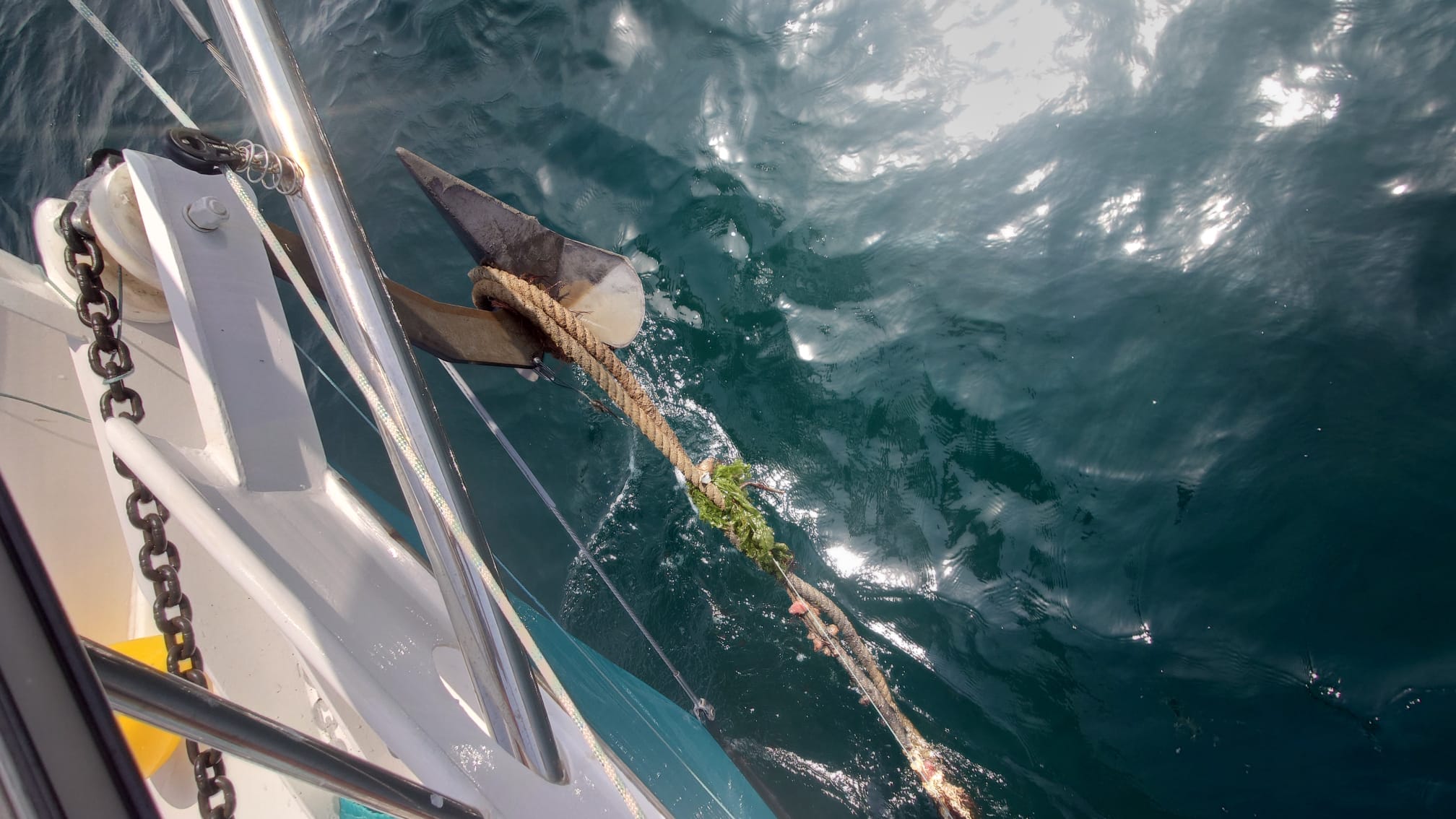
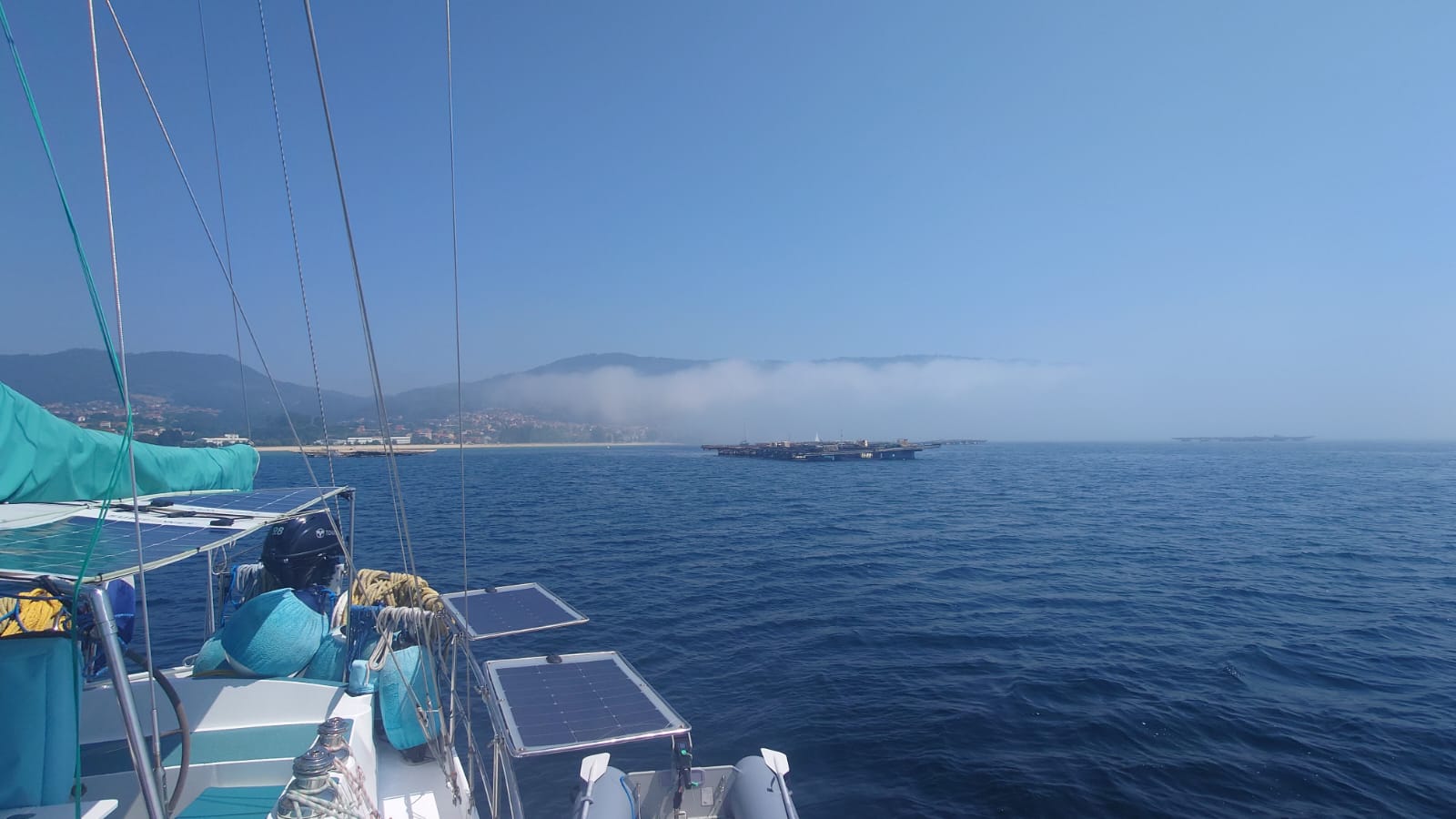

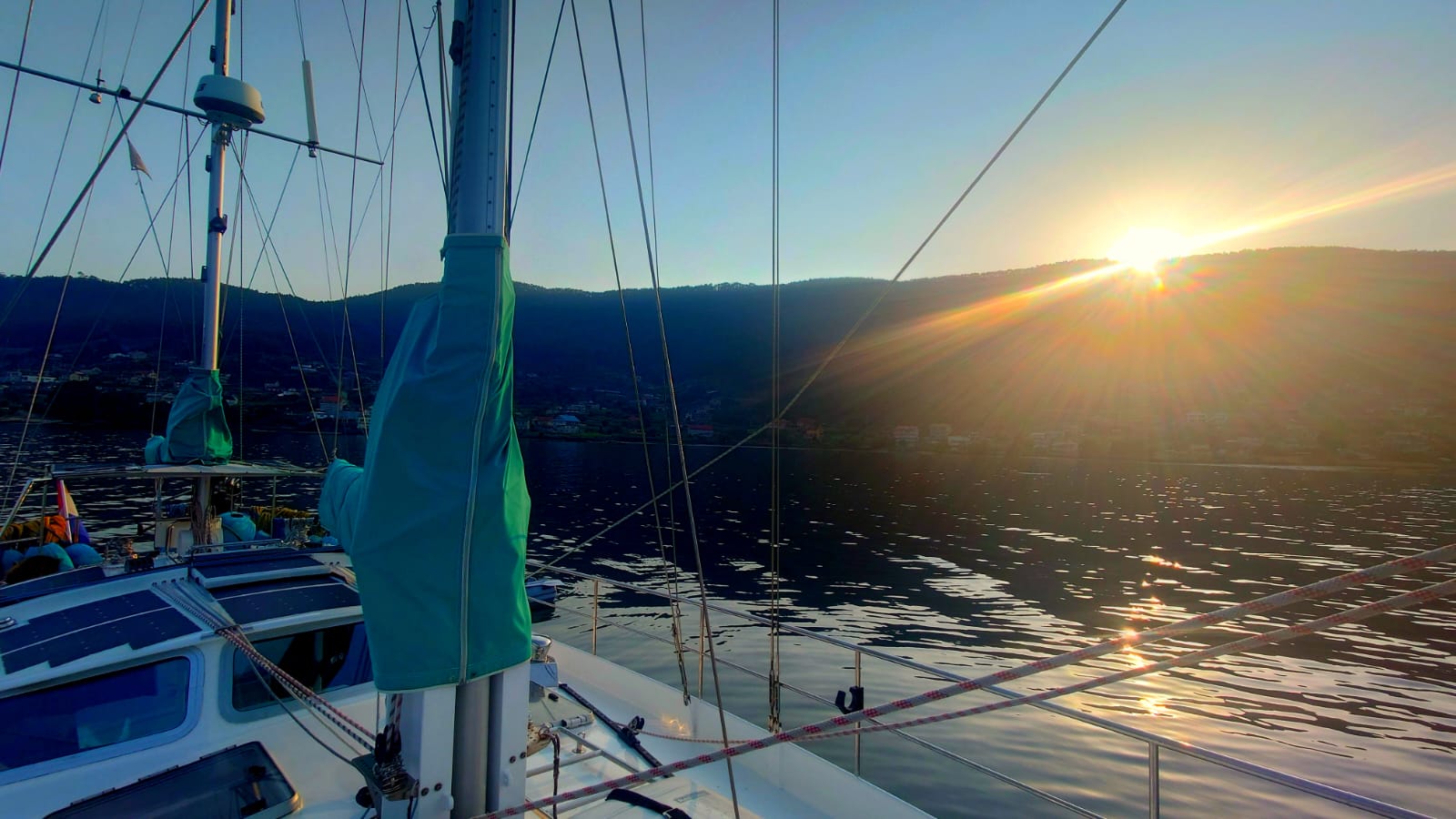
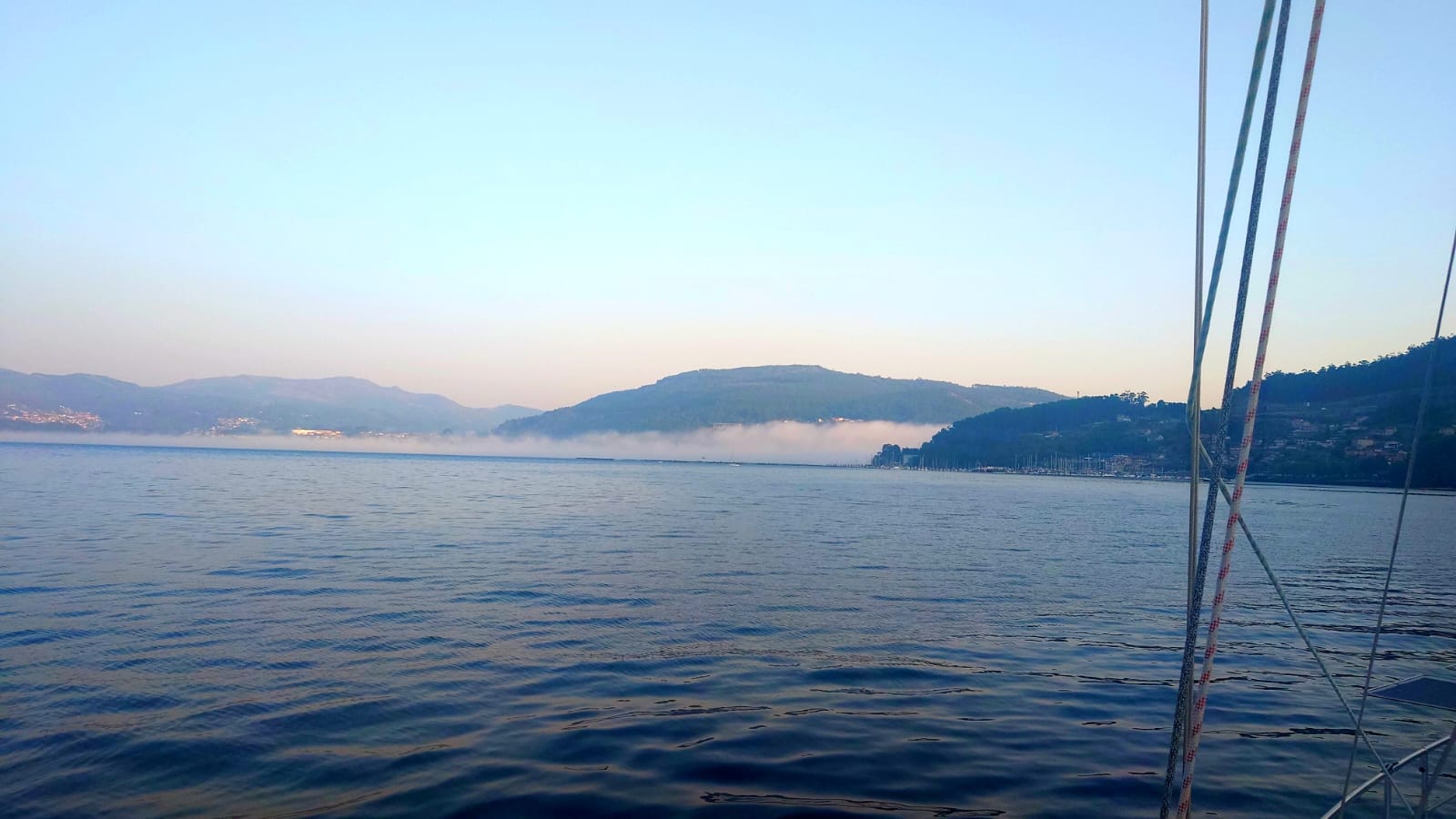
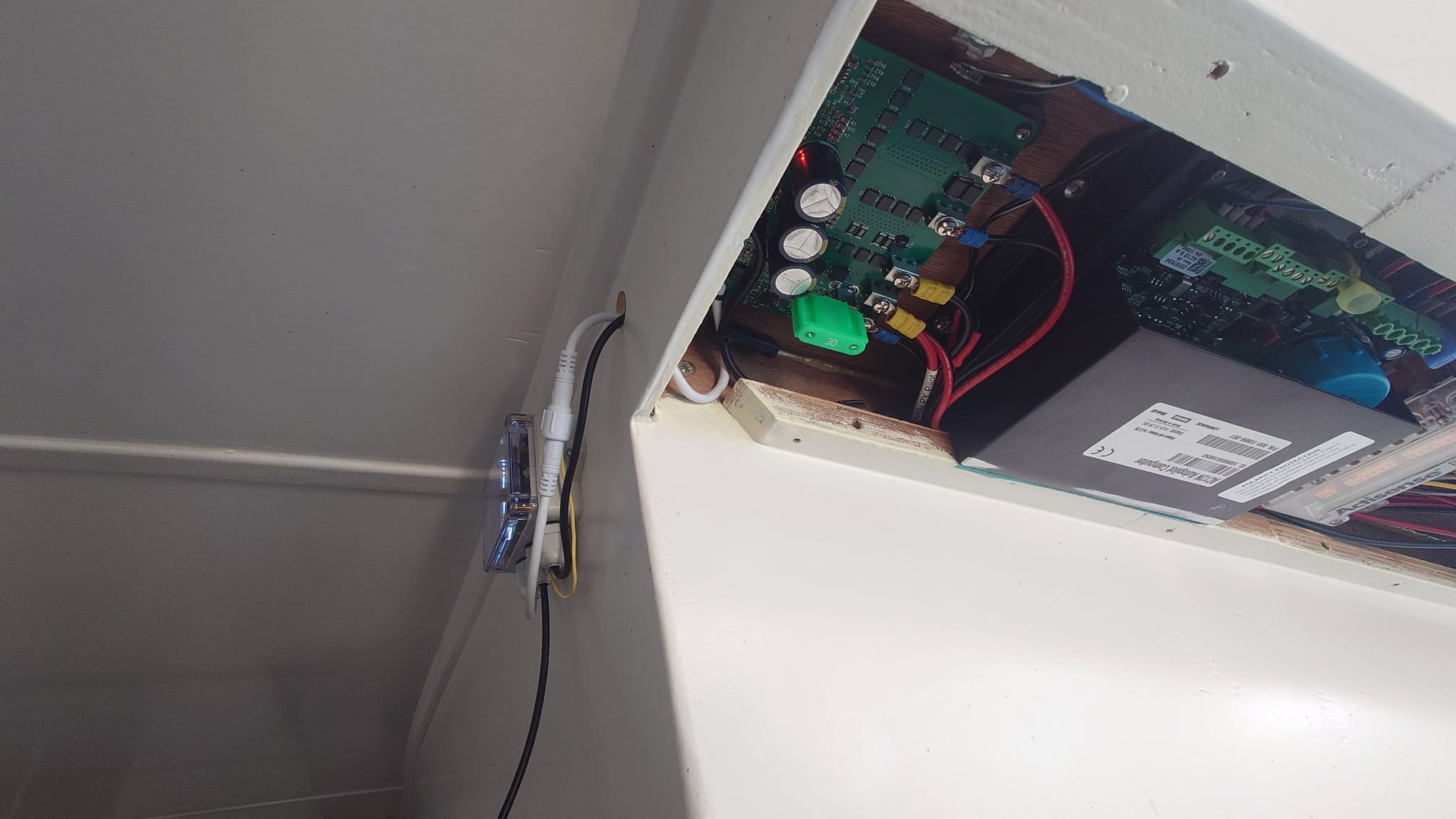
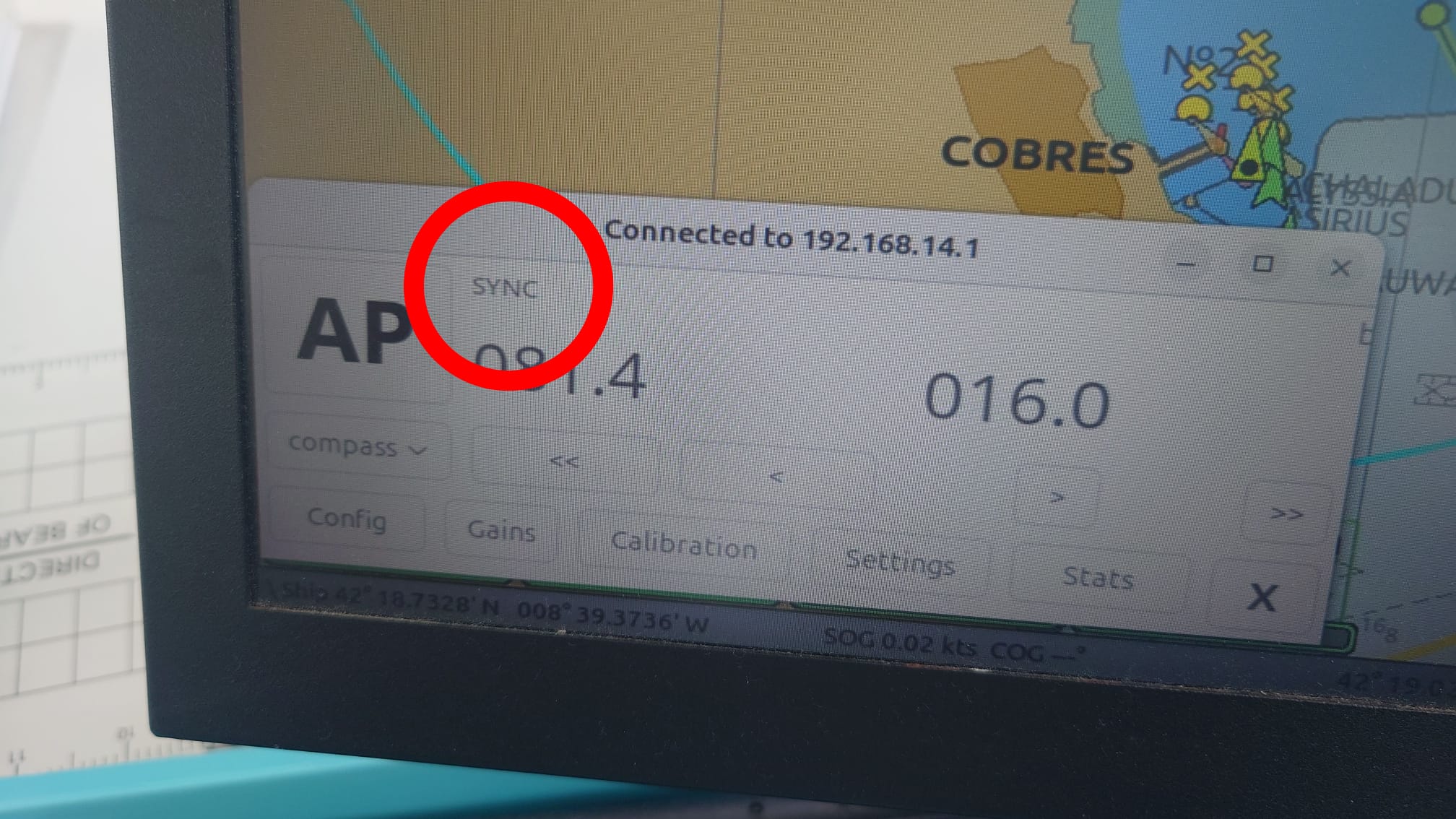

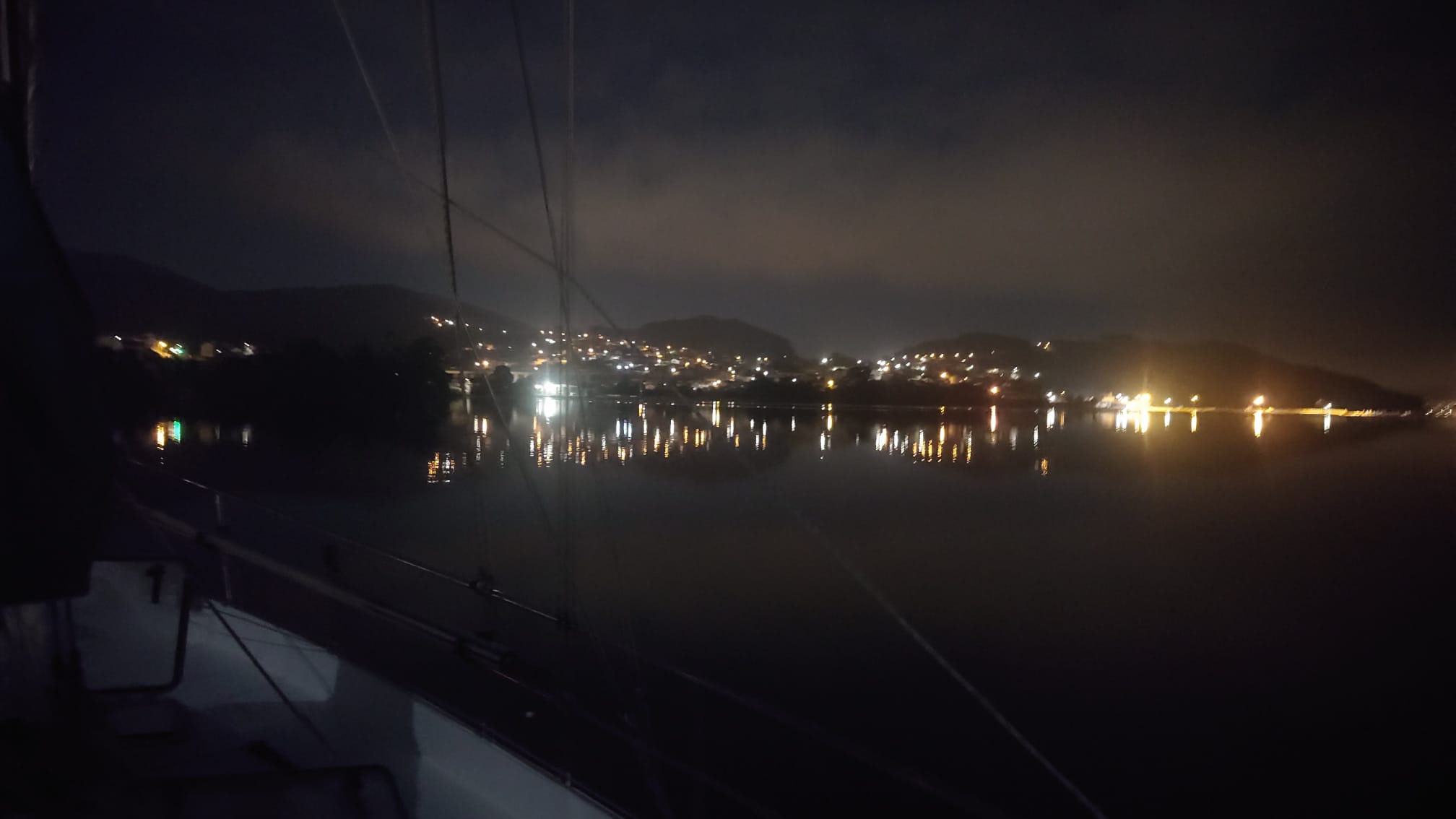
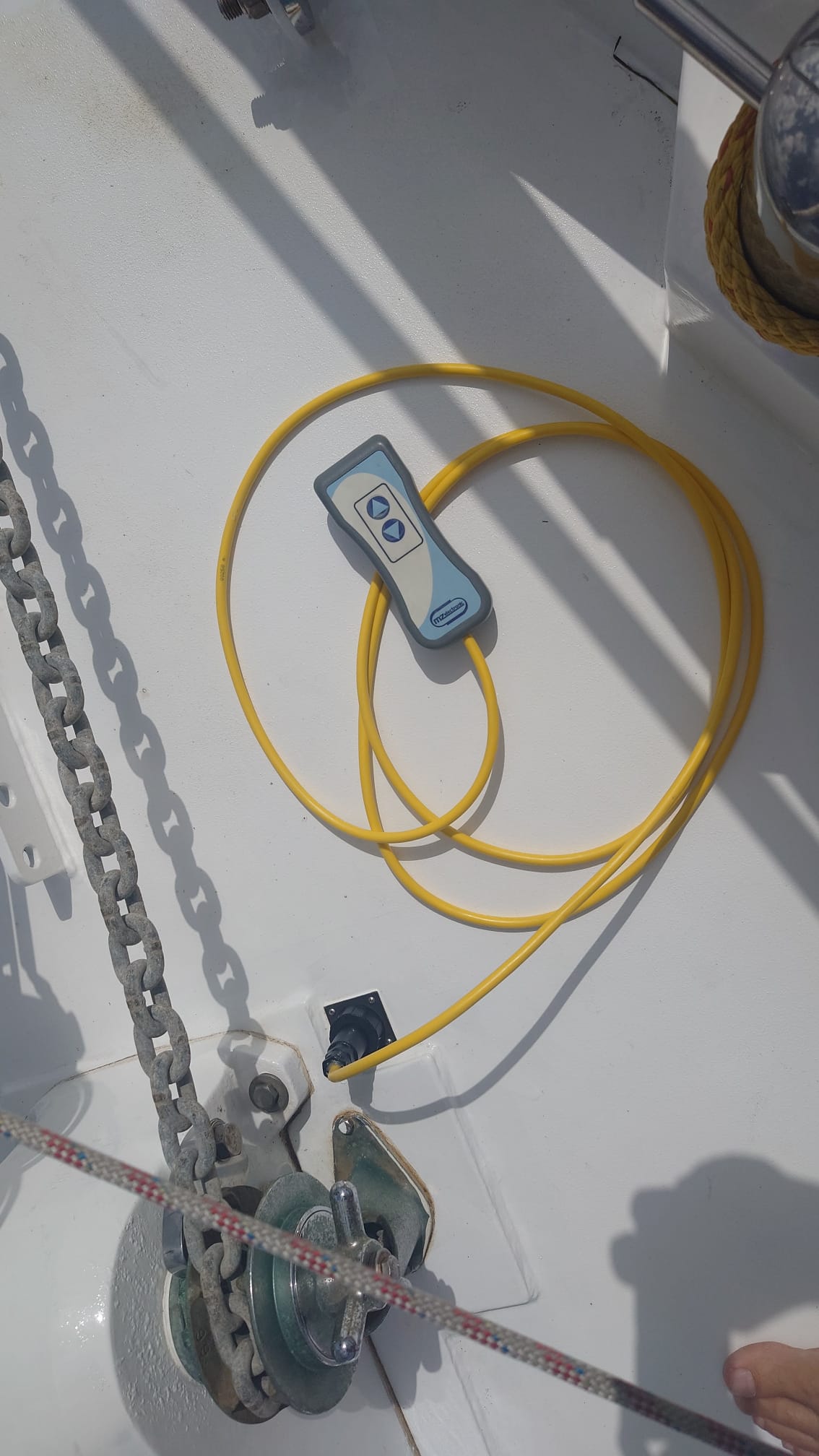

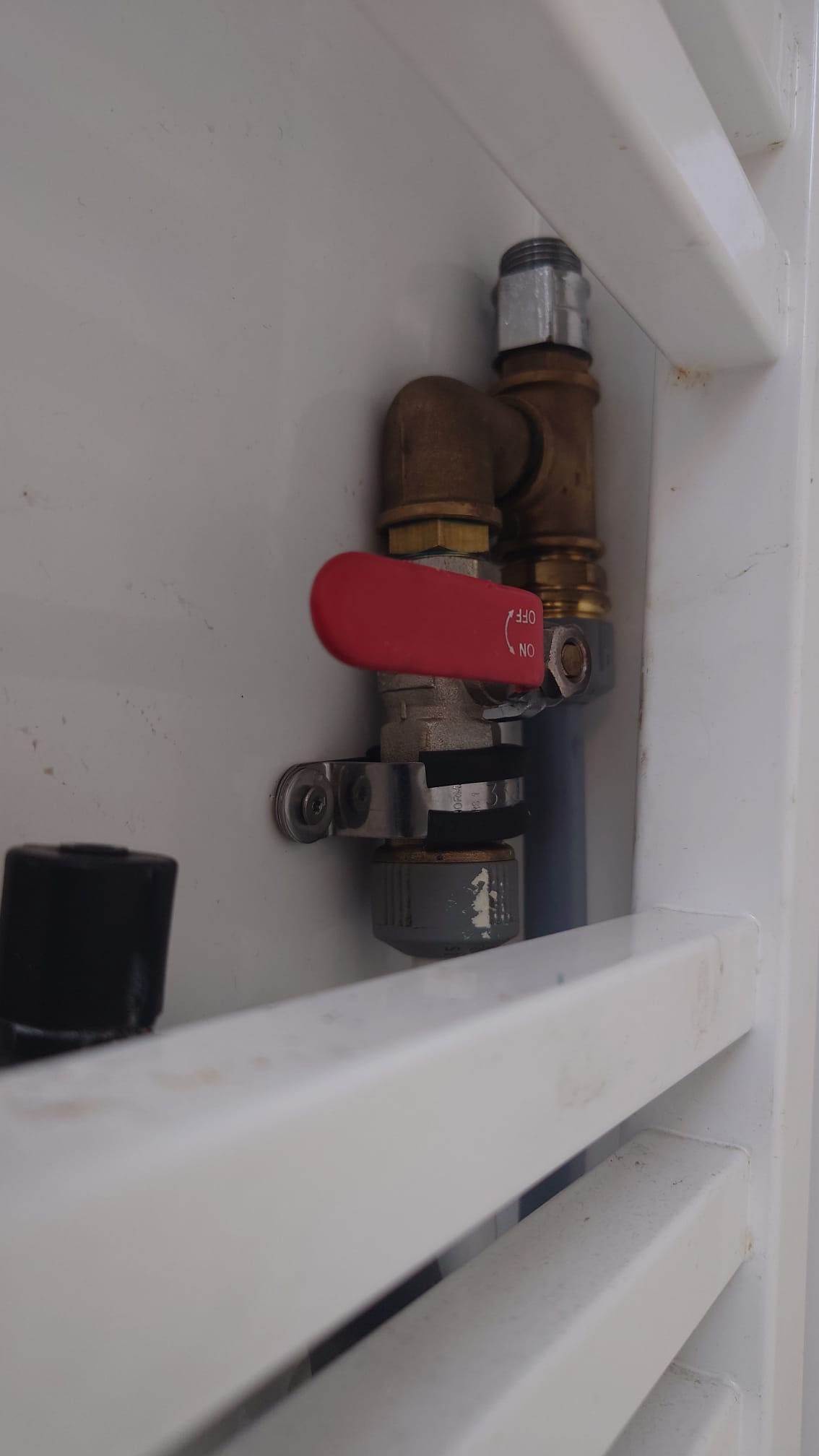

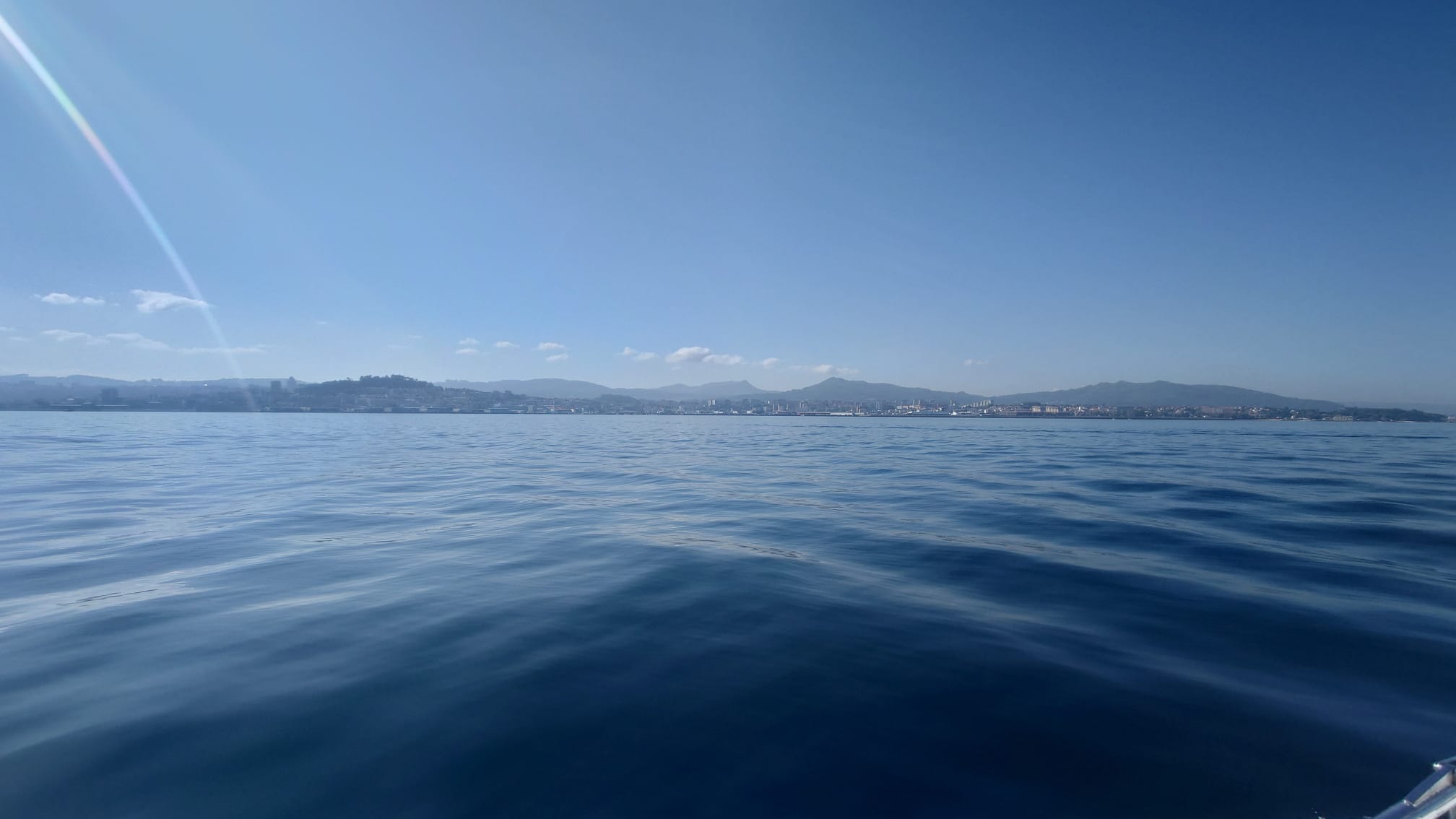
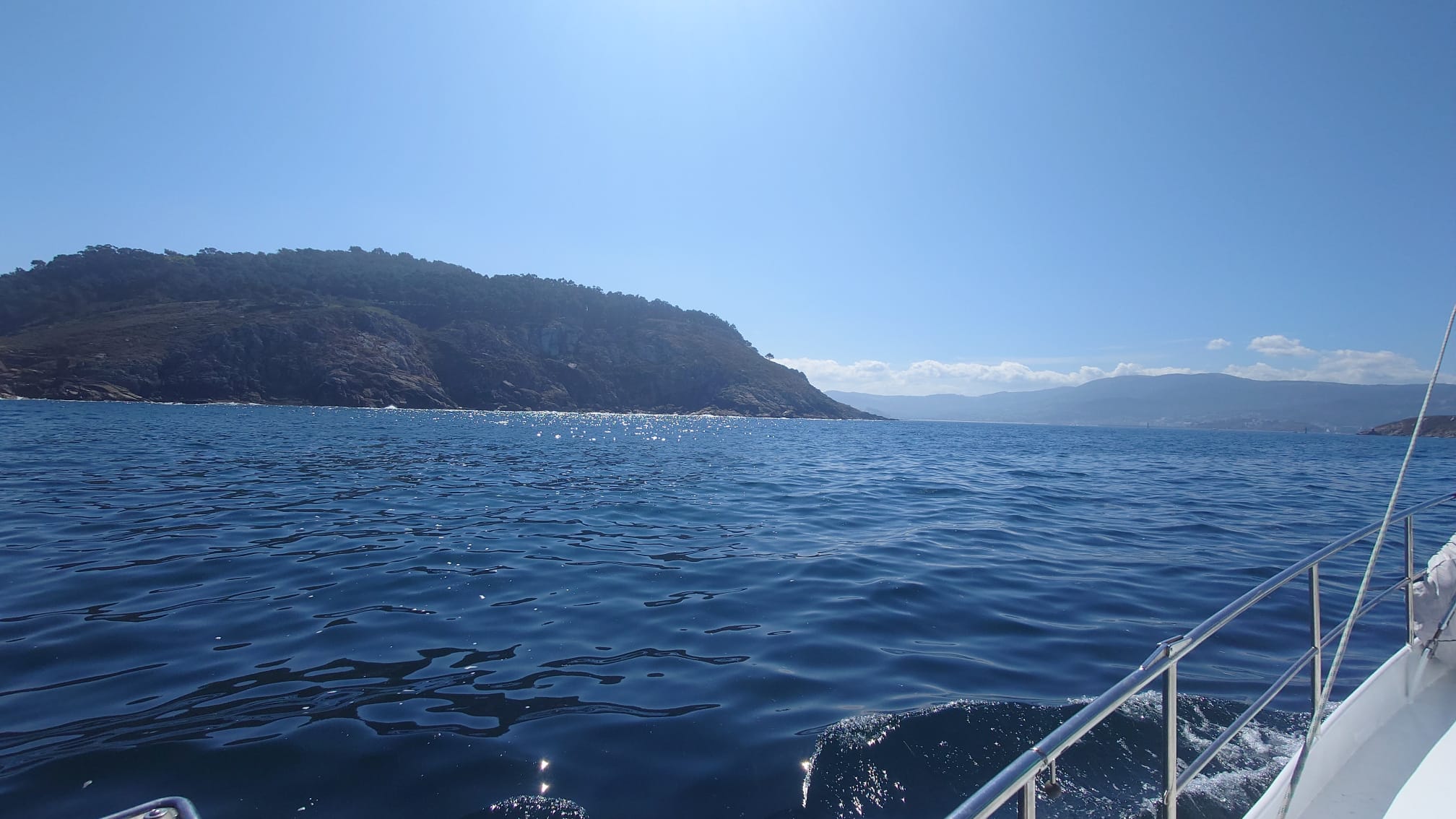

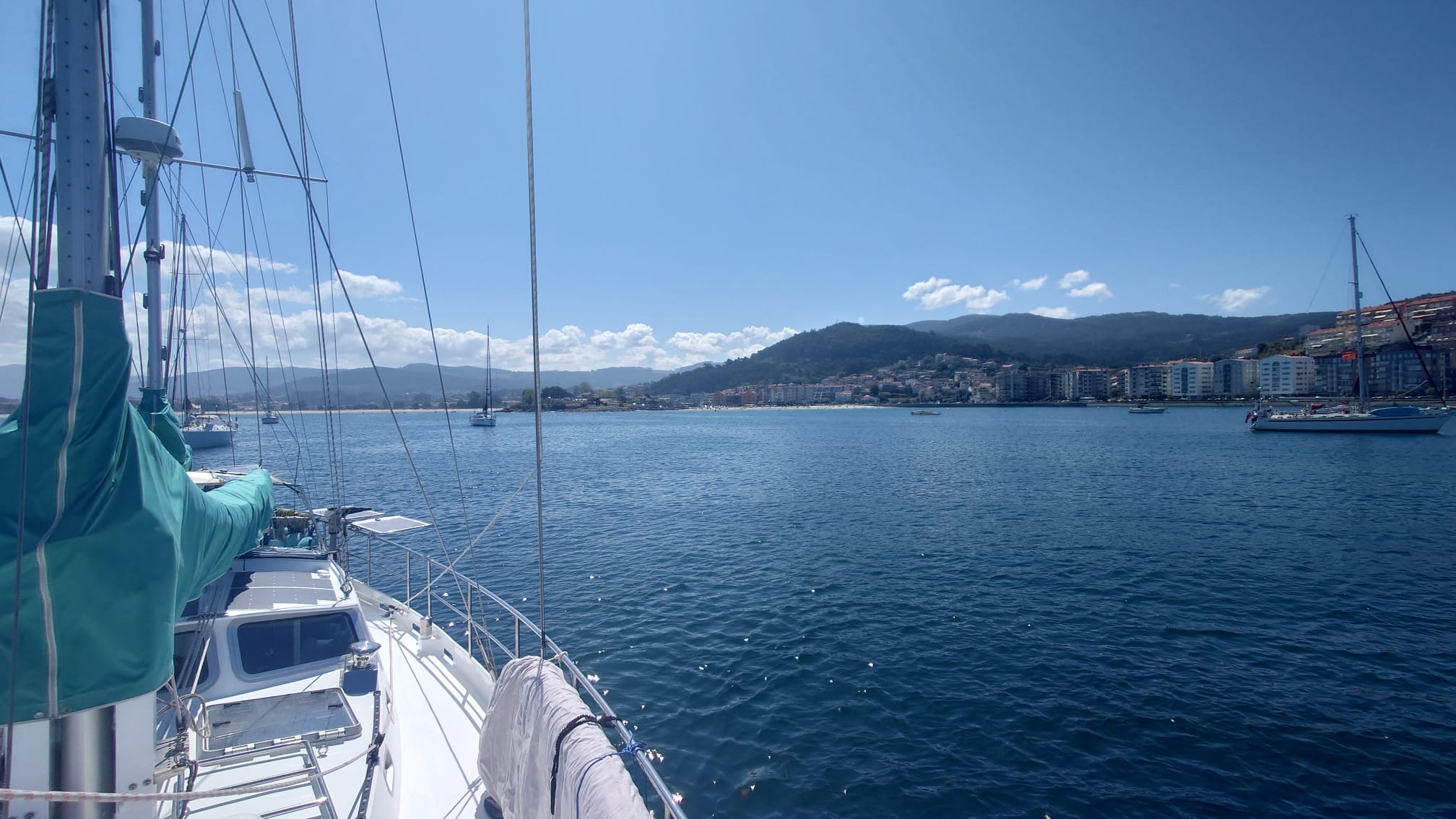
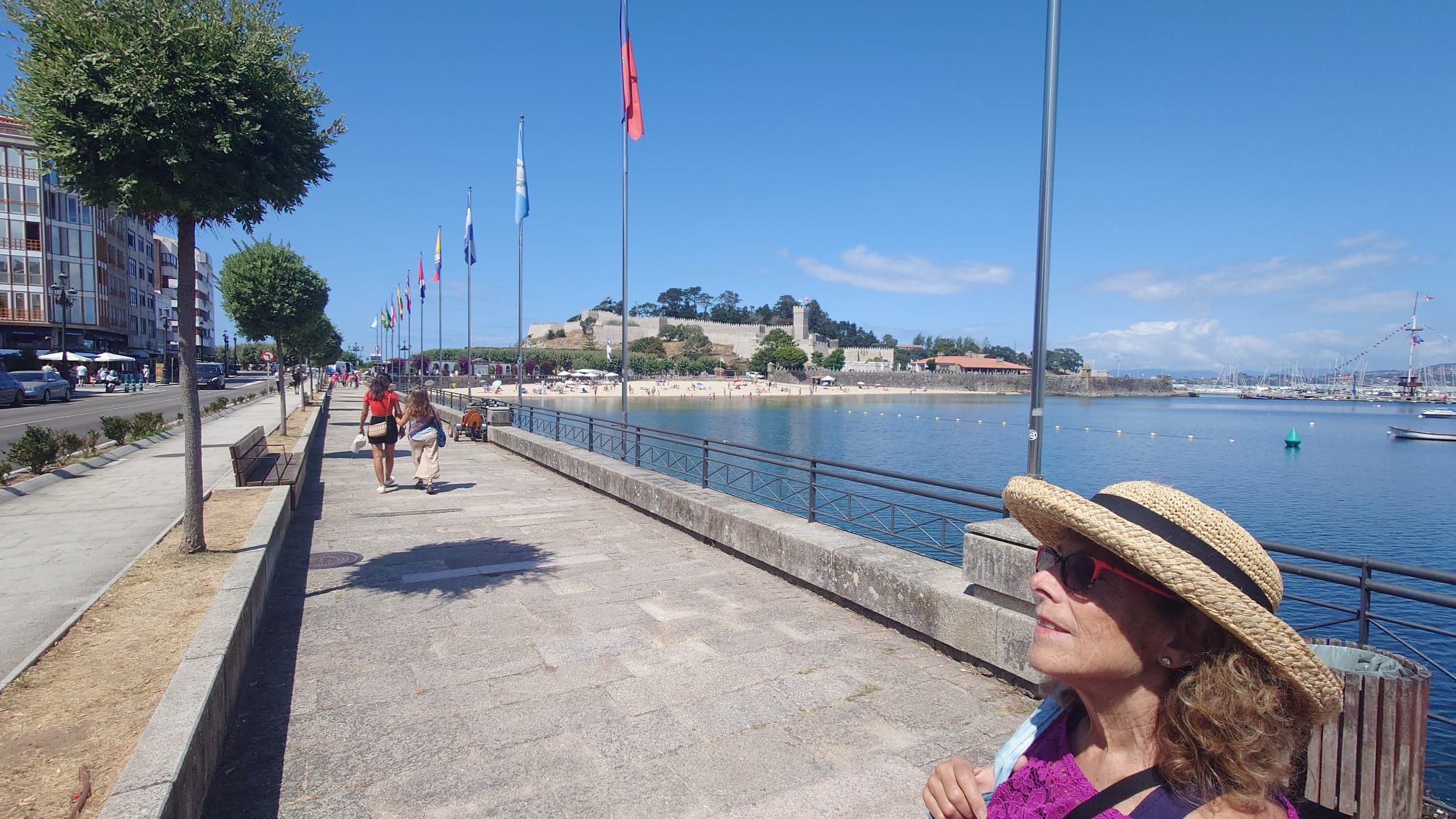
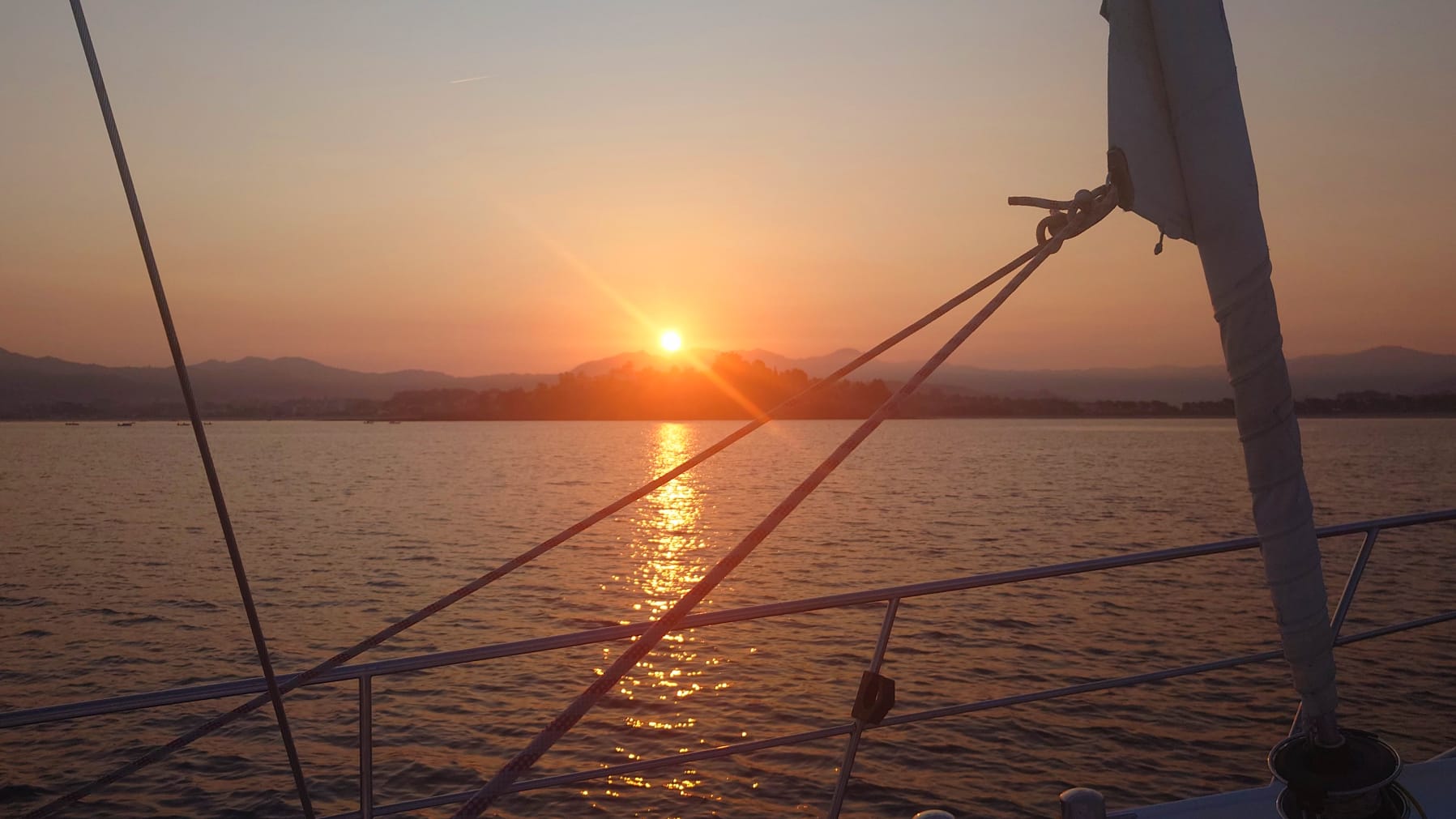

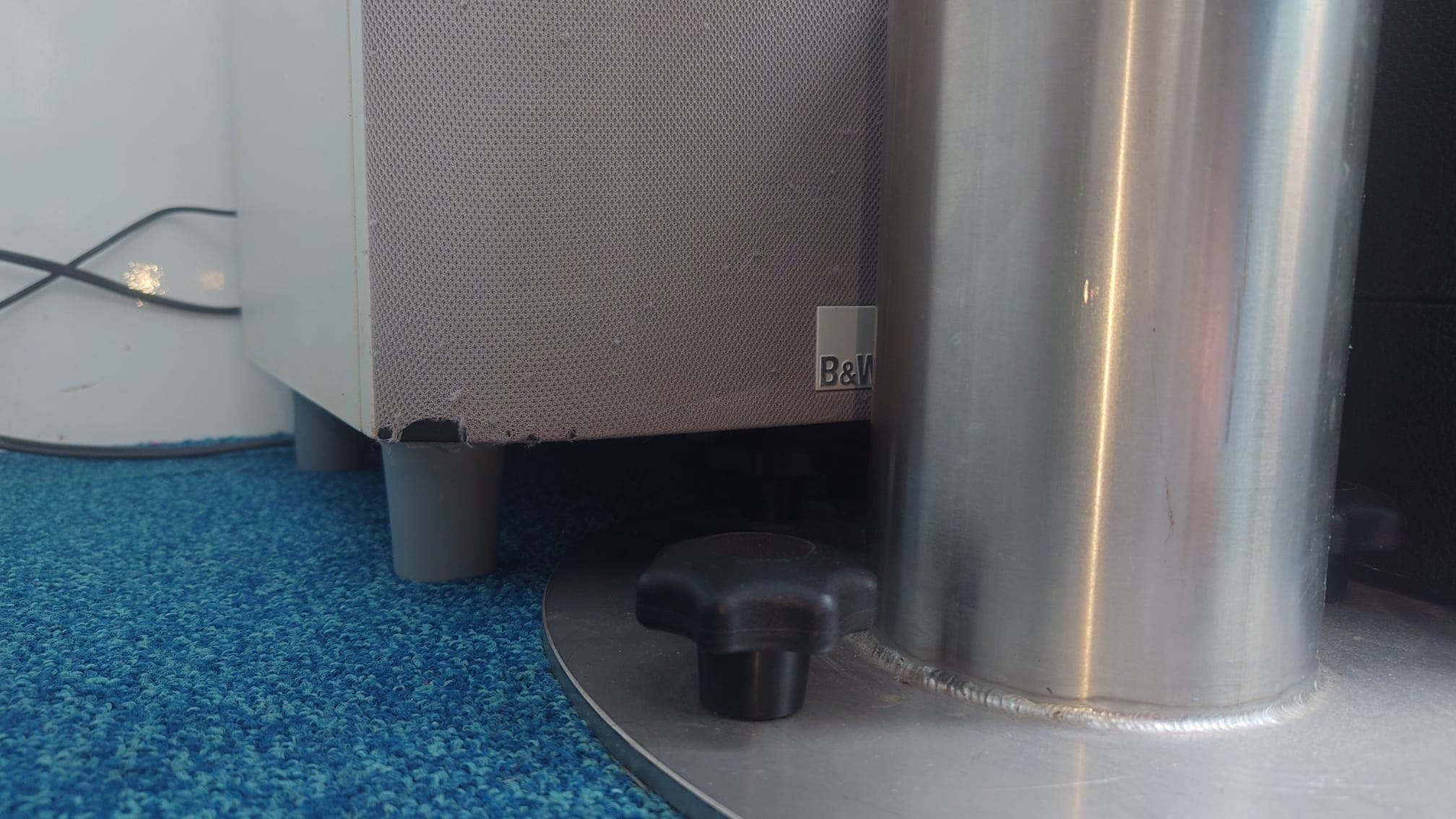
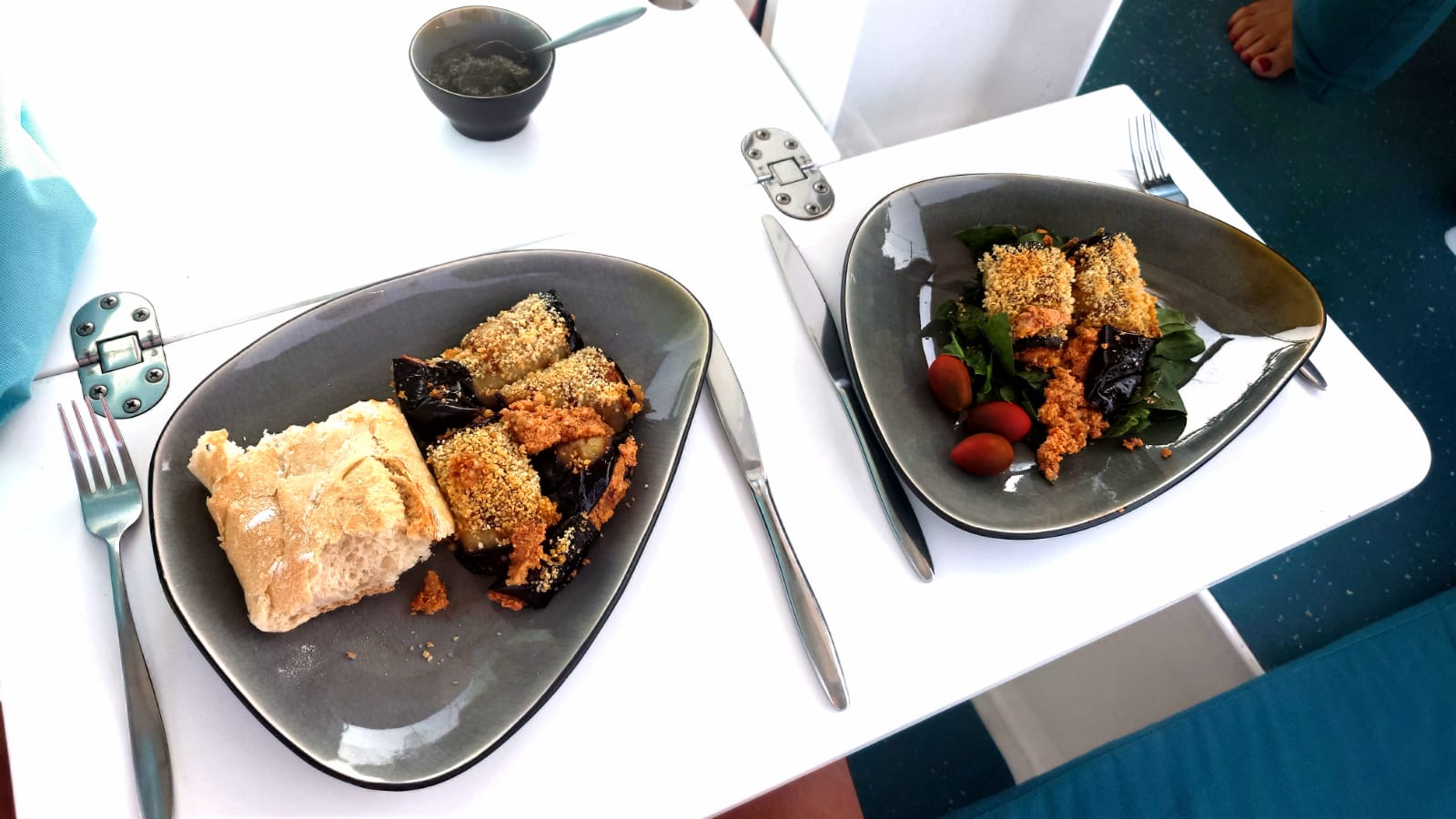
Leave a Reply